 Leading Blog | Posts by Category |
 Leading Blog | Posts by Category |
11.18.24

The Upside of Disruption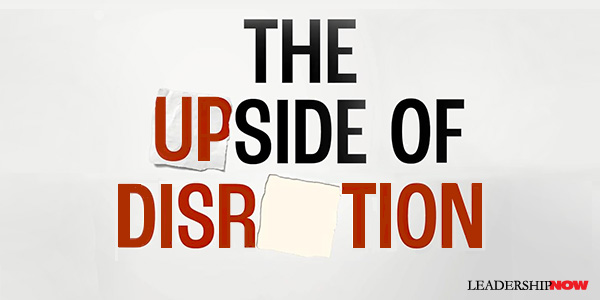
AS our recent history has shown us, disruption does not happen linearly. We can’t expect change to be an extension or an improvement on what we already know. As Terence Mauri puts it in The Upside of Disruption, we must rethink everything. “We can’t have resilient leadership without deliberate and sustained rethinking.” We become irrelevant, trapped in our past successes. Better questions are the answer to the now we find ourselves in. When operating at the edge of a new world, we must rethink old certainties, search for the upside, and ask what will evolve and what will not change because the untapped value lies there, too. The question leaders must now ask is, “Does our leadership deliver nutritional value through how we honor the past, define the present, and champion the future?” We can’t continue to lead with an Industrial Age mindset; rather, we need to adapt to an Intelligence Age mindset. The future is about a shift in mindset and related behaviors. To move our thinking out of the status quo and to find the upside of disruption, Mauri covers four critical areas leaders must address in themselves and their organizations. He refers to it as D.A.R.E. or Data, Agility, Risk, and Evolution. DATA – Lead with AI Data refers to AI-driven disruption. Embracing AI is a leadership priority but with a human-centric approach. “The more digital we become, the more human we need to be. The reimagination of mindsets, culture, and capabilities in sync with the rise of Al may be the leadership imperative of the twenty-first century.” Embracing AI requires a culture change. Employees should “feel energized and enabled to use AI as a co-pilot to do value-creating work and waste less time on bureaucratic misery work.” AGILITY – Great Leaders Unlearn Mauri defines unlearning as the capacity to reflect (humility), rethink (agility), and then renew (growth). It’s proactive, not reactive. “Half of wisdom is learning what to unlearn,” said science fiction writer Larry Niven. Unlearning could be the highest form of learning in a post-AI world. It’s the ultimate insurance policy against zombie leadership (dead leadership that fails to adapt to changing circumstances) and “enshittification” – a term coined by academic Cary Doctorow to describe the slow decay in everything we do. It is at the heart of every future-focused organization, allowing leaders to focus on accelerated growth and rethink outdated mindsets. RISK – The Courage Advantage The risk is in not having the courage to evolve. Adopt a contrarian mindset. “Willful contrarianism explicitly takes a point of view about the future that runs counter to conventional business wisdom and is a powerful antidote to the curse of sameness. Leaders courageous enough to adopt willful contrarianism are likelier to see the future first and hone a courage edge that helps them take advantage of disruption and seize new growth opportunities.” Our current mindset affects our ability to see the future. Mauri says courage and humility are inseparable because there is no courage without vulnerability. Overthinking leads to risk aversion. EVOLUTION – In Trust, We Grow For some time, trust has been on the decline. Mauri encourages us to adapt the Trust Mindset and utilize its three dimensions: Who We Are (Identity), How We Work (Agility), and How We Grow (Scalability). The Who We Are question provides clarity. It is about values. But keep it simple. “Too many can be counterproductive. Values should be clear and meaningful and guide mindsets, behaviors, and decision-making about what you are and are not.” How We Work answers the question, “Are we empowered to work as adults, or is ‘fake empowerment’ the default? Empowerment means control over context and power over trust. It demands deference and erodes initiative.” Move from micro-management to continuous coaching. Be a leader of learning, not tasks. How We Grow provides a growth story that people can relate to and get behind. “When leaders honor past achievements, define the present challenges, and inclusively shape the future growth story, people don’t just feel included in the journey; they own their part of the future in a crystal clear and irresistible way.” We won’t succeed in the Intelligence Age if we are stuck in the status quo. We need a beginner’s mindset and the courage to make bold moves. Whatever the future holds, people will still want to thrive in human-led, trust-based cultures that combine meaning, choice, and opportunity over a lifetime. 
Posted by Michael McKinney at 03:14 PM
08.30.24

How to Survive, Reset and Thrive with Uncertainty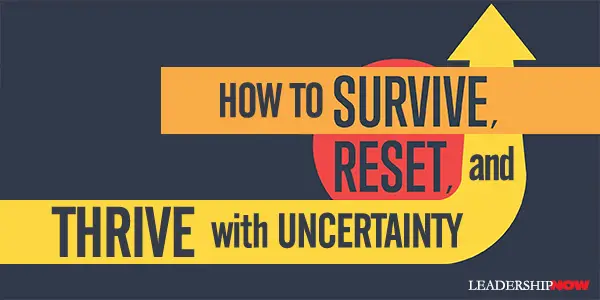
WE can’t predict the pivotal changes still ahead, but we can learn to make good decisions to succeed with them. And not just succeed but grow. Uncertainty is neither good nor bad, depending on what we are trying to do and how we are set up. We can’t make great predictions, but we can learn to make better decisions and look for the possible upsides. We may not be able to plan for uncertainty, but we can prepare for it. To this end, Rebecca Homkes offers Survive, Reset, Thrive as a playbook to help lead successful strategies through an unprecedented range of market conditions. Survive Reset Thrive is a loop. It is an ongoing practice. As you work through the process, you may need to go back to Survive before you Thrive to restabilize. Although it is tempting to think through this linearly, no organization will experience it linearly. It is important to keep in mind that your whole organization will not likely move through it at the same time. Managing all parts of the organization in the same way will not lead to success.
Survive Homkes reminds us that Survive is a part of growth and not the opposite of it. The question becomes, how do you stabilize your organization? A basic survival question to ask is: “Based on current expenses, current linear growth rate, and cash on hand, will the company continue to profitable if the current growth rate does not increase?” If not, you are default dead. More companies are “default dead” than they realize. They are assuming third- or fourth-year bump in growth numbers as the basis for their decisions. But what happens if that assumption is challenged? What happens when a shock triggers a movement into Survive mode? Reset The power of the Survive Reset Thrive loop is in the Reset. And working with this concept is at the core of the book. Reset is the power move. Reset means change. You won’t get to thrive without a powerful reset. How do you update and change your strategy for the changing market conditions? Reset is a revisit of these six key questions that together make up your strategy story:
Thrive In Thrive an organization begins executing an adaptable strategy. Often, the hardest part is to get moving waiting for everything to be in place. Execute with agility. Agility allows you to make good decisions quickly and learn as you go. Homkes talks about learning velocity. If you learn faster, you will grow faster.Getting to Thrive takes what I call disciplined flexibility. This phrase sounds like two contradictory words thrown together, but this is true of most high growth principles. Disciplined flexibility means having a methodical approach that involves testing assumptions, verifying beliefs, and building trackers. And then when you have an insight, you must move quickly! To get to Thrive, you must combine the rigor of developing and testing insights with speed of execution. What sets thriving, high performing organizations apart comes down to five elements that she calls BLAST.

Posted by Michael McKinney at 03:03 PM
05.20.24

Creating a Supportive Environment for Organizational Change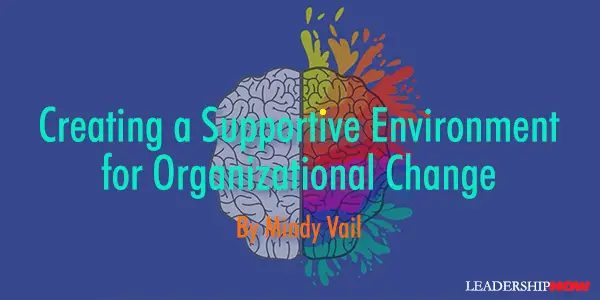
TODAY, change management is an integral part of organizational strategy. Yet, change in any form or context tends to challenge our sense of stability and security. Whenever new concepts, methods, or ways of thinking are introduced, they are bound to come up against resistance. Apprehension about the future impedes progress and undermines well-conceived change efforts. What’s more, in any change initiative, making assumptions regarding people’s perspectives toward a given change can undermine its success. Picture a runner at the start line of the Boston Marathon. While this runner is prepared to sprint when the starting gun fires, those further back are unaware that the race has begun and, given their position in the pack, will start out at barely a jog. In change management, assuming everyone is prepared at the same time to move at the same pace can result in miscommunication, resistance, and disengagement. When all team members that the change impacts haven’t been adequately informed or involved in the process, it leads to disparities in understanding and engagement. Effective leadership during times of change involves recognizing and managing one’s own reactions while also understanding and empathizing with the responses of others. It requires that leaders acknowledge employees’ struggles, facilitate open communication, and offer support. Conversely, turning a blind eye to these issues only erodes trust and morale. Successful leaders recognize their role in setting the tone, establishing the vision, and providing direction and support to their teams through a change initiative. They understand that their actions and behaviors significantly influence how change is perceived and embraced within the organization. It’s helpful to know that, despite their differences in approach and methodology, all change management initiatives share common elements. While guiding change demands a methodical strategy and meticulous preparation, employing a thoughtful approach throughout enables leaders to strengthen their own and their teams’ resilience. In doing so, they’re able to promote change not as a disruptor of stability but as a catalyst for the organization’s necessary evolution. To create a supportive environment for your change initiative, adhere to these eight recommendations:
 
Posted by Michael McKinney at 08:09 PM
04.19.24

Look Again: How To Bring Back the Passion You Once Had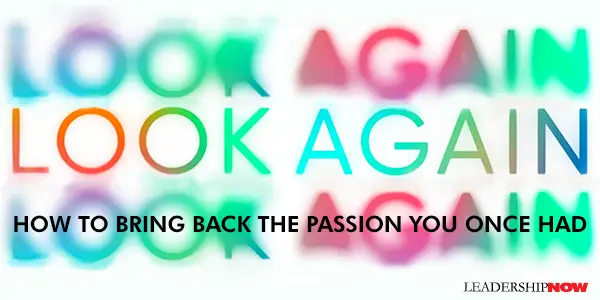
WE habituate everything. The more often we experience something, the less we respond to it. It’s the way we are built. What was once exciting—a relationship, a job, a song—becomes unremarkable after a time. Where we once saw the need for change, we now shrug off and move on. Our brain stops responding to things that don’t change. In Look Again: The Power of Noticing What Was Always There, Tali Sharot and Cass Sunstein ask what if you could, to some extent, dishabituate? What if you could once again appreciate what you now take for granted? How do we rekindle the love we once had? How do we become passionate again about changing ourselves or situations we now accept as normal? Habituation works for us and against us. We need to habituate some things, but not everything. Habituation to the good drives you to move forward and progress. If you did not experience habituation, you would be satisfied with less. Relationships need time together and common experiences to grow stronger, but they also need some independence to keep the spark. As the saying goes, too much familiarity breeds contempt. (For what it’s worth, Mark Twain added familiarity breeds contempt—and children.) We need some stability and sameness—some predictability—in our lives, but without some change, there is less learning, less growth, and less meaning. But we tend to stick with the status quo—the old and familiar—when we should be mixing it up, “even when it is possible and better to try something different.” Variety will increase the perceived goodness of our lives and trigger creativity. To maximize happiness, we should “chop up the good but swallow the bad whole.” Variety will increase the perceived goodness of our lives and trigger creativity. To maximize happiness, we should “chop up the good but swallow the bad whole.” Studies have indicated that “on average, you will be happier if you alter a situation you are thinking of changing; the very fact that you are considering a change implies that your current state is not ideal.” That doesn’t always mean leaving the situation; sometimes, it means putting more effort into fixing it. In short, “people are not making as many changes as they should.” When bad things happen to us, habituation has a part to play in our recovery—our resilience. Rumination hinders our ability to habituate when we need to. Processing a negative event and obsessing over it again and again does not serve us well. We need to turn our attention elsewhere. Rumination is typical of individuals suffering from depression. Many psychologists believe it causes depression. That is, an inability to let go of intrusive thoughts about failure, heartache, or minor disappointments leads to depression. When the COVID-19 pandemic began to slow down, surprisingly, many people did not feel joy but anxiety. People who previously could not imagine spending so much time at home, in part because they had habituated to working in an office, now could barely imagine working in an office, in part because they had habituated to working at home. Once we were habituated to being confined to our homes, “activities that seemed effortless before, such as getting up every morning and changing out of our comfy sweatpants into a dark blue suit, would now induce stress. We had spent months habituating to ‘pandemic living,’ as well as adapting our routines and expectations. Consequently, the prospect of changing once again filled people with dread. Change is hard because it makes us feel as if we are losing control. This is also true when changes are seemingly desirable.” Change requires that we dishabituate to the status quo. It seems “that a failure to habituate many indeed be related to innovative thinking.” We can increase creative thought by inducing small changes to our routines and environments. The authors probe the effect habituation has on our morality and values, our gullibility, social change, and risk-taking. We all experience this: Risk habituation, is the tendency to perceive a behavior as less and less risky the more you engage in it, even though the actual threat remains the same. You find yourself taking greater and greater risks while feeling less and less scared. Growth requires that we face the fear—the risk—habituate to the fear. We need to face the source of our fear again and again. Without risk habituation, we might all be an anxious bunch paralyzed by terror. This is where habituation comes in handy. If you deliberately expose yourself to what scares you, your fear will slowly subside, and you will have the courage to expand your world. Sometimes, there is value in underestimating our risk as entrepreneurs continually do to move boundaries and make progress—“so that, in the words of the great rock climber Alex Honnold, ‘objectives that seemed totally crazy eventually fall within the realm of the possible.’” 
Posted by Michael McKinney at 07:21 AM
03.12.24

9 Tips for Navigating the Inevitable Unexpected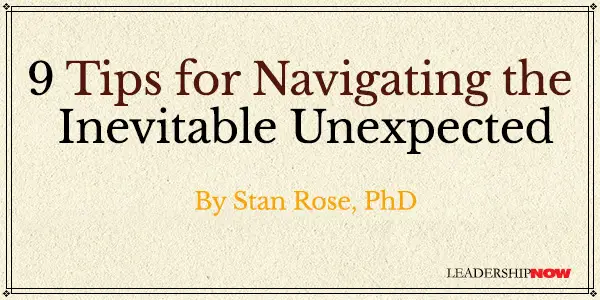
ALL COMPANIES begin with a vision. Individuals or partners develop a plan and iterate as new information arises. It takes an enormous amount of their time, forces them to commit, and requires some degree of funding. If sophisticated investors are involved — as often happens in biotech — the plan is undoubtedly subjected to intensive due diligence. Models are developed, scrutinized, and refined. Given that the global biotechnology market was valued at USD 1.55 trillion in 2023 and is projected to grow nearly 14% a year in the next 6 years, that's understandable: there's a lot at stake. All of this hard work usually involves smart people with significant experience. But that's not always enough: some 90 percent of startups do not survive past five years, and 63% of tech startups are doomed to failure. Some fail for a host of strategic or operational shortcomings addressed in any decent business school course. Others fail because no matter their degree of planning or vetting, they are unable to adequately address unexpected events in those moments of truth when they occur. I call these inevitable unexpected events — inevitable because they occur with relatively high frequency. They're things you never saw coming and you never planned for. No one can predict what they may be or when they may occur, but it's nearly guaranteed that you will encounter them. Over the course of five years, these events will occur frequently enough that your ability to address them will likely determine whether your business succeeds or fails. Any wrong move can take you down. Barriers and Opportunities These unexpected events may appear in the form of barriers to overcome, or as opportunities worthy of addressing, but you need to decide whether to do so. They are not always business issues, although they are all issues that will affect your business. I've learned that from my nearly forty years of working with scientists and clinicians to transform inventions into successful commercial products. Whether a challenge or a potential win, the common ground they share is that they will happen, they will have an impact, and how you respond will be critical to the business. No Such Thing as a Perfect Plan Can we avoid these events? Probably not: we'll encounter them no matter the breadth of our collective intelligence and experience, despite the models we develop, and regardless of the plans we base on those models. They're a humbling reminder of the incredible complexity and beauty of biology, life, and the universe we inhabit. The number of factors one would need to have considered, accounted for, and correctly predicted to have a “perfect plan” is comparable to the number of stars in the sky. This doesn’t mean we’re doomed to failure. The likelihood of making beneficial decisions when facing the unexpected increases if we routinely practice certain values, skills, and approaches. These unexpected events should not be feared but rather appreciated as opportunities to flourish and to distinguish yourself in the eyes of customers, competitors, partners, and investors. Here's a rundown of nine practices that have been particularly helpful to me when it comes to navigating life’s inevitable unexpected events:
As with any other skill set, awareness can be generated. But there will still be a spectrum of performance across individuals regarding how well they are able to apply these values and approaches to their own businesses. Certain values and approaches may not resonate as well for some as for others. My advice is not to simply store a list in your memory and pull certain items out when needed. It’s more about developing a practice, a way of conducting business (or your life). If you follow these approaches all the time, you will be as prepared as you possibly can be when it comes to confronting life’s inevitable unexpected events. The opportunities for bioentrepreneurs can be more exciting and impactful than ever in today's accelerated market. No question the biotech industry is experiencing significant growth. Navigating the unexpected has become a critical skill — and beyond biotech, these 9 tips will certainly help anyone who's pursuing a creative endeavor in any field. Build a strong foundation, cultivate a healthy respect for the unforeseen, and follow a business practice that includes proper preparation and execution, and you not only have the potential to achieve great things, you'll have a lot of fun doing so.  
Posted by Michael McKinney at 06:52 PM
09.08.23

Positive Chaos: How to Transform Crisis into Clarity and Advantage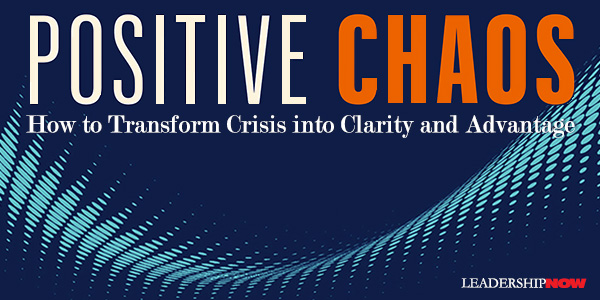
CHAOS is ubiquitous and inevitable. But with the right mindset and skillset, you can turn it to your advantage. In Positive Chaos, Dan Thurmon explains how to do just that. He says, “The trick is to intentionally and consistently choose a perspective that serves you.” There are many ways to see the world. Quite naturally, we tend to see chaos as overwhelming, confusing, stressful, and frenzied. But as random as chaos may seem to be you will often find that there is order in the chaos. Chaos and order aren’t polar opposites. They coexist. They are interrelated and connected, two sides of the same coin. There may be order in what you currently perceive as chaotic, and amid the unknowable and seemingly random circumstances, there are predictable opportunities. Everything is connected. Everything affects everything else. When chaos happens, we are more inclined to flee than to grow. Chaos happens, but we need to become a creator of positive chaos. That is to say, we need to seize the chaos as an opportunity to transform ourselves, accomplish, and positively influence others to do the same. Why don’t we? Why do some people grow and learn, and others flounder? Thurmon says we limit ourselves around three issues and questions: Willingness—Will I do what it takes? Why does this matter?
We must take control of our inputs. “Small, almost imperceptible changes to the inputs produce huge variation over time. What are your inputs?” Thurmon often asks, “What is the one action you could take or change that would effectively change everything?” If you limit yourself to what’s comfortable, you deny yourself what’s possible. No matter where you look, you have a buffet of built-in excuses and justifications for mediocrity. For change to occur, things must be out of balance. Balance is static. So, you must go off-balance intentionally to grow. “To make things happen intentionally, you must maintain stability while creating disequilibrium.” A system, an object, or a person can preserve stability while they undergo change. And the more stable, functionally sound, and grounded they are, the easier the person, system, or object can incorporate changes without being completely disrupted. A change in perspective will help you to upgrade your response system. What’s happening to you is not new. Life presents us with reoccurring patterns. “Today’s chaos is a new version of what you’ve already been through. The key to working with chaos is your perspective. I challenge you to place more emphasis on the long-term recurring challenge versus the next right move.” When uncertainty and randomness strike, whether the immediate perception is threatening or exciting, you don’t take it personally. You simply see it as a new factor to incorporate into your life. This is not about the challenge coming at you. It’s about the challenge coming from you. It’s not what’s testing you, but how you are choosing to test yourself. When chaos and uncertainty loom large in our lives, we tend to turn negative and overthink. We need to pause and ask, “Are these thoughts helping me now?” To face what is happening with confidence, we need to “find the familiarity by seeing similarities to other situations we’ve already been through—other skills and lessons we’ve already utilized. Leverage your past to be more present and create a better future.” Draw upon what is already within us. Build momentum. “Momentum is your ability to move yourself and your initiatives forward. If you aren’t moving, thinking, creating, growing, connecting, or exploring, then you are beginning to weaken, withdraw, and stagnate.” In times of chaos and uncertainty, leaders provide clarity. “In an environment where everything is loud, important, and overwhelming, they point to the one thing that matters most. They emphasize values and reinforce intentions. Further, they spread the mission through their daily actions, constantly reminding others: This is what we do. And this is why we do it.” I’ve just hit some highlights here that will hopefully stimulate your thinking and add to your perspective. There is so much to gain from this outstanding book. You’ll even learn a simplified version of Chaos Theory and how it relates to your life and growth. 
Posted by Michael McKinney at 10:59 AM
08.08.23

The Secret to Changing Your Culture When It Doesn’t Align with Your Strategy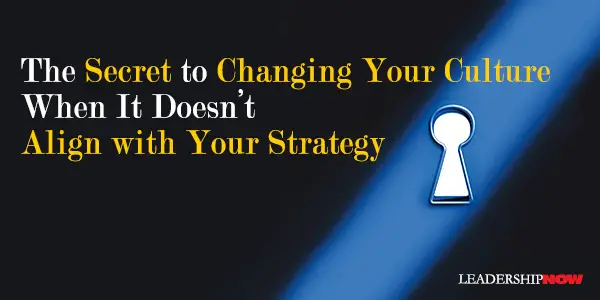
IF YOU WANT to change your culture, you need to change the stories that the people in your organization share with each other. Jay B. Barney, Manoel Amorim, and Carlos Júlio write in The Secret of Culture Change that these culture-changing stories are the secret of culture change. If you want to change your organization’s culture, start by building stories. By interviewing leaders who attempted to change their organizational culture, they collected over 150 culture-changing stories, many of which found their way into this book. From these stories, they identified six attributes of successful culture-changing stories. They go into detail to explain the six attributes of successful culture-changing stories. The stories and organizational myths that they share in each chapter are not only engaging and entertaining but instructive and worth the price of the book alone. The six attributes are: 1. The actions that these stories are built on are authentic. Authentic stories “reflect your deeply held values and beliefs about who you are as a leader, your commitment to the well-being of your employees and other stakeholders, and how these are related to the ability of your firm to implement your strategies.” 2. These stories “star” one leader. This is not to gratify your ego but to demonstrate your commitment by being the culture to want to change to. “If you are not willing to do something that will build a story in your firm to help change its culture, then it is very unlikely that your employees will believe that you are truly committed to culture change.” 3. The actions that build these stories signal a clean break with the past, with a clear path to the future. “The stories you build to change your organization’s culture have to make it clear what specific patterns of thinking, acting, and responding are no longer acceptable, and what these new patterns will be.” The story must break with the past and show a path to the future. 4. These stories appeal to employees’ heads and hearts. “Successful culture change requires both an appeal to the rational economic interests of your employees—their heads—and to their emotional and social interests—their hearts.” 5. The actions that build these stories are often theatrical. By theatrical, they mean doing something that is outside the normal in a public setting that reinforces some aspect of the cultural change. 6. These stories are told and retold throughout an organization. Stories that are “authentic that star you, that identify a clear break with the past and a path to the future, that appeal to both head and heart, and that are theatrical in nature” begin the culture-change process. The trick, then, is to enlist other members of your organization to create their own culture-changing stories or what the authors call a story cascade. The leaders profiled in this book “found the basic materials needed to build a story when their expectations about what their organization needed to do were inconsistent with what it was actually doing. Every time you become aware of a time when your organization does not deliver on its strategy, there is a possible culture-changing story there.” 
Posted by Michael McKinney at 08:24 AM
07.03.23

5 Tips for Leading Change: The End is the Beginning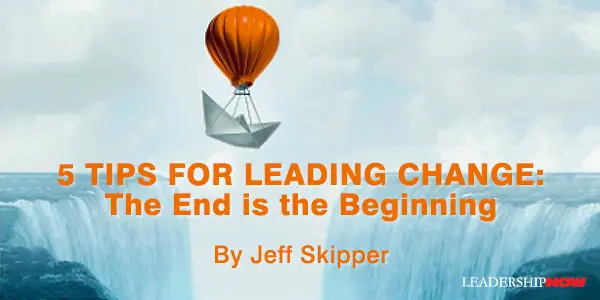
I LOVE ACTION! It’s my favorite part of every movie. Irrevocable decisions will be made. Heroes will push things beyond what’s reasonable. There will be no going back. As exciting as that is for movies, it’s too often a fatal move in business. When leadership decides on a change — a new app, or a new process to help customers — everyone wants to get moving so that they can realize the anticipated results as soon as possible. However, you can’t successfully lead change without having a clear destination. In the rush to demonstrate that action is happening, that’s a simple point too often missed. Quick wins can lead to big losses if we are not moving in the right direction. Clarity on the goal eliminates confusion, sets guidelines for tactics, and avoids wasted time and effort. But we can’t pursue just any direction. The end goal needs to make sense and appeal to the people you are leading. Given that different people have different priorities — and we act in our own self-interest — the challenge is getting everyone aligned and moving in the same direction. Here are five proven tips for leading change by starting with the goal: 1. Set a singular goal: Set a single overarching goal for the change. Make it as clear as possible. Change cannot be about one hundred things. It must have a single, clear focus that encompasses varied interests while being resilient enough to withstand shifts in circumstances. 2. Stay high level: We want to be clear on the destination, but not so specific that it doesn’t allow for adjustments. Keep the goal at a high enough level to allow for the inevitable changes that come as you begin moving forward. This allows for different approaches to achievement. 3. Include the basic details: When announcing the goal for change, the first two things that your audience wants to know is what the change is (the goal) and then how it applies to them. Tackle the basics by including all that the goal entails: the who, what, why, when, and where: Where are we going?
4. Paint the picture: There’s a difference between telling them the facts and telling them a story. Sharing the goal in the form of a narrative that illustrates what the future will be like once the change is in place has the biggest positive impact on people for motivation and buy-in. How will customers’ lives be different? How will life change for employees? When you roll out a new change, it’s common to still be mapping out the journey — how it will be accomplished. Tell your audience that the details are coming and give them a timeline. It’s more important to get them thinking about the goal while you are still working out the details. 5. Highlight the benefits: Highlighting the benefits of the change infuses it with purpose, making it easier for people to support. Your audience needs to know that the change process is worth it. Connecting the goal with benefits for each person is an important motivator. Connecting the goal with benefits for others can be even more powerful. A change that helps those around us offers purpose and meaning to our lives, a common desire for everyone. There’s one more element of change leaders should keep in mind. Nothing great or noble is accomplished without giving up something else. In that element of sacrifice, there may also be some pain. Consider what happened during the pandemic, when so many businesses found themselves making sudden but necessary changes to protect their workforce. Life went through sudden changes as well: Families had to sacrifice their plans, kids went to school from home, marriages were delayed, social connections were lost. For some, the sacrifice was even more than that. As a leader, it’s important to be sensitive to the negatives as well as the positives a change may bring. Better to call that pain out early and often and help people prepare. Laying out the goal clearly enables people to begin processing the reality of the change and the pain it may bring — so they are ready for what comes next. Leading change is a noble calling. People want to know they can trust the person who is directing the charge. Before jumping into the action, take time to set a clear goal.  
Posted by Michael McKinney at 07:04 AM
03.06.23

Good Power: Changing a Life. Changing Work. Changing the World.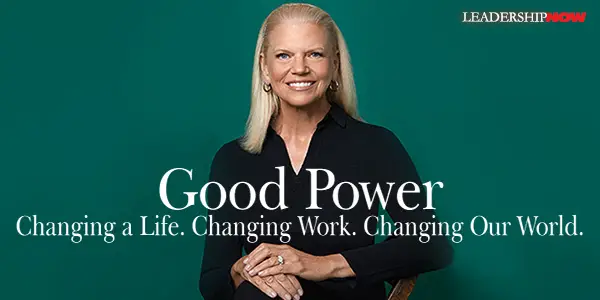
THE TIME TO THINK about power is before you get it. Power is part of leadership, and it can be used in the service of others or for personal gain. In Good Power: Leading Positive Change in Our Lives, Work, and World, former Chairman and CEO of IBM Ginni Rometty redefines power as a way to “drive meaningful change in positive ways for ourselves, our organizations, and for the many, not just the few.” Using her life experiences and lessons learned, she draws out principles that define good power. She observes that power that doesn’t produce tangible results is pointless. “Power is necessary to change things for the better, and that power can be good when it’s wielded respectfully, when it navigates tensions, and when it strives for progress over one person’s idea of perfection.” Rometty divides the book into three parts that correspond with our own journey as we grow into adulthood: the power to change me, the power to change we (a group or organization), and the power to change us as a society. She says that while some clients appreciated her perfectionist tendencies, it sometimes left her colleagues cold. “My drive for perfection often meant I only focused on what needed to change without acknowledging the positive. This could keep people from trusting themselves. It would take me a while to learn that just because I could point something out didn’t mean I should.” The soul of good power is “being in service of others,” which she differentiates from the act of “serving others.” Being in service of others is not a means to an end, but a means in and of itself. It manifests in how we act and the behaviors we choose in moments of preparation, interaction, and follow-up. Being in service of others means delivering value, which involves self-control and empathy—understanding who you are serving. Listening is a big part of that. I discovered that listening breeds knowledge, knowledge breeds creditability, and credibility earns trust that allows relationships to flourish. And when delivering bad news, use a velvet hammer. How do we do that? Speaking about tough truths in affirmative tones let critiques land constructively. So did beginning a difficult conversation by emphasizing something positive, as well as citing facts instead of opinion to support a controversial conclusion, and ending on a note of optimism and with potential solutions. When we move beyond just developing ourselves to developing others, it signals that we are transitioning from the power of me to the power of we. We grow a company when we grow its people. Being in service of others is the why and building belief is the how for bringing people on a change journey, she writes. Building belief is about moving people to embrace an alternate reality for themselves and others, and then to willingly participate in creating it. It’s the first major step if you want people to change, because they have to understand and believe in the change. When CEO Sam Palmisano stepped down at the end of 2011, there were several qualified replacements, including Rometty. The senior vice president of human resources told her, “ Ginni, if you want the opportunity to be CEO of IBM, don’t try to run for office. She says, “I translated his sage advice to mean put your focus on followership, not politics.” One of the best chapters for me was Knowing What Must Change, What Must Endure. If we want to make changes for me or the we, we must understand that certain behaviors are required to bring about certain outcomes. New thinking brings about new behavior resulting in different outcomes. We must give people the tools—the how—to change. When moments of reinvention arrive, innovating the “how” can be overlooked in favor of focusing on the “what.” Indeed it is not enough to just tell people to deliver a different outcome. We have to cocreate a new way of working, give people permission to change, and create an environment that encourages and rewards new behaviors and skills—all at scale. In any transformation, balancing the old and new is always a challenge because it is hard for people to wrestle with this tension. Even with major changes, some things don’t change. “Transforming a really large entity also means reconciling the pace of change in the market with the rate and pace of change the organization can withstand.” In addition, “once we figure out what endures, even if it must be modernized, we have a platform from which we can bridge to the future.” What doesn’t change? If an organization is to meet the challenges of a changing world, it must be prepared to change everything about itself except the beliefs on which it bases all its policies and actions. What is your foundation “upon which the hurricane of change” can happen? When there are setbacks and critics, you need to have built some resilience. Resilience results from a number of factors, but two in particular—relationships and attitude. Both are under our control. Rometty doesn’t ignore critics. She asks herself if they have legitimate points and anything she might learn from their perspective. “Critics may inform me, but they don’t define me.” To help us in applying good power to the us—society—one way is to look “at big problems as big systems to be transformed.” Thinking systematically, “good power at scale can help build belief in a movement; cocreate new solutions; let go of what’s wrong; and modernize what’s right.” 
Posted by Michael McKinney at 06:53 AM
01.27.23

When Everyone Leads the Toughest Challenges Get Seen and Solved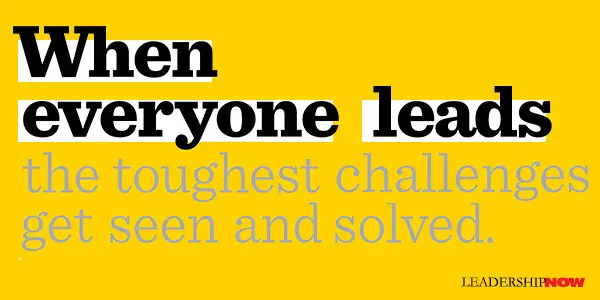
LEADERSHIP is an action, not a position. Leaders can come from anywhere. Anyone can step up and take responsibility. Leadership begins by taking responsibility for the gap between what is and what should be. Ed O’Malley and Julia McBride believe that anyone can lead, not by being a leader, but by exercising leadership. And When Everyone Leads, our tough challenges get seen and solved. We need the diversity of thought that can come from anywhere. We need to choose leadership over comfort. When authorities—the folks in the top jobs—empower others to lead, their own jobs get easier. When everyone else—the folks not in authority—starts leading, their work becomes more rewarding. The first step in leading change is to identify The Gap. “Leadership always starts with dissatisfaction. No one exercises leadership unless they are unhappy with the current reality.” It means acknowledging the concerns and facing the hard choices that must be made to move in the direction of our aspirations. Our research shows that closing The Gap takes leadership from the many, not the few. Real progress on the toughest challenges facing your company or community requires more people looking at The Gap, voicing concerns and aspirations, balancing pragmatism and idealism. In leading any change, you will encounter barriers. If you don’t understand where they come from and address them, you make things more difficult. In your efforts to close The Gap, the following five barriers are the most common:
Once you acknowledge and identify The Gap, you will make more progress when you do these five things:
Keep in mind, if there is no heat—if people don’t feel uncomfortable—there is no motivation to engage and change. No one will move if the heat in a situation is too low. You have to manage the heat. There has to be enough heat for people to change but not so much that they engage in unproductive behaviors. Too much heat and a flight, fight or freeze response kicks in. The right amount of heat fosters curiosity and learning. The authors have tried to share lessons from their specific work at the Kansas Leadership Center to inspire engagement for leading change on tough issues. While some declarative statements miss the nuances of leading, their approach is spot on. If you are apprehensive about stepping up and leading, then you will be encouraged to act after reading the examples and principles found in When Everyone Leads. 
Posted by Michael McKinney at 06:59 AM
01.02.23

The Upside of Uncertainty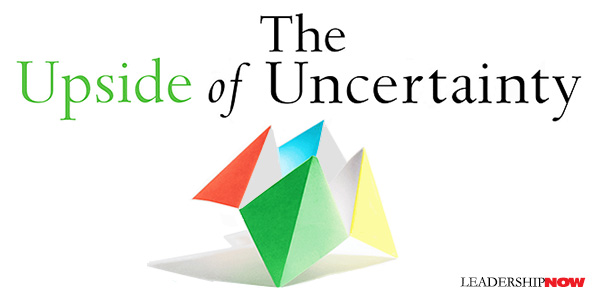
IN The Upside of Uncertainty, Nathan and Susannah Furr assert that “Behind every uncertainty you are facing—even the unwanted and unpromising varieties—insight, growth, and possibility are waiting in the wings. We are all wired to fear the downsides of uncertainty, but we forget that change, creation, transformation, and innovation rarely show up without some measure of it.” That’s not to say that there are no real downsides. We feel them first: anxiety, stress, exhaustion, frustration, and confusion. Uncertainty, as they define it, is “anything unknown, any ambiguous state where you might not even know what to pay attention to, let alone all the ways it could play out.” In contrast to risk, uncertainty does not include any knowable outcomes—no probabilities to factor in. It is uncharted territory. But uncertainty presents us with possibilities that emerge that can help to not only navigate the situation but thrive in it and beyond it. To do this, the authors present us with tools to help us with the unknown. While some of the tools overlap, they divide them into four categories: Reframe, Do, Sustain, and . They go into detail describing how to implement each of the tools in all four categories.
REFRAME Reframe tools enable and strengthen a perspective shift, motivating you to look creatively for all the possibilities and to believe in an upside that you can’t see yet. Discovering the upside of uncertainty starts with undergoing a radical shift in perspective: Instead of fearing and avoiding the unknown, you recognize and embrace it as the origin of possibility. The Reframe tools are largely cognitive in nature, meaning they are about how you make sense of the world. PRIME Prime tools prepare you by encouraging projects that matter to you, taking into account your personal uncertainty landscape to enable satisfying outcomes when it’s time to act. The Prime tools are situated on the “doing” axis, inviting you to start taking steps toward any uncertainties you face. These include both the uncertainties you choose, such as starting a new project or adventure, and those you don’t, such as unexpected loss or downturn. DO Do tools describe how to thoughtfully unlock rewarding possibilities hidden in the uncertainties you face to promote a future you want to live in. As you implement the Do tools, remember that what happens in the future depends on the “conversations” you are willing to have, then give yourself permission to boldly engage with what’s already been done to create new possibilities. Anything and everything can be recomposed. SUSTAIN Sustain tools give comfort and remind you why and how to keep going or how to pivot when things don’t go as planned. Sustain tools are most helpful in a time of crisis. Sustain tools nourish and comfit you through the downsides of uncertainty. Regret, anxiety, grief, self-doubt, and even embarrassment can be powerful obstacles to navigating uncertainty as well. The symbol used to represent Sustain is the Paris coat-of-arms containing a boat floating above turbulent water with the Latin motto fluctuat nec mergitur or tosses but not sinking. While facing the reality of your circumstances may bring “challenge, discomfort, and heartache, it is the only place where innovation, solution, and evolution happen.” The authors encourage us to go beyond just being resilient to transilience. Transilience “is about transformation, leaping from one state to another.” To recap, there are four critical things to remember when faced with uncertainty:

Posted by Michael McKinney at 10:06 AM
09.07.22

Build for Tomorrow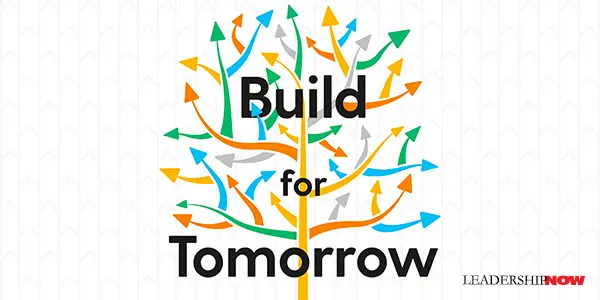
CHANGE is frequently a challenge, but in times of wide-ranging, disrupting, unavoidable change, it can be disquieting. Jason Feifer, the editor-in-chief of Entrepreneur magazine, has written a book for anyone facing an uncertain future, not just entrepreneurs. That’s most of us. Build for Tomorrow is about how we can be good at change—especially change that happens to us—sometimes more like a crisis. When faced with change, Feifer has found that we experience four phases when we are faced with change we didn’t initiate. The question is, how fast will we move from Panic! to Wouldn’t Go Back? Build for Tomorrow is designed to help us do just that. 1. Panic! Panic is natural, but staying in this stage blinds us. In this state of mind, we can’t accurately see what we are faced with. “We become impatient for solutions, do not consider all the information available, and make counterproductive decisions.” A couple of the reasons we get stuck in Panic mode is because loss is easier to see and feel than gain. We naturally extrapolate loss, so we must counter it by extrapolating the gain. We also believe that yesterday was better than today.”If we’re surrounded by the belief that yesterday was better, we’ll become less open-minded to future opportunities.” Sometimes we feel like we got where we are by sheer luck—the right place at the right time. But if we can get some perspective by asking ourselves three questions—What did I overcome? What skill set did I have then that I still have now? And what do I know now that I didn’t know then?—we can build on where we are and move forward. 2. Adaptation When confronted with change, it is easy to tell ourselves that “something is happening to me.” But that is not a productive thought because it makes us the victim. We feel out of control and acted upon. We reason that “change is scary because it seems all-encompassing and permanent,” and it will change us in all-encompassing and permanent ways, and as a result, we lose our identity—who are we anyway? But Feifer says, “We are not what we do. We are why we do it.” We need to get to the why. To adapt to the change we face, we need to widen our bands. Get out of our heads. We tend to think that everyone is thinking like us. They aren’t. Look beyond the moment. Build for tomorrow. The time to change is not “at the moment of pain—it’s at the moment of awareness.” Feifer makes the interesting point: work your next job. If we focus only on what we are doing now, we will only be qualified to do what we are doing now. But if we focus on what we could do and learn what we must, then we set ourselves up for tomorrow and the inevitable change that is coming. “Goals can be motivating but limiting. It is a direction but not a map, and it cannot define your whole journey. If you look ahead too narrowly, you’ll miss all of the promising off-ramps in your periphery.” 3. New Normal The new normal is another temporary state on our journey through life. If we are to embrace a change, we need to “identify parts of our old experience that do not change, and then use them to reframe the new opportunity in front of us.” Some things never change, and they play a part in what is changing. “You acclimate to a New Normal by seeing things as they are instead of how they were.” Try asking, “What is this for?” Instead of trying to stop or control the impending change, asking what”-is-this-for” opens us up to opportunities and gives us a new purpose and way of showing up in the world. It is a question we should constantly ask about everything we do like, what is your time for? Or What is small talk for? (“Small talk is a way to establish mutually that you’re both people who are capable of interacting.”) 4. Wouldn’t Go Back What we once thought was impossible is now the real opportunity, and we wouldn’t go back. “True opportunity exists in the unknown.” To reach our Wouldn’t Go Back moment we must reconsider the impossible. That is to say, we take another look at the things we once discarded—the things we thought were impossible, illogical, too difficult, too radical, too ridiculous to even consider—and explore whether they were the real opportunity all along. If you’re looking for a competitive advantage, ask yourself, “But Really.” On the surface, we think we know, but really there is something else going on. Only by asking but really, can we drill down to what is the fundamental difference. In your personal life, “I may be dissatisfied with my job, but really I’m being pushed to better identify what I love and how to pursue it.” Not all change is good, of course, but change is certain. And when it comes, we need to position ourselves to move through the four stages as quickly as possible. Instead of defining ourselves firmly—I am this, I do that—we must recognize that everything we do, as well as everything we are, is simply the next thing in a long line of next things. Everything is the next thing, part of a continuum of successes and failures are doors opening and closing. 
Posted by Michael McKinney at 12:19 PM
02.09.22

Change: How Organizations Achieve Hard-to-Imagine Results in Uncertain and Volatile Times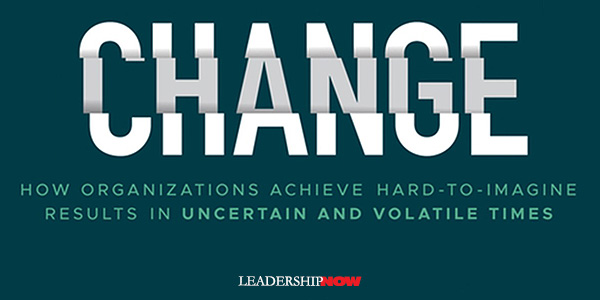
BRAIN science has added much to our understanding of human nature and change in the last decade or so. In Change, John Kotter (with Vanessa Akhtar and Gaurav Gupta) notes that we “tend to seriously underestimate the power of our built-in survival instinct and how it can inadvertently overwhelm our capacity to swiftly see opportunities, innovate, adapt, lead, and change for the better.” Consequently, “A gap is clearly growing between the amount of change happening around us and the change we are successfully, smartly implementing in most of our organizations and lives.” Basic to our human nature is our survival instinct that is always on the lookout for threats. Kotter calls it the Survival Channel. When dealing with life and death threats, it is very valuable. When activated, it releases chemicals (cortisol and other hormones) that eventually drain us of energy and create stress. But most of the perceived threats we see today are dealing with the complex change we see around us. We need a better response because our typical survival response causes us to freeze and overwhelms our capacity to see opportunities. With the complex realities we see today, we need to awaken what they call the Thrive Channel. This channel too, when activated, releases chemicals like oxytocin and vasopressin that make our energy go up and produces emotions like passion and excitement. In this state, our perspective broadens as we become more curious.
A basic reality today is that the way to create enough smart change at a fast enough speed is both to prevent the Survival Channel from overheating and to activate the Thrive Channel across a sufficient number of people. It makes sense then to include as many people as possible to drive change faster and smarter. In the research for this book, they found that an insufficient sense of urgency causes change efforts to fail. “Problems were exacerbated when too small a group, lacking broadly relevant knowledge, connections throughout the organization, leadership skills, and/or a strong sense of urgency was put in charge of driving complex change.” But the burning platform approach is not the answer. It tends to lead to a Survival Channel panic. Activating Thrive requires people to see opportunities and not just threats, and if those people do not have some engagement as the plans are being formulated, the Survival Channel’s natural fear of the unknown kicks in. Research and experience have shown us that there are better ways to accelerate change. They take seven chapters to explain change principles and methods as they relate to strategy execution, digital transformation, restructuring, culture, mergers and acquisitions, sustainable agility, and driving social change. The bottom line of all this is that we need more leadership from more people throughout the organization. “Thrive hardwiring is closely connected to leadership. And with too much Survive easily shutting down Thrive, an overabundance of Survive is typically associated with a lack of leadership.” We need to encourage leadership from everywhere. As we tend to focus on threats rather than opportunities, we can help to activate Thrive by having more conversations about opportunities rather than problems. Some additional thoughts: If your Thrive is not adequately engaged, you can trigger it by reflecting on opportunities that are both real and personally exciting or meaningful (or both). Focusing on the opportunities to learn and develop and thinking concretely about the role you can play will also help activate Thrive. 
Posted by Michael McKinney at 10:05 AM
02.07.22

Smart Growth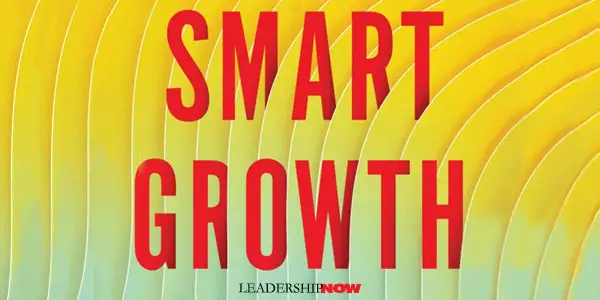
WHILE growth is never easy, we are at our best when we are growing. And the more we grow, the more we are capable of growing. It would make sense then that we are intentional about it. Sometimes we don’t know where to start or get tired or overwhelmed by the effort, but there is a pattern to it that, when we understand it, can help us achieve the growth we seek. In Smart Growth, Whitney Johnson says that “every new skill learned, every challenge faced, takes the form of a distinct learning curve”—an S Curve. Along that curve are six stages of growth whereby we can pinpoint where we are along that curve and prepare ourselves for what to expect and how we should respond. As illustrated in the chart below, there are three phases—Launch Point, Sweet Spot, and Mastery. Each phase has two stages, making up the six stages of growth: Explorer, Collector, Accelerator, Metamorph, Anchor, and Mountaineer. “Each phase of the S Curve of Learning is marked by its own distinctive characteristics, frustrations, and thrills.”
Launch Point At the Launch Point, we are exploring opportunities—new S Curves. We begin at the Explorer stage. Many opportunities will present themselves, but we want to focus on those that will take us where we want to go. This stage will feel slow as we work through the questions we need to ask. For example, Is it achievable? Is it familiar yet novel? Does it align with my values? And Is the reward worth the cost? It’s when you do your homework before committing to a course of action. Not all S Curves lead to where we want to go. Being true to your why results in growth. You are conscious of your life’s purpose; you’re focusing your time and effort in areas that further your purpose. Once we choose a course of action, we become the Collector. We are gathering evidence that we are on the right curve. Again, progress may seem slow here, but it is essential so that as you move into the next phase, you don’t regret it. Sometimes it’s hard to get started. The slow pace at the launch point of a new S Curve can defy us. But if we take time to explore, we will find the right fit. By collecting quantitative and qualitative data and resources—and curating to eliminate the deadweight—we prepare to tip into the sweet spot of momentum. Sweet Spot We now hit the rising slope of the S Curve. The pace becomes faster. “We are gaining confidence that we can become who we set out to be, hope swells as our growth accelerates.” We are now at the Accelerator stage. We are producing more results with less effort. We want to spend as much time of our day working on our chosen S Curve. There are fewer gaps in your knowledge, and you have a good sense of where the remaining gaps lie. You’re making connections, deliberate choices about how you want to grow, and those choices become more automatic as stress and growth approach equilibrium. As you grow, what was once was unfamiliar to you is becoming automatic. You are becoming what you set out to be. You are a Metamorph. This stage is exciting because everything is working; it feels fast-paced compared to the earlier stages, and you are exhilarated by the combination of challenge, productivity, and growth. Similarly, your brain chemistry shifts from the headwinds of stress response to providing supportive dopamine rewards as your predictive model improves. Mastery At the top of the S Curve we have accomplished what we have set out to do. The new you is the new normal. We are now in the Anchor stage. It’s time to reflect and celebrate. Things slow again. The Anchor stage is a brief season of rest and reflection before you take the next leap. With your celebration complete, outline what you’ll do next. Is now the time to reconsider compelling opportunities you turned down to stay focused. Are you drawn toward a radically different S Curve such as a career pivot or a move? Anchoring gives you stability and confidence. Chart your next steps from this point of strength. At the top of the learning curve, you are a Mountaineer. Once you reach the summit, it’s time to find the next mountain to climb. It was hard work to reach the top, but it’s time to find a new adventure—a new launch point. Learning is the oxygen of human growth. When learning diminishes, so do we. Learning is essential to our continued development, particularly in adulthood when the sponge-like mindset we had as children hardens into a more fixed range of assumptions. Ecosystem We need a growth ecosystem. We don’t climb our S Curve alone. Nor should we think we can. We need support and guidance. And those may be different people as you move along the S Curve. On the launch point, we need support: Teachers, trainers, and truth tellers to help us explore and collect data to determine whether we should continue on a particular curve. Smart Growth is a remarkable look at how we grow. Whitney has provided us with a new way to look at life—intentionally. A way to see a pathway to our potential. The S Curve provides that pathway and an understanding of how we grow—slow, fast, slow. We learn how to manage through the entire growth process—Launch Point, Sweet Spot, and Mastery. What I have presented here is just a brief overview. There are so many insights found here to help you and those around you grow. And the case studies and stories just make it all the more compelling. Each section ends with a summary for Smart Growth leaders to help us grow our people. You find information on how to manage people at each phase based on both their career stage and the type of organization in which they work. 
Posted by Michael McKinney at 08:13 AM
08.10.21

How to Change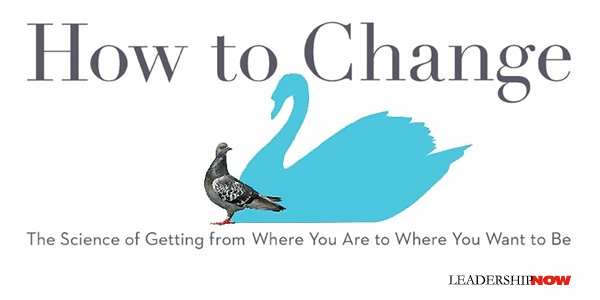
YOU WANT TO CHANGE, but the problem is you haven’t found the right strategy. You need to outsmart your issues. In How to Change, behavioral scientist Katy Milkman says we need to tailor our approach to fit the obstacle and our circumstances. We search for solutions that will deliver the quick knockout victory and tend to ignore the specific nature of our adversity. The surest path to success is not one-size-fits-all. Instead, you must match your approach to your opponent. You’ll get further faster if you customize your strategy: isolate the weakness preventing progress, and then pounce. Whether internal or external, the key to change is understanding your opponent—the obstacle. Milkman takes a look at seven of those obstacles. Change is easier when you have a blank slate with no old habits working against you. This is often not possible, but you can create the feeling of a blank slate. Life events, anniversaries, or new chapters in your life can signal a clean slate. “These new chapters are moments when the labels we use to describe ourselves, who we are, and what we’re living through shift, compelling us to shift with them…. And labels matter to our behavior.” There is a downside to fresh starts. If you are doing well, a fresh start can be an interruption and become a setback. If you are doing poorly, the disruption can work to your advantage. A fresh start is just that. To maintain that motivation to change, you will need to consider other obstacles that will tempt you to quit. Once you begin, the present temptations can loom larger than the long-term rewards of sticking to your goal. One strategy is to bundle your temptation with an activity that you are trying to avoid—like binge-watching TV while exercising. Another strategy is to make your change initiative fun by adding rewards, a sense of competition, and leaderboards. Milkman notes, however, “gamification works when players ‘buy in’ to the game. It can backfire if players feel the game is being imposed on them.” When we feel like putting off the change, a commitment device can be just the thing to overcome procrastination. A cash incentive (or rather a disincentive) can be very effective. Commitment devices “help us change our behavior for the better by locking us into choices we make when we’re clearheaded about what’s good for us, not when we’re hotheadedly reacting to an imminent temptation, and they keep us from indulging in the temptation to misbehave later on.” Stuck in our routines, it is easy to forget to do those out-of-the-ordinary things we want to do. We often resort to reminders, but the timing has to be just right, or we forget those too. Reminders work best when we can act on them immediately. The strategy here just may be implementing cues—linking the desired behavior to a specific clue that will remind us to act. “Often, when we make plans, we don’t focus on what will trigger us to act. Instead, we focus on what we intend to do.” So, fill in the blank: “When ______ happens, I’ll do ______.” “While any cue is better than no cue, it’s best to rely on clues that are out of the ordinary.” Some changes never make it out of the gate because we just don’t feel like it. We’re lazy. “When faced with repeated decisions, laziness is harder to tackle.” So, we need to form new habits. Duh. But there are ways to help you make that happen. One important way is to build flexibility into your schedule. “Forming stable routines is key to habit formation. But if we want to form the ‘stickiest’ possible habits, we also need to learn how to roll with the pinches, so we can be flexible when life throws us a curveball. Too much rigidity is the enemy of a good habit.” Milkman also recommends we should aim for streaks by tracking our efforts. Tracking helps you “avoid forgetting to do it until it becomes second nature.” A lack of confidence also thwarts our change efforts. “Research confirms the obvious: when we don’t believe we have the capacity to change, we don’t make as much progress changing.” It is natural to give people who are struggling advice, but it also tends to lower their confidence. Instead, try asking them to give advice to someone in their situation. “Encouraging someone to share their wisdom conveys that they’re intelligent, capable of helping others, a good role model, and the kind of person who succeeds. It shows that we believe in them.” When trying to make a change, seek out others doing what you are trying to do. Milkman calls this strategy “copy and paste.” “So if you want to get fit, tip books will surely help, but if you can spend some time with fit peers and watch out for ideas, you’ll likely do even better.” Since our peers heavily influence our choices, hanging out with people who are doing what we want to do provides some motivation and accountability. When the barriers to change are internal, the key to success is to tackle them with a tailored suit of solutions and to treat change as a chronic challenge rather than a temporary one. 
Posted by Michael McKinney at 10:35 PM
07.23.21

Change on the Run: Surviving Workplace Uncertainty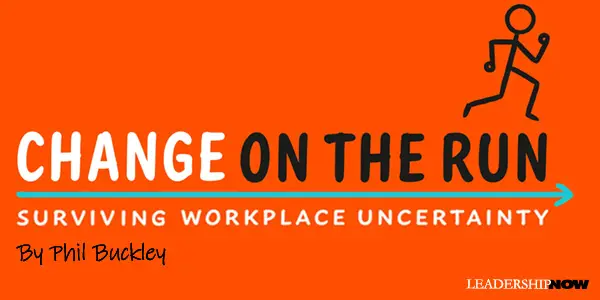
IF THE ADAGE “the only constant is change” described our pre-pandemic lives, “the only thing you can rely on is uncertainty” expresses our current realities. Changes have never been at a higher rate or faster pace than they are right now. Most people grapple with multiple disruptions, from hybrid teams to restructuring, digital transformations, and mergers and acquisitions. Uncertainty is now a workplace norm, and quickly managing new circumstances is a must-have survival and success capability. Why Uncertainty is Difficult The biggest challenge most leaders and managers face is deciding what to do when confronted with a new situation. Their career experience doesn’t provide the context needed to quickly take the best action that will move them forward. A marketing manager, for example, can easily create a brand positioning statement for a new brand—they have the knowledge, skill, and experience to draw upon. However, this doesn’t apply to change initiatives where the type of change, the context for it, and the project team are new. Their functional experience provides little guidance, especially when objectives and stakeholders span across their organization. Managing Uncertainty Many leaders take multiple actions when faced with uncertainty, hoping that something will address the situation. Often, trying everything achieves nothing because their efforts are uncoordinated and conflicting with insufficient resources to execute well. This approach often gives leaders poor results and a reputation for not being at their best. The best strategy for managing uncertainty is to focus your efforts on one action that will give you the best results. Typically, it will give you 80 percent of the results in 20 percent of the time and free you up to move on to the next task or issue. You need to excel in three areas of capability when managing uncertainty: managing me, managing the work, and managing others. Managing Me is the ability to be your best while accommodating a fast-moving change agenda; Managing the Work is about understanding the steps and activities to progress through a transition; and Managing Others is about aligning people on goals and enabling them to work collaboratively to achieve them. Each one contains situations you or your stakeholders may face or tasks you need to address to succeed. Let’s take a look at an example from each area to see how focusing on one action can give you 80 percent of the results in 20 percent of the time. Managing Me: Managing the Unknown Unknown situations are challenging because we can’t rely on our experience to guide our thoughts, actions, or behaviors; we don’t know what to do. To manage the unknown, take stock of what you know and don’t know. Creating lists for each will form a clearer picture that often looks like something you’ve seen in the past. The three steps to do so are:
Evaluating what you know and don’t know will transform the information you have into something more than the sum of its parts, moving you into more familiar territory. Managing the Work: Communication Effectively Good communication is the most important form of support people receive when going through times of uncertainty. It’s also the biggest enabler of successful change because it aligns everyone on their understanding of what’s changing, why it’s necessary, how it will affect them and what they must do to adopt it. Focusing on always being the best source of information ensures that people are guided by your messages and can ignore informal ones that are misaligned or incorrect. The three steps to do so are:
People seek out the most credible information they can find. Providing timely, complete, honest, and relevant updates ensures they will seek out, listen to, and be guided by you. Managing Others: Earning Trust Trust is the antidote to fear of uncertainty. Without it, people spend their energy protecting themselves from harm. When meeting someone new or learning about an unclear change, people’s “fight, flight or freeze” response is often triggered, causing them to either defend their territory or hide. Both responses add risk and slow you down. When people have trust, they collaborate toward a common goal even when it is not fully defined. People rarely trust those who don’t trust them. Demonstrating your faith in them by asking for their help inspires the same response toward you. The three steps to trusting first are:
Being indebted to someone provides an opportunity to support them, which creates a bond of trustworthiness. When people trust each other, they form a partnership that combines abilities and resources to address uncertainty. Managing uncertainty is a reality we all face in our current workplaces. We are moving into new territory with experience to draw upon. The best strategy is to focus our efforts on the actions that will give us the best results, the ones that will give us 80 percent of the benefits in 20 percent of the time. You will accomplish more, have more time for other tasks, build your change capabilities and your confidence, too.  
Posted by Michael McKinney at 07:19 AM
07.19.21

Choosing Courage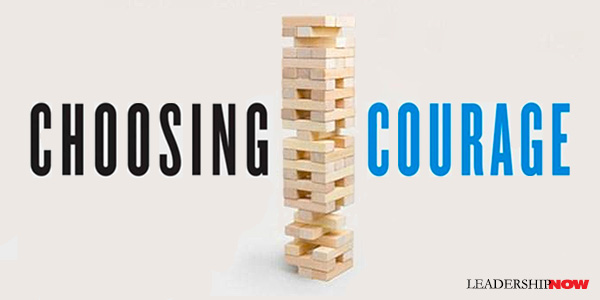
WITHOUT A DOUBT, courage matters—and we need more of it. Courage to see the right thing done. Courage to present a new idea. Courage to innovate and grow. Courageous acts can be risky—career-wise, socially, and sometimes physically. But if it weren’t risky, it wouldn’t be courageous. Acts of courage are worth considering to not only help others and yourself but to avoid regret. Acting courageously can help to solve problems, avert disasters and open the doors for opportunities. It also means taking personal responsibility even when it hurts. Author and consultant John Izzo wrote, “We must live with courage, moving toward what we want rather than away from what we fear.” In Choosing Courage: The Everyday Guide to Being Brave at Work, Jim Detert says we can all learn to be more courageous. But to do it right requires preparation and the right mindset. Courageous people sometimes pay a price for being courageous, “but often it’s not nearly as bad as we, or they, anticipate. And they seldom regret what they did, because they know I was the right thing to do based on their values, whether they’re defending someone else, doing what’s best for the organization, or simply being able to sleep well at night.” Detert defines workplace courage as “taking action at work because it feels right and important to stand for a principle, a cause, or a group of others, despite the potential for serious career, social, psychological, and even physical repercussions for doing so. That definition could give one the impression that we should act courageously whenever we get the urge. Ranting is not a courageous act. Acting courageously requires good judgment, as well, as Detert makes clear. One of the most important points he makes in the book is that the outcome of your courageous move hinges a great deal on how you behave—how you present it—and your reputation. We can confront, challenge, or disagree with powerful people in ways that evoke more or less threat, anger, and defensiveness simply by changing the how, where, or when of what we say or do. Of course, this is true no matter to whom you are speaking. Reading the situation and proceeding with humility is critical. Sometimes too, what we perceive is not reality. Detert presents five steps to increase the likelihood of a positive outcome and decrease the odds of negative personal consequences when acting with courage in any context.
Creating the Right Conditions Build your reputation before there is a need to be courageous. “This means creating a strong internal reputation which involves being seen as humble, kind, and generous, and also as a consistent high performer.” If you are seen as someone who has the organization’s and other people’s interests at heart, your words will be seen as less threatening, and you are more likely to get an audience. “If you haven’t routinely demonstrated emotional ability and stability, people aren’t likely to respond well to your courageous act.” With a track record of emotional maturity, you will buy yourself a lot of goodwill. Furthermore, don’t take sides. “When you’re seeking support from others, you’ll fare better if the people involved feel you’re acting on behalf of a collective interest that includes them.” Choosing Your Battles Not all battles are worth fighting. “Work life is filled with things that irritate or anger us, frustrate or disappoint us, and fill us with passion about what our organization could be doing more of or doing better.” You need to be very clear about what is really important. If you take issue with everything (most things), you will be labeled as a troublemaker, and your influence will be compromised. Good questions to ask are: What are my key values and goals?
And get the timing right. Competently courageous people pay attention to timing. They recognize that even the most reasonable comment or idea, presented in the most constructive way possible, may still fall flat or lead to trouble if delivered at the wrong time.Managing the Message We run into trouble when we make the message about us. “Understanding how others see the issue, what they care about, and what kinds of data and solutions they are most likely to find compelling allows us to make many important decisions about how to present our message and connect it to others’ priorities.” The same message can be framed in ways that are less likely to offend and more likely to resonate with the target(s). People are more likely to accept your message when they believe you want to build on their prior efforts, include them in the future, and help them achieve their current priorities. Importantly, Detert also adds, “People don’t like to feel ambushed or ganged up on. So, if you have a chance to speak to someone in private—at least for the first time—you’re likely to get a better reception.” Channeling Emotions Success in presenting an idea or issue may very likely depend on how well you manage your emotions and those of the target of your courageous act. “Shaking while talking, going silent, or literally fleeing the situation because we’re scared at the first sign of resistance doesn’t help. While being angry might fuel action, failure to control it can undermine success. Managing our emotions makes it easier to focus on others’ responses.” Anger doesn’t help make your point. You should also be clear that you are merely offering a perspective—not the only perspective or relevant facts. Avoid common phrase like “the explanation…,” or “the obvious problem …,” or “it’s totally clear that ….” When we speak this way, we’re not just implying that there is only one point of view; we’re implying the valid view is the one we hold, and others who don’t see it that way are stupid or self-interested. This is what psychologists call naïve realism because it’s not an accurate view of the world. Finally, Detert writes, “The goal is to have your emotions be the motivation for action, but not the driver of how you behave.” After the Act Whether your courageous act went well or poorly, it is critical to follow up “whether to clarify a position or solidify next steps, check in and address lingering doubts, or thank those who have helped and share any credit for any wins.” No matter how skillfully you frame the change you’re suggesting or making, there’s a reasonable likelihood someone will be hurt, angry, or confused. After all, change implicitly says that something currently happening is a problem. You can’t ignore others’ feelings, hoping they’ll just get over them, but letting this negative energy fester can be bad for the changes you want. And it’s almost certainly a bad idea to ignore others’ feelings if you care about those relationships. In short, it’s usually worth it to address what you sense or know are lingering negative feelings, even if doing so feels like yet another courageous act. Detert packs a lot of wisdom into this book to help us do the fearful and difficult things in a way that gives us the best chance for a positive outcome. Much of his advice requires us to slow down and think about what we are trying to accomplish and the best way to approach the people we are trying to influence. Choosing Courage will help us to achieve greater impact without regret. 
Posted by Michael McKinney at 12:16 AM
01.15.21

Culture Renovation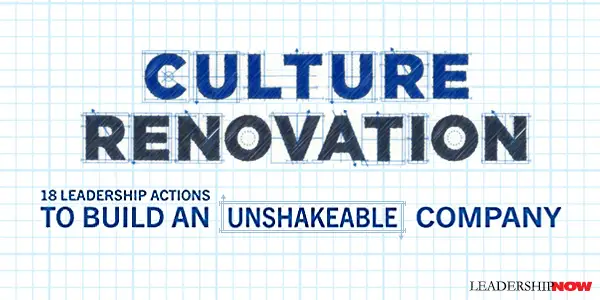
WE hear a lot about changing the culture. And the successful are more like renovations than they are like rebuilding the culture. Kevin Oakes advocates that mindset in Culture Renovation: 18 Leadership Actions to Build an Unshakeable Company Companies that effectively changed their cultures were successful because they were renovating what they had, not starting from scratch and completely rebuilding or transforming. Furthermore, he notes that the best time to renovate your culture is when all is well. Rarely do companies set out to change their culture when everything is calm and running smoothly, even though that is probably the best time to do it. Making the point that culture renovation begins at the top he replays the appointment of Satya Nadella as CEO of Microsoft after Steve Balmer in 2014. Cultural change at Microsoft began on day one. The key change was instilling a growth mindset. Microsoft’s culture had been rigid. Each employee had to prove to everyone that he or she was the smartest person in the room. Accountability—delivering on time and hitting numbers—trumped everything. Meetings were formal. If a senior leader wanted to tap the energy and creativity of someone lower down in the organization, she or he needed to invite that person’s boss, and so on. Hierarchy and pecking order had taken control, and spontaneity and creativity had suffered as a result. The culture change I wanted was actually rooted in the Microsoft I originally joined. The culture change I wanted was centered on exercising a growth mindset every day. The turnaround at Microsoft has been remarkable, and it started at the top. Oakes offers an 18-step culture change blueprint organized equally into three categories: Plan, Build, and Maintain. PLAN Step #1: Develop and Deploy a Comprehensive Listening Strategy. “Before an organization embarks on a culture renovation, it needs to first understand how the current culture is perceived. Too often, the senior team assumes they know what the culture represents. Too often, they are dead wrong.” Step #2: Figure Out What to Keep. Know what stays and what goes. Listen to employees (Step 1) is so important because “it not only illuminates what the culture is today, but it also helps determine the most positive and valued aspects of the company’s historical culture to carry forward.” Step #3: Set Your Cultural Path. “In the spirit of renovation, the new direction should acknowledge and embrace past successes, but set up the organization to forge new ground into an unknown future.” A carefully crafted purpose statement. Step #4: Define the Desired Behaviors. Once you have a short, pithy, and memorable purpose statement, the question is what behaviors will best support that statement. Step #5: Identify Influencers, Energizers, and Blockers. Know the informal organization using an organizational network analysis. Step #6: Determine How Progress Will Be Measured, Monitored, and Reported. “Ultimately, the reason for a culture renovation is to enable the organization to execute on its go-forward strategy. Because this change can sometimes take years, it’s important to define upfront what the indicators of a successful renovation should be, and to put in place mechanisms to monitor progress.” Oakes offers a number of common measures and methods. BUILD Step #7: Clearly Communicate That Change Is Coming. “To kick off a culture renovation, the CEO must articulate the purpose of the organization (whether new, old, or renovated), and that purpose must resonate with employees.” Step #8: Ferret Out Skeptics and Nonbelievers Early. This is the hardest step. “It’s the consistently de-energizing people that ultimately slow down or take down cultures. Ferret them out as early in the renovation as possible.” Step #9: Paint a Vision for the Future. The story matters. “73 percent of successful change efforts relied on stories.” A go-forward vision of the future. Most CEOs of corporate change failure attack previous leadership and focus their messages on the past. Step #10: Consciously Collaborate. Strong internal collaboration is important to drive change. The group must understand why they are coming together and what they are doing. Collaboration can go too far as in the case where “connectivity is through the roof because everyone believes they need to be consulted on decisions.” Step #11: Establish a Co-creation Mindset. “Though almost all successful culture change efforts begin top-down, it is critical to also get the buy-in of the workforce by creating a bottom-up (and middle-out) contribution mechanism.” Consider a Culture Hackathon. Ford “held a two-day event where employees worked in randomly selected teams to generate ideas to either fortify elements of the culture they loved or fix elements that weren’t serving the company well - #hackFORDculture. Step #12: Provide Training on the Desired Behaviors. Train leaders at all levels on the desired behaviors so that they can model them. “While leaders as teachers is one of the most effective ways to reinforce behaviors, it’s clear that successful culture change relies on overall leadership training across the organization.” MAINTAIN Step #13: Make Onboarding About Relationships Versus Red Tape. “If you want to maintain that culture renovation you worked so hard to put in place, you can start by improving your onboarding process.” The most overlooked aspect of onboarding: “Helping the new hire establish a network of trusted subject matter experts who will contribute to that person’s career success.” Step #14: Promote Those Who Best Represent the New. Behaviors that support the renovated culture should be rewarded. Showcase the “career advancement of individuals who best represent the new.” Step #15: Change Performance Management Practices. Most important is the “frequency and usefulness of feedback, clearly defining the business purpose of the performance process, and aligning it with the culture and values of the organization.” Step #16: Leverage Employee Affinity Groups. Interestingly, their research found that two-thirds of companies felt Employee Resource Groups were “more effective than other leadership development forums at developing leadership skills and competencies.” An ERGs primary benefit is to “raise awareness of the different groups of people that make up the workforce of most organizations.” Step #17: Increase the Focus on Talent Mobility. “During a culture renovation, one of the most successful talent initiatives an organization can focus on is rotating talent to strengthen ‘the pack’ and ensure the desired behaviors are exhibited throughout the organization.” Step #18: Don’t Underestimate the Value of External Sentiment. Use external feedback from places like Glassdoor, LinkedIn, and social media to monitor the progress of efforts to renovate your culture. Culture Renovation is less theory and more how to. You will find case studies and interviews with the participants of successful culture change. 
Posted by Michael McKinney at 07:35 AM
08.11.20

Full-Spectrum Thinking
FULL-SPECTRUM THINKING is not common, and never has it been. And as the world becomes more complex, confused, and scrambled, it has never been more critical. Bob Johansen describes full-spectrum thinking as “the ability to seek patterns and clarity across gradients of possibility—outside, across, beyond, or maybe even without any boxes or categories—while resisting false certainty.” In Full-Spectrum Thinking, Johansen writes that “the future will punish categorical thinking but reward full-spectrum thinking.” The future will be a global scramble that will be very difficult to categorize. You will need a full-spectrum mindset to have any hint of what is going on. The scramble will be fraught with toxic misinformation (not necessarily intentional), disinformation (intentional), and distrust. In this future, it will be very dangerous to fit new threats or new opportunities into old categories of thought. Fortunately, new spectrums of thought will become possible in new ways over the next decade. Full-spectrum thinking will be required in order to thrive. Full-spectrum thinking (FST) combines the “nuances of the analog world with the power and scale of digital.” I like that. FST is critical thinking that moves beyond binary, simplistic, categorical thinking. It’s questioning assumptions, stereotypes, and categories. Mindless categorizing is harmful and requires very little thinking. It’s dismissive. They create certainties that block us from seeing possibilities. They are, in a word, constraining. Johansen is not against categories “if they are fair and do no harm. All of us need to create structures and categories of some kind that work for us and for others.” He adds, “Rigid categorial thinking is a bad habit we need to break.” Rigid categorial thinking leads us to certainty, which Johansen and others have declared is the opposite of clarity. And in a narrow sense, I think that is true. Certainty without humility almost certainly, will lead to a lack of clarity. Certainty can blind us to reality—clarity—since we only see things from our own certain perspective. FST demands that we question and take a wider, more inclusive view of the issues before us. But there is a certainty that guides us to clarity and causation and keeps us from adding categories, confusion, and complexity where there are none. And we see that happening all around us. Johansen spends a good deal of the book applying FST to the future of business, technology, our lifestyle, and our sense of meaning. He noes that a forecast is to be evaluated on “whether or not it provokes a better decision in the present.” Adding, “Strategy lives between insight and action” and “every good strategy is based on a compelling insight.” Most companies think in terms of Now, Next, Future. Johansen advises us to shift our strategic orientation to Now, FUTURE, Next. Most of our attention should go to Now. But in a highly uncertain future, we need to look to the future (10 years ahead) for clarity then come back to Next to act in the now. Johansen looks at business development. “Think beyond products. Think especially beyond commodity products where competition is based only on price.” Organizations of the future will move beyond command-and-control to the U.S. Army’s practice of commanders intent or “direction is very clear; execution is very flexible.” Leaders will still be a source of clarity, but the leader will not always be on top. The source of clarity should be grounding, and it should flow up and out across the network. In an interesting chapter on Human-Machine symbiosis, he reimagines the human resources function. Perhaps we need to refer to it as Human-Computing Resources because humans are increasingly augmented by digital resources. Human resource professionals will need the ability to better understand the capabilities of nonhuman and computer-augmented talent. Intelligent coworkers with powerful digital augmentation will be everywhere. And this. As video gaming as a learning medium becomes more widespread, human resource practitioners will need to be “experts in the medium of immersive learning through digital and in-person experiences.” Categories themselves will also become “more fluid and cross-spectrum” as opposed to being binary—in or out. “Diversity will become more important even as it becomes more difficult to categorize.” Creating or finding meaning will become a growth industry. From faith springs hope. Faith has the power to shape our future. Faith grows out of a learning mindset. Faith allows you to navigate your way through things you don’t have all figured out. Faith helps you make your way through fear. Faith is grounded in a sense of humility and openness to learning in an uncertain future. Faith implies a full-spectrum mindset. Rituals and habits help to create meaning. “Rituals are a condensed code of meaning, and repeating the code [like saying “I love you” every day] reinforces the meaning.” Johansen believes that true digital natives (24 or under in 2020) are very good at full-spectrum thinking. “The true digital natives will challenge the social order.” Of course, every generation of young people challenges the social order whether they were brought up on video games and digital content or not. He points out that, “Kids are born with full-spectrum thinking, but adults, schools, and society often force it out of them with education, testing, technology, and culture.” How true. The difficulty for digital natives (like the rest of us) is not relying on soundbites and headlines to form our opinions. Most young people question the status quo and defy categories placed in front of them (or on them) by others. However, they also need to learn to express their thoughts and challenges in an emotionally intelligent way. Full-Spectrum Thinking does make you stop and think about the categories, boxes, labels we place on people and things. We need to learn to think deeper and broader about the issues before us. It is a valuable and cautionary book. Full-spectrum thinking will provide powerful ways to make sense out of new opportunities without assuming that new experiences mirror old categories, boxes, labels, or buckets. Full-spectrum thinking will help people avoid thoughtless labeling of others. Full-spectrum thinking will be a technology-enabled antidote to polarization and simplistic thinking. 
Posted by Michael McKinney at 05:56 PM
02.19.20

Organizational Health and Performance: Beyond Performance 2.0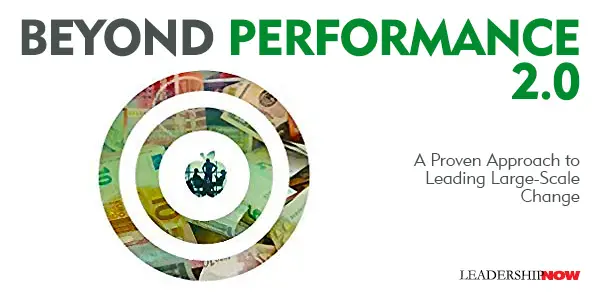
PERHAPS it goes without saying, but a healthy organization will achieve more than an organization that is too sick to support your goals. So, any change effort will be more successful when you focus on both performance and health. Considering that most change efforts only succeed 30% of the time, Scott Keller and Bill Schaninger (both McKinsey partners) put forth a change model to increase the odds of success (upwards of 79% of the time) in Beyond Performance 2.0. Successful change efforts are increased when we place equal emphasis on both performance and health-related efforts. The authors define performance as “what an enterprise does to deliver improved results for its stakeholders in financial and operational terms. Health is about the how. “Health is how effectively an organization works together in pursuit of a common goal. A more memorable way to think about health-related actions is that they are those that improve how an organization internally aligns itself, executes with excellence, and renews itself to sustainably achieve performance aspirations in its ever-changing external environment.”
An overemphasis on performance often causes a negative impact on organizational health leading to catastrophic failures in performance. We need t look no further than Volkswagen’s “dieselgate” scandal in 2015. Poor organizational health lead to cutting corners and rule-breaking. Samsung’s 2016 Galaxy Note 7 smartphone recall was attributed to its “deeply entrenched culture of urgency.” An equal focus on health would have mitigated these issues. An emphasis on both performance and health can be mace part of the change process by applying what they call the Five Frames of Performance and Health. The framework revolves around five questions:
Each of these questions is addressed in the framework for performance and health. These are the five frameworks for performance:
Here are the five frameworks for health:
What makes this all work is being intentional about both issues at the same time. They work with each other to bring you lasting change. The better the health of the organization the better your performance, and as your performance improves, it boosts your organizational health. The relationship is dynamic and not linear. As you move forward, plans change, conditions change, and assumptions are challenged. When this happens, you simply go back to, for example, the Assess question, “How ready are we to go there?” and make adjustments as necessary. An added benefit of this framework is that as you reach your goals, the organization learns and applies those learnings increasing the organization’s capacity for renewal. It moves you out of static thinking and into a learning mindset. And while our environment is continually changing, we have control over organizational health and therefore, can reap the increased adaptability it brings in spite of our circumstances. Gary Hamel put it well in his forward to our first addition, “Beyond Performance is far more than a guide to leading a successful change program. It’s a manifesto for a new way of thinking about [how] organizations … become, fundamentally, pro-change.” It’s not just about getting ahead; it’s about staying ahead. 
Posted by Michael McKinney at 08:15 AM
01.13.20

Helping People Change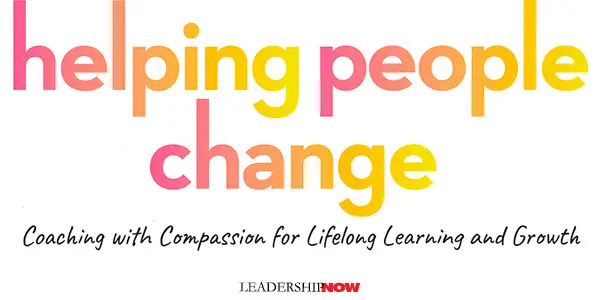
MOST OF US want to help people. And typically, we go about it by trying to correct a problem. We focus on what we think they should be doing. Makes sense. To us. But it frequently does not create sustainable change in the other person. Richard Boyatzis, Melvin L. Smith, and Ellen Van Oosten suggest a different approach in Helping People Change. Instead of coaching people for compliance, we should be coaching with compassion. The conventional view of coaching is that it is an activity where, “based on your experience, expertise, or authority, you advise individuals on what they should do and how they should do it. While there may be time and place for it, this type of coaching for compliance is unlikely to lead to sustained behavioral change.” When people change out of obligation, they often lack the inner motivation they need to sustain that change. For people to changes in ways that stick, that change has to connect with their passion and core values. To do that, you need to coach with compassion. Coaching with compassion is how we help a person frame the situation or opportunity in the context of who she wants to be as a person and what she would like to achieve in her ideal future. Such broad framing helps the person draw on the inner resources most likely to enable her to learn, change, or grow in the meaningful and sustained ways as she works through that situation, whatever it may be. The PEA Versus the NEA Coaching for compliance leads to a defensive response in the person being coached. They shut down and rather than learning or changing, they enter survival mode or what they term the zone of the negative emotional attractor (NEA). This is in contrast to coaching with compassion which elicits positive emotions as it focuses on a vision of a desired future state and strengths rather than weaknesses. This zone is called the positive emotional attractor (PEA). In this state, the person is relaxed and open, and new neural pathways form in the brain “paving the way for new learning, and sustained behavioral change to occur.” For sustained learning to occur, it is important that coaches manage the emotional flow of the coaching process. This means being able to both read and influence the emotions the person is experiencing. Getting people into a PEA state begins by asking the right questions. Questions that “discover their views of the word, their situation, and how they feel.” “Our mistake is in thinking—often assuming—that we can see what the other person should do to lead to a better life, be more productive, or learn more.” When we focus on the wrong things as a coach, we essentially block change. (Chapter 4 is the game-changer in this regard.) Three Cornerstones of Coaching Building a good relationship with the person you are coaching requires the right mindset. “First, believe that individual change is a process, not an event.” Change doesn’t happen overnight. We need to make room for mistakes, feedback, and more practice. “Second, consider your approach to coaching as a chance to mine for gold, not dig for dirt.” We need to connect with people’s strengths and their desired outcomes. At one time, Andrew Carnegie had 43 millionaires working for him. Carnegie was asked, "How did you develop these men to become so valuable to you that you have paid them this much money?" Carnegie replied that people are developed the same way gold is mined. When gold is mined, several tons of dirt must be moved to get an ounce of gold, but one doesn't go into the mine looking for dirt—one goes in looking for the gold. “Third, consider that the agenda for the conversation should come from the person being coached.” While the coach manages the process, “the fundamental reason for the process is to help the other person—not the coach to share his advice or experience.” It means listening more. This quote from gestalt psychotherapist Robert Lee is worth repeating every time we begin to work with others: “Our assumptions and stereotypes create filters for how we hear people. We don’t hear others from the place of who they are. We hear them through the filter of who we think they are.” When we coach for problem identification and problem-solving—as seems to make the most sense—we risk having the process becoming bogged down in negative emotions. “A problem-focused approach may seem efficient, but it ignores the fact that thinking about and arousing feelings about problems activates the NEA, which in turn can close a person’s imagination to new ideas and possibilities. Recognizing that a problem exists is quite different from spending a lot of time thinking and talking about it.” This book is invaluable not only for coaches but for leaders of all kinds—managers, parents, health care professionals pastors, and anyone who works with to guide others through life changes. The primary theme stressed throughout this book “is using personal vision to evoke positive emotions—essentially, to begin with the end in mind, thereby setting up the connections in the brain and emotions that will help us pave the road to the desired end.” 
Posted by Michael McKinney at 07:44 AM
05.03.19

Cascades: 6 Principles for Creating Transformational Change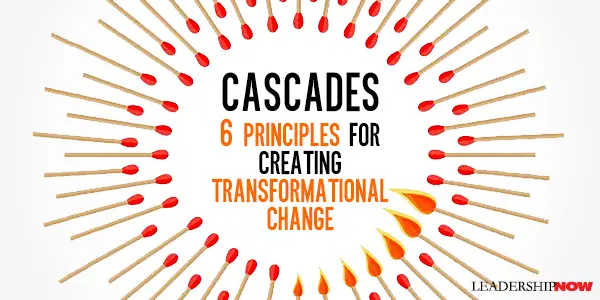
THE NATURE OF POWER has shifted from top-down to the center of networks. Networks are key to understanding how to create transformational change. As Niall Ferguson observed in The Square and the Tower, “Often the biggest changes in history are the achievements of thinly documented, informally organized groups of people.” In Cascades: How to Create a Movement that Drives Transformational Change, Greg Satell reveals how to start and sustain large-scale change and harness the power of cascades—small groups that are loosely connected but united by a common purpose. It is an insightful book with engaging examples of what has worked and what hasn’t. Forced change is not sustainable. “The role of leaders,” Satell writes, “is no longer to coerce action, but to inspire and empower belief.” He begins by explaining how small groups work and why. “Information spreads not through best friends but casual acquaintances.” It’s not connecting with the “influentials” because “change is a matter of networks and not nodes.” Satell explains the Threshold Model of collective behavior. As we all have different thresholds of conformity based on our on personal characteristics, there are varying thresholds of resistance in any group. For a trigger to spread it would depend on the distribution of resistance thresholds in a group. A person with a 0% threshold would throw the first rock, but if the rest of the group were of a higher resistance threshold, say 40%+, that would be the end of it. For a cascade to form, you need connections to higher threshold groups. “That’s a challenge because it means that you cannot only seek out the like-minded, you must also bring in the unconvinced, the skeptical, and the oblivious. If the desire to change remains with the zealots, it won’t go anywhere.” Satell distills from the lessons of history six principles for creating transformative change. He explains how each step “represents a crossroads where you will be tempted to make a point, but if you really want to make change happen, you will have to refocus your efforts on making a difference through building common ground.” 1. Identify a Keystone Change It starts with a grievance. “Yet to succeed, you must go beyond grievance to identify an affirmative vision for what you would like to be different and then identify a single, fundamental change that will bring that vision about.” For Gandhi it was salt. For Paul O’Neill of Alcoa, it was safety. The alternative you present must be better not just for the believers but for those outside the early adopter group. Speak to the common values to those outside your group. “The only way to win is to build a bond of trust that supersedes the economics of utility.” The keystone is critical. It’s not a matter of giving everyone something to create a majority of support. The keystone is a “fundamental issue that encapsulates the value of the mission—a keystone change that is concrete and tangible, unite the efforts of multiple stakeholders, and paves the way for greater change.” For Gandhi, the Salt Law was a grievance shared by everyone, and everyone could easily participate. It was only a matter of time for the dominos to fall. You must create a clear sense of purpose. “A lack of a clear purpose can hobble one almost before it starts.” The problem with the Occupy movement it that they fell in love with their own slogans and were never able to move past them. 2. Make a Plan Start with where you want to end up and figure out how to get there. Understand where the resistance comes from and ask how they can be convinced that this change is in their best interest or at least not worth fighting against. Who do you need to win over? While victory does not require you to win over all of those who resist change, you do need to erode the support of your opposition. …That’s why plans that are focused solely on rallying the faithful are doomed to fail. The only thing you accomplish is to harden the support of those who oppose your vision of change. Nobody wants to lose, but everybody wants a better tomorrow. 3. Build a Network of Small Groups Change does not happen alone. Often a single leader looms large like Gandhi, Nelson Mandela, or Martin Luther King, but they are just part of a deep network of groups that have been built up over time. They were masters of creating networks. To build a movement, you need a network of small groups linked together by a common purpose. Occupy Wall Street and Black Lives Matter didn’t gain traction because “in their quest to upend the establishment, they shunned any ties to existing institutions. Instead of puling in Pillars of Support, they actively pushed them away.” They didn’t allow others to connect to them. This is a key insight: To gain power, nascent movements must work to position themselves in the center of the networks around them. This has nothing to do with ideology. Many movements, including the struggles for independence in India and South Africa, and more recently, the LGBT movement, took what would once have been considered extreme positions. Yet by continually making new connections, they were able to shift the center of the networks and gain influence. In a nutshell: To grow, you have to connect, and the more you connect, the more central you become. The more central you become, the more power you have. And with enough power, you can bring change about. 4. Indoctrinate Genomes of Values You must stand for something. And these values must be communicated by and lived out through the behavior of the leadership. All adherents to the movement must internalize these values so that they become second nature to them. In the heat of the moment, it’s easy to toss them aside and respond inconsistently. “It feels good to reply to a snarky social media post with one that tops it. Yet the second you respond in the moment, you risk all of the work that has come before.” The following comment as told to Satell by Irving Wladawsky-Berger who retired from IBM in May of 2007, illustrates the need to understand what your value actually is. He recalls: At IBM we had lost sight of our values. For example, there was a long tradition of IBM executives dressing formally in a suit and tie. Yet that wasn’t a value, it was an early manifestation of a value. In the early days, many of IBM’s customers were banks, so IBM’s salespeople dressed to reflect their customers. So, the value was to be close to customers. Lou [Gerstner] reminded us of that, and we realized that if our customers now wore khakis, it was okay for IBMers to also wear khakis. How many manifestations of values do we treat as values in our organizations? 5. Create Platforms for Participation, Mobilization, and Connection A successful movement makes it easy for people to participate. The bar to entry is low. A nonviolent uprising invites more participation. “Unsuccessful movements rally the faithful and demonize those who don’t share their ideas or their commitment. They make their point but fail to make a difference.” Black Lives Matter and Bernie Sanders political campaign made this mistake. “Instead of reaching out, they seemed to revel in sticking their fingers in the eyes of potential allies, because to them only the most pure of heart belonged. Any deviation from strict doctrine was apostacy. That may rile up the most faithful supporters, but it alienates the rest of the Spectrum of Allies, and by limiting participation, greatly reduces the likelihood of success.” 6. Survive Victory It is common for change movements to fall apart after the objective has been met. Leaving the battle behind and learning to govern becomes key. “successful movements survive victory by staying true to their values even after the initial triumph.” As Gandhi remarked, we have to be the change. “It’s always easier to act in the moment or to prioritize an immediate need or desire than it is to sustain discipline and live up to the values you profess to believe in.” (Scott Cochrane provides a great example of that on his blog.) Maintenance comes after the victory. We must think about what comes next. “We are so focused on beating our opponents into submission that we fail to realize that they will eventually rise up again, learn the lessons of their failure, and return to fight with renewed vigor. That’s why we so often succeed in making our point, but fail to make a difference.” 
Posted by Michael McKinney at 12:07 AM
04.26.19

How to Use Discomfort to Drive High-Performance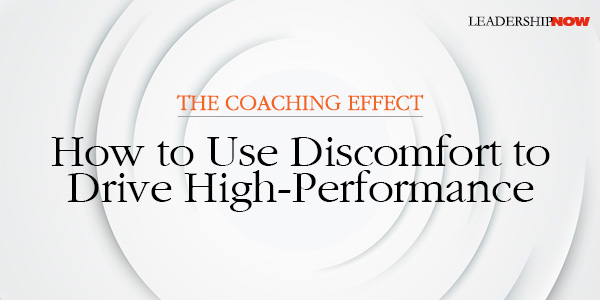
IT SHOULD go without saying that coaching as opposed to just managing people, is the key to developing high-performance organizations and teams. Leaders must be coaches. Any growth but especially growth leading to high-performance requires a degree of discomfort. It is the job of the coach to maintain a healthy discomfort for those on their team. In The Coaching Effect, Bill Eckstrom and Sarah Wirth have created the Growth Rings model to show why exponential and sustained growth only occurs in a state of discomfort.
The Growth Rings illustrate differing environments that exist in our world and how they either promote or hinder growth. Each ring encompasses one of four primary environments: Stagnation, Order, Complexity, and Chaos. Stagnation is a low-performing or low/no growth environment. “Stagnation is a situation in which people may need to follow too many steps, get someone else’s permission, or deal with minutia that stifles creativity, independent thought, or action.” Chaos is the opposite of stagnation but is also characterized by low performance and low growth. This can be a temporary state and brought on by external forces. Chaos is characterized by uncertainty and a lack of control. Order is the state we naturally gravitate to as it is the most comfortable. It is characterized by predictability and while in certain circumstances that can be desirable, it can also be catastrophic. Order doesn’t engender growth. Complexity creates growth. When you change what you input into an environment, you trigger Complexity. The discomfort introduced by Complexity brings growth. You can’t permanently exist in this state because you need a degree of order. The job of a coach is to how and when to introduce Complexity for individuals and teams. To define what a coach does, the authors introduced the Coaching Performance Equation:
Developing a trusting Relationship allows you to know what creates Order and Complexity for each member on your team, because Order to one may be Complexity to another. And great coaches know what unique buttons to push or levers to pull for each of their team members. Of all the activities a coach can engage in, the authors found that these four are the most important in terms of obtaining results: 1. One-to-One Meetings: “Proactive, consistent ono-to-one meetings are necessary to generate trust, communication, and accountability with team members.” And probably the most important coaching tool. Certainly, a lack of coaching negatively affects the performance of a team, but so does too much. More is not always better. Their research shows that the best performing coaches had meetings very two or more weeks. 2. Team Meetings: Boring comes to mind. Rather than talking the whole time, this is s a good opportunity to listen and let the team members share ideas with each other. “Team members want information, ideas, and training so they can do their jobs better.” 3. Performance Feedback: Good feedback is a gift. Providing good feedback is a skill that coaches must develop. The foundation of good feedback is trust. It needs to be clear, positive, timely, and specific. Describe rather than evaluate. “If we could offer only one piece of advice to coaches who want to improve their feedback, it would be to ask more questions.” 4. Career-Development Plans: This is often overlooked but one of the most important activities to team members. This is not necessarily about promotions. “Instead, you, your team, and your organization must think of career development as a way to help people grow and develop their skills and experiences for whatever their current and future goals may be.” You may have noticed that this requires a big time commitment and is probably the main reason most leaders avoid good high-performance coaching. They like the result but don’t feel they can take the time. In many ways it comes down to the fact that we like Order. But introducing good coaching, while it adds Complexity, brings desired results more than anything else a leader could do. The authors begin the book by asking, what does it feel like to be coached by you? They conclude by asking, what should it feel like to be coached by you?” 
Posted by Michael McKinney at 07:37 AM
01.28.19

Return On Courage
COURAGE is what gets you from here to there. But it’s not courage or risk. It’s courage and risk. They work together. “Those who are risk-averse are inadvertently courage-adverse,” says Ryan Berman author of Return on Courage. It is a balancing act. “If courage is the accelerator, then risk is the brake pedal. You need them both to drive a car, but you can’t press them at the same time or the car won’t work.” So how hard should you hit the gas? How important is it that you change? Why courage? Why now? Because companies are perishing at an alarming rate. Fifty-two percent of Fortune 500 companies from the year 2000 are now extinct. This is due primarily because the market has changed and we are afraid to do what we need to do to change with it. Qualcomm’s Roger Martin told Berman, “Everybody who’s involved in trying to resurrect what existed before, those people die…. You have to stop doing the thing that right now is making you a ton of money. You have to start shifting, and that pts the current income a risk.” And that takes courage — a lot of it. What is Courage? Berman defines courage as acquiring knowledge, building faith, and taking action. All three elements have to be present for there to be courage. Knowledge and faith without action is paralysis. Having faith and taking action without proper knowledge is reckless. Acquiring knowledge and then taking action is just not enough; it’s playing it safe. Courage is a daily decision that anyone can develop more of. It’s not a reckless action done without thinking because courage should always begin with knowledge. Central Courage System What we need is a Central Courage System. “The Central Courage System is a process that your team can repeatedly turn to for guidance. Once it has been established and implemented, you can lead with your system’s values, purpose, and point of view. The Central Courage System teaches us how to make bold, swift decisions.” The Central Courage System is represented by the acronym P.R.I.C.E.: Prioritize through Values, Rally Believers, Identify Fears, Commit to a Purpose, Execute your Action.
Prioritize Through Values Determine and then prioritize the values that matter most to you and your organization. And then by living these values, they become your organization’s “best friend, something your team can rely on during every decision and offering regarding your business.” Courageous decisions are easier when you have prioritized your values. Rally Believers The job of leaders is to create believers. “To do this, you must surround yourself with others who rightfully buy in to the values, purpose, offerings, and people of the organization.” Respecting your team, positive reinforcement, repeating and living your message helps to build believers. Identify Fears “Fear chokes us up and holds us back. Fear shackles us to the status quo where we feel secure and convinces us to avoid controversial action and hard conversations. Fear fuels paralysis and empowers unwanted procrastination.” So we have to address our fears head on—our industry fears, product fears, service fears, perception fears, and our personal fears. Author Brian Krans wrote, “Fear is the thief of dreams.” Commit to a Purpose Your purpose is your reason for existing. “To pick a purpose is to make a choice. What is your brand willing to commit to or sacrifice to make sure your purpose succeeds?” A worthy purpose must be truthful, purposeful (Not a call to action, but a call for action), emotional, and differential. Execute Your Action Without taking action, you, of course, go nowhere. When executing, you are either executing on a new offering or a new message. Either way, your mission “is to give people just enough information on your product or idea that they will persuade themselves.” Return on courage is the ultimate return on investment. 
Posted by Michael McKinney at 04:04 PM
09.13.18

That’s Not How We Do It Here!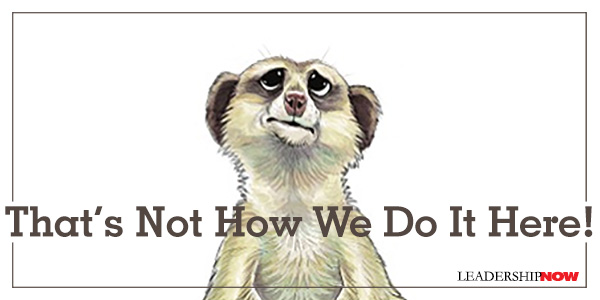
B It is the story of Nadia bright and adventurous meerkat who is part of a mature clan with over 150 members. This well-managed clan has done well to date but is now faced with unprecedented problems that challenge their once reliable rules and procedures. Unable to be heard in her clan, Nadia ventures out to see how other clans are dealing with the changes. She finds partial answers in the approach a smaller, loosely organized clan. Returning to her own clan, she figures out how to combine the best of both worlds—a large, disciplined, well-managed clan and that of a small, informal, inspiring clan. The story parallels the evolution of organizations of all types as they grow and mature. As illustrated in the chart below, most organizations begin by taking the approach in upper left corner (almost by definition). While a bit chaotic, they are curious, adaptable, and energetic. They are learning. But once success comes they nearly always move into the upper right quadrant. They begin to cope with their size by cementing in systems, structures and policies, that inadvertently kill speed, agility and innovation. New ideas are often greeted with, “That’s not how we do things around here.” If they persist in this approach, they quickly fall into the lower right corner, becoming complacent, rigid, and slow. The very talent they need to stay relevant and responsive to their changing environment begins to leave. If dramatic change comes their way, they are doomed. 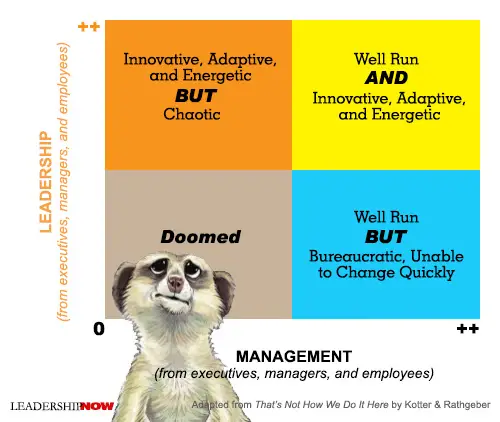 The answer isn’t to move back to the upper left corner. The answer is to combine the two by changing the way the organization is led. The authors suggest that leader begin by creating a sense of urgency around a clear opportunity and mission. Add to that a network-like system that spans silos and layers of hierarchy. These become entrepreneurial units that rekindle a sense of curiosity and learning. Contrary to the nature of a mature organization, much of this is dependent on the leadership’s willingness to communicate and embrace and nurture new ideas. Faced with the environment we are all in, we can no longer comfortably lead the well-managed, calcified organization to its doom. 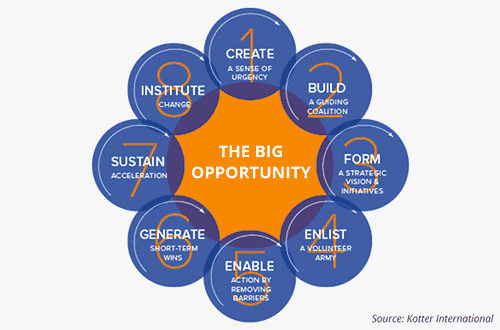 
w on Instagram" target="_blank">Instagram and Facebook for additional leadership and personal development ideas. 
Posted by Michael McKinney at 08:24 AM
08.29.18

Getting Real About the Monsters Under the Bed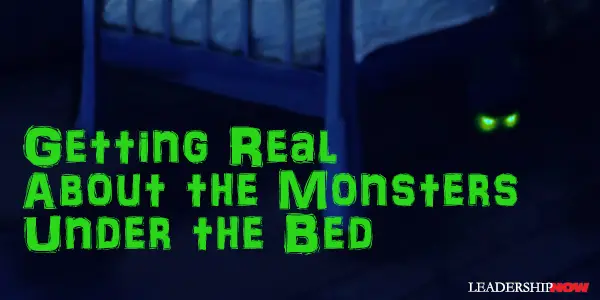
Some windows are lighted. But mostly they're darked. I once had a conversation with a neighbor who admitted, matter-of-factly, that she really doesn’t like change. This preference shapes her decisions, and her life, in countless ways. Now, I can intellectualize a desire to hold on to the status quo. But I don’t really get it. No matter how good things are, our lives can always be better. So why not strive for more: in our work, our relationships, our families, our communities? Not to be greedy, but to live life to its fullest, and to make our world a little better. Ultimately, I suspect the fear of change is really a fear of uncertainty. A nagging sense that the benefits of change might not justify the potential risks. Shakespeare describes this human condition well, as he so often does: “Our doubts are traitors/And make us lose the good we oft might win/By fearing to attempt.” [Measure for Measure, I:4]
The political discourse of late has become fixated on certainty, and it’s discouraging. “The problem is with the Mexicans, or the Muslims, or the banks, or the police, or the pharmaceutical companies.” We know in our hearts that simple, certain solutions are both incomplete and intellectually dishonest: “If we make these changes, then the monsters won’t hide under the [proverbial] bed.” Certainty may get votes, but it isn’t leadership. We aren’t children. Where is the courage—on either side of the political aisle—to admit that the world is complex? That we rarely understand the relationship between cause and effect? Klaus Schwab of the World Economic Forum wrote an excellent book, The Fourth Industrial Revolution, which should be required reading for all business and political leaders. Not because it paints a clear picture of the future. Rather, because it so clearly describes an amazing, uncertain future, full of both opportunity and peril. And because it raises critical questions that aren’t getting nearly enough attention—in the halls of Congress or the conference rooms of corporate America. As Schwab argued: “The fourth industrial revolution is not only changing what we do but also who we are. The impact it will have on us as individuals is manifold, affecting our identity and its many related facets – our sense of privacy, our notions of ownership, our consumption patterns, the time we devote to work and leisure, how we develop our careers, cultivate our skills. It will influence how we meet people and nurture relationships, the hierarchies upon which we depend, our health, and maybe sooner than we think, it could lead to forms of human augmentation that cause us to question the very nature of human existence. Such changes elicit excitement and fear as we move at unprecedented speed.” Surely, we all need to get more comfortable with ambiguity. We can scarcely understand the present, and we have yet to invent a crystal ball that sees into the future. Change is scary, but so is standing still. As Bono sang in U2’s (underrated) song, Summer Rain: “When you stop taking chances you'll stay where you sit/You won't live any longer but it'll feel like it.” I have bad news for my neighbor. Change is not just coming; it’s already here. And it’s going to accelerate. More than ever, corporate and political leaders need to get real. They need to acknowledge complexity, work together to confront difficult questions, and offer an honest, thoughtful assessment of risks and opportunities as they chart a path into an uncertain future. 
Posted by Michael McKinney at 07:30 AM
04.05.18

The Essentials of Theory U
W Part of the problem is the way we approach what we “know” and do. We need a new way of seeing, learning, and doing. This is what Otto Scharmer hopes to do with Theory U. With Theory U, Otto Scharmer has taken well-known ideas and combined them in a profound way. He asks, “How do we learn from the future as it emerges?” In The Essentials of Theory U, Scharmer takes the ideas first presented in Theory U over ten years ago, and made them more accessible. Theory U begins with our blind spot. We see the world the way we are. We create the world we live in. Action comes into the world from what is going on inside of us. Scharmer says, “I pay attention this way, therefore it emerges that way.” So we begin to understand Theory U with the blind spot. Too often we don’t factor in our interior condition. “We can see what we do (results). We can see how we do it (process). But we usually are not aware of the who: the inner place or source from which we operate.” That is our blind spot: the place from which our attention and our intentions originate—our source. The question for leaders is “How does our blind spot show up in our leadership?” What I give attention to, what I notice, what I act on, is a function of my interior condition. This of course, affects how and what we learn and thus what we can apply to any given situation. Typically, we learn from the experiences of the past, but because or most issues, responding with what we have learned is not going to be enough, Scharmer suggests that we work to learn from the future as it emerges. He calls this presencing. We can engage in the moment in two ways. One is the present moment that “is basically and extension of the past. The present moment is shaped by what has been. The second is a quality of the present moment that functions as a gateway to a field of future possibilities. The present moment is shaped by what is wanting to emerge. That quality of time, if connected to, operates from [pre-sensing] the highest future potential.” In times like ours, it is this second presencing quality of the present that matters most because “without that connection we tend to end up as victims rather than co-shapers of disruption.” How can we begin to presence as individuals, organizations, and as a society? Theory U is a way of making a system (or an individual) sense and see itself. The core process can be seen in the diagram below. Looking at the bottom “U” Scharmer describes each of the seven ways of attending to and co-shaping the world: Downloading is business as usual. Repeating the same old patterns of thought. In this state, “the world is frozen by our old mental habits and past experiences; nothing new enters our minds. Seeing is when we suspend our habitual judgment and wake up with fresh eyes. As we suspend we have to tolerate that nothing is happening. Staying with it is the key. Sensing is the “moment we redirect our attention from objects to source.” Our perceptions widen and deepen. “The boundary between observer and observed opens up.” We begin to see the from a perspective that includes ourselves. The system begins to see itself. Presencing is when we let go of the old and connect to the surrounding sphere of future potential. “The boundary between observer and observed collapses into a space for the future to emerge.” We are connecting to the deepest source—the interior condition from which we operate. Our purpose. Seeing from the whole. We must be willing to drop everything that is not essential. “Crossing the threshold means to be willing to let go. TO let go of old patterns, assumptions, and even our old ‘ego-self.’ Only then is it possible to step into our dormant potential, our emerging ‘Self.’” Crystallizing is when we begin to envision the future that seeks to emerge from a deep connection to the source. “Envisioning happens from the field of the future (rather than from our ego). Prototyping is exploring the future by doing. Bringing the new into reality by improvising and linking the intelligence of the head, heart, and hands. Performing by embodying the new from the context of the larger eco-system—the whole. Embedding the new through new practices, processes, and infrastructures while maintaining a connection to the source. The inverted view on the top of the chart is about destruction rather than creation. It is the result of closed will, heart and mind—fear, hate, and prejudice. Rather than experiencing presencing after downloading, we begin to deny or silence other views out of prejudice, we entrench, manipulate, bully and eventually destroy. Scharmer says “leadership is the capacity to shift the inner place from which we operate.” So that the primary job of leadership is to help people discover the power of seeing and seeing together. Theory U is about change. When you as a change maker begin to see what you didn’t see before and at the same time, see your own part in maintaining and defending to past patterns and thinking, real change can begin to occur. “The key leverage point for transformational change starts with attending to how you as a change maker relate to the system that you want to change and to the system that you want to give birth to.” For Scharmer, understanding change, boils down to this: “The quality of results achieved by any system is a function of the quality of awareness that people in these systems operate from. In three words: Form follows consciousness.”  
Posted by Michael McKinney at 07:39 AM
01.19.18

6 Characteristics of Type R People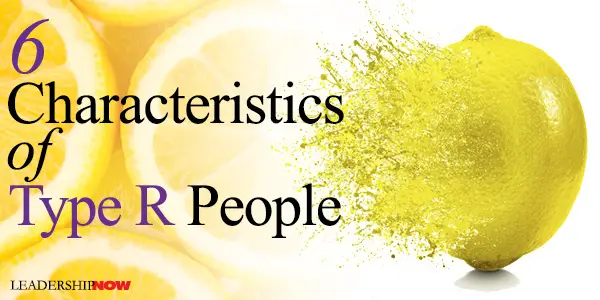
W Ama and Stephanie Marston describe what is needed to leverage change and hardship into opportunity as individuals and organizations and carry that progress into the world in the form of a contribution to the greater good in Type R: Transformative Resilience for Thriving in a Turbulent World. Those who flourish in this world don't just have resilience, they have Transformative Resilience: the ability to learn, grow, and spring forward. These are people they refer to as Type Rs. Transformative Resilience frames challenge as an opportunity rather than a problem. It leads to new approaches and questions about how to best address an issue. It asks, What other doors might open for me? What other things might I do? What changes do I need to make? It isn’t simply what happens to us, but how we respond to what happens that has the greatest effect on the trajectory of our lives after adversity. The world is uncertain, but the “certainty we seek is that we have the inner resources to transcend our challenges and in fact be transformed by them.” Having the Type R mindset and characteristics act as a shock absorber that enables people and organizations to cope with the day-to-day stress as well as the seismic events.” Regardless of our age or background, if we think of ourselves as adaptable, confident, robust, and able to continue to grow, we will spring forward from stress and challenges in our lives. The Marston’s have found six characteristics that reinforce and interact with one another that will help individuals and organizations to cultivate Transformative Resilience. Each one of these six characteristics can be developed and strengthened over time and when thoughtfully engaged, will take us to the opportunity beyond the challenge. 1. Adaptability Adaptability is the tension between “knowing when to hold firm and when to accept the changing world around us and alter our outlook, goals, and plans.” As our world becomes more uncertain, we tend to look back to the good-ol’-days for support, but this can make us resistant to change. Knowing what you can and cannot change and when to adapt and reframe to find positive outcomes, is a critical skill in today’s world. 2. Healthy Relationship to Control Closely linked to adaptability is having a healthy relationship to control. This involves having a strong sense of when to exercise control, when to persevere, and when to let go. While believing that everything is outside of our control and nothing that we do matters is unhealthy as it causes us to stagnate, believing that we alone are responsible for what happens to us is only healthy to a point. An extreme internal locus of control can cause us to take on “too much responsibility for ourselves and the world around us” causing undue stress and difficulty “because it doesn’t take into account eternal factors” and cause us to be overly rigid. Type Rs learn to “assess what’s within their sphere of influence and what’s not. They realize that strength isn’t always determined by triumph over the outside world but sometimes by changing our inner world.” 3. Continual Learning An important factor in continual learning is knowing yourself and reflecting on the situations you encounter so that you can extract the all the lessons you can to better prepare you for future challenges. Type Rs should always be aware of what is going on in their world so that they can learn and adapt in anticipation of coming challenges rather than having to react to them. Curiosity “is vital to adaptability and intellectual growth, and it motivates ongoing learning and forward motion.” 4. Sense of Purpose Having a sense of purpose is your north star. Regardless of the uncertainty and indecision around you, a sense of purpose grounds you with values to keep you on course and set a direction. It also provides you with the means to find meaning in whatever you are going through. Along with the other Type R characteristics, a sense of purpose helps to inspire others through the way we approach each situation. “Type Rs maintain a vision of what truly matters, what their lives and their work are about, and what they want it to be. A sense of purpose provides a buffer against obstacles; a person or group with a strong sense of purpose can more easily remain engaged and satisfied with life or work even while experiencing challenges.” 5. Leveraging Support Don’t go it alone. The Marston’s write that “One of the biggest obstacles to growing from adversity is the sense of being alone.” It is important for building resilience that we have a strong network of people we can count on both personally and professionally. They provide a safety net and a sense of security. They also help to give you time to reflect, create perspective, and think about the challenges you face. “Many of our successes might rise and fall with our ability to leverage support.” 6. Active Engagement Transformative Resilience “takes place when the Type R mindset and its various characteristics and skill are combined with forward motion.” Along with a healthy relationship to control, staying engaged is believing that no matter what happens you have what it takes to deal with the changing and often challenging circumstances in your life. This also means being proactive and confronting the issues rather than avoiding them. Knowing that you have the inner resources to stay engaged helps you to slow down and respond rather than reacting. While challenges are stressful, “research shows that those who focus on the challenging dimension of a stressful circumstance, rather than seeing it as a threat, experience a different form of stress.” This is because, “their fear reaction is suppressed and instead a response linked to hormones and parts of the brain associated with positive emotions and learning are triggered, thus encouraging engagement.”
What’s Your Type R Quotient? Take the Type R assessment. 
Posted by Michael McKinney at 05:14 PM
09.04.17

Jeffrey Immelt's 7 Lessons on How to Lead Through Massive Changes
J In an article from the September–October 2017 issue of the Harvard Business Review, How I Remade GE, Jeffrey Immelt shares seven lessons he learned along the way. Lesson 1: Be disciplined and focused. "You need a point of view. Your initiatives should be interconnected—and it's the leader's job to connect the dots for everyone in the organization." A point of view can take you somewhere. It allows others to get on board and contribute in ways that support that point of view. As leaders, we must communicate how each part contributes to the whole. Change should be holistic. It creates focus and passion. Lesson 2: Be curious and reflective. "You have to go through a period of rewiring your brain—getting yourself to the point of profoundly believing that the world is changing and that the survival of your company depends on either anticipating the change or being in the vanguard of those reacting to it." To drive lasting change, you must be firmly anchored in what they believe. With most change, you can expect criticism. Today more than ever, the sources of resistance are more numerous and varied. Knowing your own values and beliefs are the source of courage you will need to weather any pushback. You have to see change as vital—life or death. And you are focused on your core beliefs and values and communicate them clearly, you are less likely to be distorted from the primary objective. Lesson Three: Get people to see the need for change as existential. "Every time we drove a big change, I treated it as if it were life or death. If you can instill that psychology in your management group, you can get transformation." Our world is never static. We are often confronted with the need for change or slow death. It's change or die. But it has to be communicated to the point to where what you as the leader have come to understand, is understood by everyone in the organization or to those you wish to see change happen. The goal is to give up control to allow the change to be internalized in them. Lesson Four: Be all in. "Half measures are death for big companies because people can smell lack of commitment. When you undertake a transformation, you should be prepared to go all the way to the end. You've got to be all in. You've got to be willing to plop down money and people." Where you focus your resources communicates a lot about what is important to you. Lesson Five: Be resilient. "I subscribe to the words of the great philosopher Mike Tyson, who said, ‘Everyone has a plan until they get punched in the mouth.' It is so difficult to predict events. It is difficult to sustain transformation during tough times, but it's the only way to create a better future." You need flexibility of action and resiliency of character. The kind of change Immelt is talking about here is not incremental change. It's deeper than that and you little control over outcomes. It means facing uncertainty and letting go of control and adapting to guide your organization to the primary objective. You have to take the long view. Nothing will turn out exactly the way you plan it. Lesson Six: Listen and act at the same time. "You need to allow new thoughts to constantly come in, and you need to be open to the reality that your organization will have to pivot when it learns something new, while still having the courage to push people forward." Leaders must listen to those they lead if only because they firmly believe that their welfare is the goal. It's a sign of respect. And respect builds trust. When change is built on the needs of those you lead, it becomes their change too. Lesson Seven: Embrace new kinds of talent, a new culture, and new ways of doing things. Leaders must become not merely leaders of followers, but leaders of leaders. Ultimately a leader has to love his or her followers as much as they love the change they want implemented. As leaders we are necessary, but alone, we are insufficient. To create an adaptable culture, you need adaptable leaders.
Posted by Michael McKinney at 12:13 AM
04.14.17

Conflict without Casualties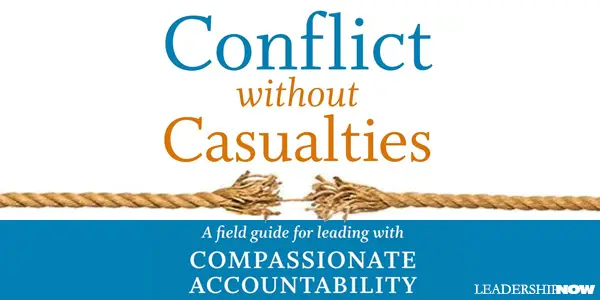
C Conflict is energy, and can be used in positive or negative ways. Negative conflict becomes drama, and it is costly to companies, teams and relationships at all levels. In fact, according to a Gallup Poll, negative conflict drains the U.S. economy by about $350 billion a year in lost productivity and wasted energy. In Conflict without Casualties, author Nate Regier believes that the misuse of conflict energy is the biggest crisis facing our world, and that we haven’t even begun to harness the creative potential of conflict. When people embrace the fullest meaning of compassion as a process of “struggling with” others in creative conflict, they can transform lives, companies, and the world. It is understandable that we try to avoid conflict considering all of the drama and negative fallout that always seems to accompany it. But Regier says if we use conflict correctly, we can use it to create. “Eliminating the casualties of conflict cannot happen by repressing the conflict and just ‘being nice.’ It happens by stewarding the energy inherent in conflict to make something positive, even amazing.” That seems like a tall order, but it makes sense. Compassionate Accountability The way forward is to practice Compassionate Accountability. Compassionate Accountability is a method for resisting the negative pull of drama—“I gotta win.” Negative conflict becomes drama. “Drama is the mismanaging of the energy of conflict. It diverts energy towards the pursuit of self-justification, one of the strongest human urges and the one that almost always gets us into trouble.” (Chapter 2 on drama is one of the clearest discussions of drama I’ve read.) To be compassionate is to struggle alongside with others; to struggle with instead of against. “Compassion is the result of people taking ownership of their feelings, thoughts and behaviors, and choosing to spend the energy of conflict pursuing effective solutions that preserve the dignity of all involved. Compassion is more than care and concern for others. It’s about the willingness to get in the trenches and struggle together as an equal with others.”
Openness
Resourcefulness
Persistence
These three skills are a process that starts at Open, moves to Resourceful, and finally to Persistence. They are three interdependent ways of feeling, thinking, and acting that work productively together. When Regier’s model is placed inside the Drama Triangle (developed by Steven Karpman), the author creates a useful visual for understanding where we often end up if we don’t intentionally stay the Compassionate Accountability course. Regier writes: “Drama inevitably pushes us into corners, where we cling to distorted worldviews that compel us to do the same thing over and over, expecting different results. Compassion, on the other hand, keeps us moving, searching, nimble, effective, and capable of adapting to change.” It also keep us from being mired inside our own head and thus limiting our responses and our ability to reframe the conflict. We get stuck.  It would seem that if you stop at Persistence then you become stagnant and eventually irrelevant. A state of non-judgmental receptivity would seem to go hand-in-hand with progress, the inevitability of change, and the understanding of others. “As a species, human beings seem to have a very difficult time returning to Openness in order to keep the cycle going. We take up residence at Persistence, which inevitably morphs into Persecutor as we fight to protect what we’ve built and save ourselves from the consequences of our own creation.” He adds, “Each point on the Compassion Cycle has a purpose. When that purpose is fulfilled, it’s time to move. Lingering after the purpose has been achieved is a recipe for stagnation and drama.” If you want to end the drama in your life or organization then you have to replace it with something else. Compassionate Accountability is the cure. Regier concludes the book with a section devoted to implementing this concept into everything you do. A very useful user’s manual. 
Posted by Michael McKinney at 06:01 PM
09.09.15

Why You Want to Change TO Something
WHEN we encounter something that needs changing we tend to view it as a “freedom from” problem. In other words, what can I do to get rid of the obstacles or constraints that are impeding progress? When thinking about change we should look at “freedom to” solutions. Both approaches lead to freedom but “freedom from” is a negative freedom and can lead to new problems. It’s like replacing a negative with nothing. "Freedom to" is a positive freedom. Michael Fullan writes in Freedom to Change that most people think that is all their obstacles to change were removed they’d be better off. But evidence suggests that you would have new and more difficult challenges to face like anxiety, isolation, and doubt. “Freedom From” does not consider the changes that liberation requires for success. For instance, what do I do with my new found freedoms?Fullan says that goal is not to be free and alone but to be free with others. It is the difference between being reactive and proactive. To do that he suggests four factors for maximizing freedom to change that integrate and manage the tensions inherent in individual and group dynamics: Autonomy and Cooperation: “Being our own person and being connected,” says Fullan, “is the core tension and challenge of living meaningfully.” We need both autonomy and cooperation. It’s not a choice. Organizations can give more autonomy in exchange for commitments to cooperate. Feedback: Between acceptance of others and learning choose learning. “Within strong collaborative cultures, an enormous amount of feedback occurs naturally through daily focused interactions.” Feedback can be a powerful tool for positive “freedom to” change if seen properly. Fullan advises us to be a learner under all circumstances. Accountability: External accountability schemes do not work because they tell us that the system is not performing, but not how to fix the situation. Dislodging top-down accountability is extremely difficult but by building widespread internal accountability, it actually furthers the organizational goals. “The more internal accountability thrives, the greater the responsiveness to external requirements, and the less the external body has to do—there’s less need to resort to carrots and sticks to incite the system to act responsibly.” In the “freedom to” world, you need to connect with others—especially peers. “It is in your own self-interest to promote a greater accountability with those around you.” Diffusion (by interacting more widely): Lead from the middle. “Work with peers to strengthen the middle, get more done, and become better partners upwards and downwards.” Loosen up hierarchical structure so that they are more amenable to individual and small-group initiative. Developing the “freedom to” capacity to take advantage of the new possibilities will be the hardest art. It’s always comparatively easier to get rid of old shackles than it is to take advantage of new freedoms.” Fullan writes, “Genuine independence can only be achieved by the connected individual.” 
Posted by Michael McKinney at 10:59 PM
02.19.15

6 Skills You Need to Win the Long Game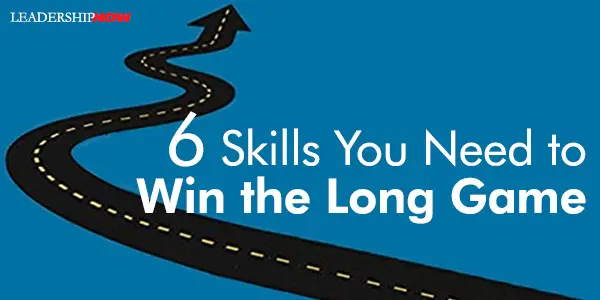
BRIAN DODD says he doesn’t like meetings but he loves strategy sessions because they are about movement and focus on accomplishment, not activity. They “make you glad you are a leader.” I presume he would agree with authors Steven Krupp and Paul Schoemaker. They say the number one business challenge for winning the long game is for leaders to become more strategic. In Winning the Long Game they write that “In times of crisis and change, when people are confused about what to do, ordinary leadership must rise to the level of strategic leadership.” The trick is to deliver short-term results while securing long-term viability. Especially in uncertain times, “companies must tilt more toward strategic leadership than toward operational excellence.” Strategic leaders need two perspectives: outside in and future back. Outside in means that a “strategic leader starts with the external marketplace when addressing problems, without getting wrapped up by internal organizational issues.” Future back means that when playing the long game strategic leaders use their long-term vision to guide their short-term decisions in a flexible way.
Anticipate: Strategic leaders are constantly vigilant, honing their ability to anticipate by scanning the environment for signals of change. They develop and maintain an external mindset. How quickly do you spot ambiguous threats and opportunities on the periphery of your business? (Chapter 1: Elon Musk) “Once a company becomes the master of its own universe, seeing new developments in adjacent markets becomes harder. Challenge: Strategic leaders question the status quo. Pope Francis is listening to new voices and deliberately bypassing old channels of communication. Open a window to let in fresh air and look in the mirror. Are you comfortable with conflicting views and differences in opinion? How often do you question your own and other people’s assumptions? (Chapter 2: Sir Richard Branson, Pope Francis) “Opening the window is the practice of promulgating outside perspectives to see complex issues in context. Looking in the mirror is the practice of deep self-reflection, whereby leaders confront outmoded beliefs, faulty assumptions, and stubbornness in themselves and others.” Interpret: Strategic leaders amplify signals and connect multiple data points in new and insightful ways to make sense of complex, ambiguous situations. Can you pick up on signals to distinguish anomalies from leading indicators of change? What are you not seeing or hearing? We begin by recognizing the facts and then “re-cognizing,” or rethinking, them to expose their hidden implications. (Chapter 3: Charles O. Holliday Jr.) “Leaders get blindsided not so much because they aren’t receiving signals but because they aren’t exploring alternative interpretations, or they get locked into one piece of the puzzle.” Decide: Strategic leaders seek multiple options to ensure flexible decision-making. They don’t get prematurely locked into simplistic yes/no choices. How often and how quickly must you make tough calls with incomplete information? (Chapter 4: Angela Merkel, Laurence Golborne) “Exploring options means having the wisdom, cool-headedness, and perspective to consider all of the alternatives available. Showing courage means demonstrating the fortitude to commit to the right solution and, if that solution proves ineffective, critically stepping back to reconsider.” Align: Strategic leaders engage stakeholders to understand change readiness, manage differences and create buy-in. They are adept at finding common ground. This requires active outreach. Good communication is key. Do you regularly engage your managers’ direct reports in decisions that affect their work? Where do you stand with the people you need to influence? (Chapter 5: Alex Ferguson) “There is an interconnectedness now in problems—and this changes the issues. You need to have more people involved with the decision making, leaving the leader less in control of the situation.” Learn: Strategic leaders continuously reflect on successes and failures to improve performance and decision-making. I like this chapter title: My Gift Was Not Knowing. It sums it up well. A quarter of a century after the publication of Peter Senge’s The Fifth Discipline, “the learning organization still does not have much of a foothold in the business world, despite skyrocketing uncertainty.” When was the last time you admitted you were wrong—in public? (Chapter 6: Reed Hastings, Sara Blakely) “Leaders must make their moves when the future is still ambiguous. If an organization is continually learning, then everyone is primed for change and ready to move in a different direction each day.” 
Posted by Michael McKinney at 11:27 PM
01.26.15

10 Rules for Future-Proofing Yourself
THE most common problem that modern professionals face is a lack of risk tolerance and a resistance to change. Scott Steinberg writes in Make Change Work for You, Scott Steinberg offers ten rules that successful people follow to future-proof themselves. But underlying it all is how we deal with fear. We need to find a quick way to neutralize its negative influences, find courage, and take positive action. He suggests we try the FEAR problem-solving method:Focus: When you see a problem, study it closely until you’re sure you are seeing it objectively.
The ten rules with Steinberg’s insights: Rule 1: Be Courageous
Rule 2: Make Fear Your Friend
Rule 3: Turn Anxiety and Paranoia into Awareness
Rule 4: Transform Failure into Success
Rule 5: Master the Art of Improvisation
Rule 6: Play the Odds
Rule 7: Experiment Constantly
Rule 8: Pick Your Battles
Rule 9: Keep Forging Ahead
Rule 10: Stay Relevant
Steinberg concludes, “Being future-proof means being flexible, greeting change, and innovating your way out of problems by training yourself to put fear on the backburner, make decisions under duress, and make the most of the tools and resources available.” 
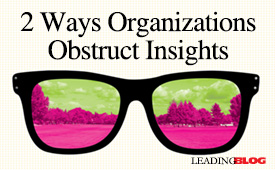 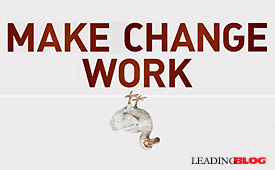
Posted by Michael McKinney at 11:38 PM
12.18.14

quickpoint: Strategy and Leadership WHEN confronted by “unusual uncertainty” as Ben Bernanke put it, leaders need to be able to think and act adaptively. It’s jazz—strategic improvisation. Professor David Teece of University of California Berkeley Hass School of Business shares this in the foreword of Winning the Long Game: A firm’s dynamic capabilities rest on two pillars: (1) the vision and leadership skills of managers, and (2) the cohesion and flexibility of the organization as a whole. Leaders must fashion sound strategies for the enterprise, and the organization itself must be agile enough to adapt as required. An organization’s culture and values are much slower and more difficult to change than its structure or processes, and can hamstring even an excellent strategy if its leaders cannot show the way forward. 
Posted by Michael McKinney at 07:45 PM
10.23.14

The Moment You Can’t Ignore
A LEADER once told me, “We’re stuck.” It was an un-ignorable moment that reflected a cultural issue within the organization. In this case, it hinged around a destructive, persistent, self-perpetuating organizational belief about what leadership should look like that had plagued it for decades. Un-ignorable moments, write authors Malachi O’Connor and Barry Dornfeld, “typically occur when an organization is teetering on the brink of a cultural shift.” They share four characteristics: they are public in nature, they are irreversible, they are systemic, and they challenge the identity of the organization.What makes an un-ignorable moment so powerful is that the clash of cultural expectations doesn’t stop with the individuals engaged in the incident. Because identity is formed in part through group memberships, the moment calls into question the identity of the entire group—not just the identities of the people directly involved. It often shakes up the groups involved in ways that call into question why they work the way they do, and this can be very disturbing. Being stuck is not an entirely bad thing if you can use it to propel you forward. But of course it takes a secure and selfless leader. The challenge is “not to tamp the energy down but to draw it out and channel it.” It helps if you think of it this way: “The tensions and bottlenecks inside your organization can act as a source of creative energy. This is often not the case with places in the organization where everything is running smoothly, everyone feels comfortable, and there are no tensions or pressures. Those places rarely stir up change.” And therefore they don’t grow. When you feel unsettled it is a good sign that something new and interesting may be happening. Listening becomes a key quality. If you lack it as a leader you will miss it and the price you pay may be your own irrelevance. The authors encourage us to look within the organization itself for answers. “Where does the solution already exist? Where is the future already happening in your organization right now?” To successfully lead through a cultural shift, leaders need to command and collaborate. But not a command style that displays a “dictatorial disregard for the capabilities of others,” but “by creating a commanding presence and a commitment to developing the capabilities of others throughout the organization.” They recommend you focus on two central tasks: “protect the organization by keeping it within its safety zone during times of cultural transition, and guide and direct the organization as a conductor artfully leads an orchestra.” The Moment You Can’t Ignore helps us to look at those things we often don’t want to address if organizational success is our primary focus. O’Connor and Dornfield note that “Culture is not the solution to every challenge, but it is the source material from which solutions can be drawn.” 
Posted by Michael McKinney at 10:45 PM
08.14.14

5 Leadership Lessons: Opportunity and Risk are Soul Mates
The Risk Advantage by Tom Panaggio is designed as a guide for those who are contemplating an entrepreneurial pursuit, are already engaged in building a business, or are currently working for someone else and want to inject their entrepreneurial ideas and attitude. “Those who understand where risk belongs in their lives,” says Panaggio, “will ultimately be successful.”
The reality is that important decisions made by intelligent people having the best information and intentions could still result in an undesirable outcome. Leaders make decisions to determine the company’s direction. Promoting the proactive nature of decision-making is the objective because in an environment where there is decision paralysis, forward motion ceases, and that is a bad outcome.

Posted by Michael McKinney at 08:52 PM
05.02.14

Make Change Work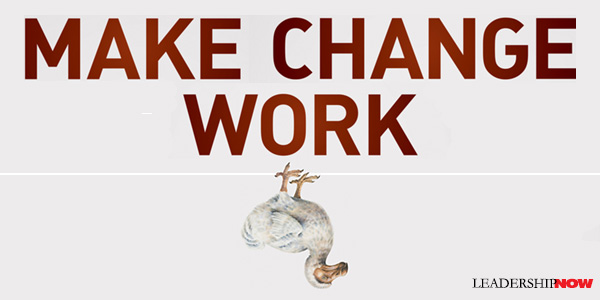
“People want to be led through change, not managed through it,” says Randy Pennington. Processes are an important left-brain activity, but people want to be led into the unknown which is a right-brain and often messy activity. Change leadership is a decidedly right-brained activity. When it comes to people, the shortest distance between two points isn’t necessarily a straight line. It is often a stroll or two around the block. And that takes real leadership. Make Change Work by Randy Pennington is a change handbook informed by a good grasp of human nature. In other words, it is extremely helpful in implementing change in the real world with real people.Pennington presents the well-reasoned, tactical side of change while incorporating the emotional—“it depends”—side of change leadership. It’s the human side that Pennington weaves in so well – and so clearly – that makes the tactics work. His approach helps you to understand what you are doing “big-picture” when trying to implement any change personally or organizationally. In that regard it is an invaluable book for anyone at any level. Pennington deals with six fundamental principles that make it difficult for people and organizations to change:
Pennington writes, "There is an adage that past performance is the best predictor of future performance. That happens because most of us are not very good at thinking clearly about the opportunities presented by change."
On the other hand, coyotes are known as:
The dodo bird is extinct because it was perfectly suited to thrive in a world that ceased to exist when humans entered the picture. Coyotes, on the other hand, have flourished in a world where there are constant threats to its very survival because they continually adapt. Which one are you? Leaders who can make change work will be in constant demand. Make Change Work is about how to lead change, not manage it. Excellent material. 
 
Posted by Michael McKinney at 06:30 PM
02.12.14

The Problem of More: Scaling Up Excellence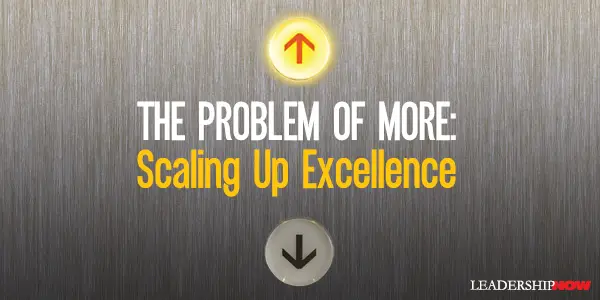
HOW DO YOU scale up excellence? How do you spread constructive beliefs and behavior from the few to the many? Bob Sutton and Huggy Rao tackle these questions in Scaling Up Excellence. What they found is that it simply isn’t a matter of just running up the numbers by replicating the same old magic again and again. In fact, they write, “Scaling well hinges on making the right trade-offs between mandating that new people and places become perfect clones of some original model versus encouraging local variation, experimentation, and customization. Something they refer to as the Catholic approach versus the Buddhist approach.Scaling up The process requires the mindset of a marathon. It’s like building a bridge as you walk on it. It requires faith and perseverance. Scaling is akin to running a long race where you don’t know the right path, often what seems like the right path turns out to be the wrong one, and you don’t know how long the race will last, where or how it will end, or where the finish line is located….[And yet] plenty of people and teams find ways to master this mess, take satisfaction in their daily accomplishments, and take pride in spreading constructive beliefs and behaviors far and wide. The book is centered on seven mantras of scaling up excellence. They serve as signals as to whether your scaling is going well or badly. Here are the mantras and how Sutton and Rao define them: Spread a Mindset, Not Just a Footprint
Engage All the Senses
Link Short-Term Realities to Long-Term Dreams
Accelerate Accountability
When scaling goes bad, three elements are usually present: Illusion, Impatience, and Incompetence. Decision makers think this is going to be far easier than the facts warrant; they are quick to rush the rollout thinking that when they are ready everyone is ready; and they frankly don’t know what they are doing. A related hallmark is that decision-makers don’t recognize when they are on the verge of subjecting victims (and themselves) to overwhelming mental load, distress, and turmoil. Scaling Requires Both Addition and Subtraction
Slow Down to Scale Faster—and Better—Down the Road
A few other thoughts to consider when considering a scaling an idea or initiative is to conduct a premortem. Ask participants to imagine that it is a year from now. What success or failure has occurred? Was it a good idea? Are we happy living in the world we’ve built? “Looking back from the future helps people bridge short-term and long-term thinking—a hallmark of successful scaling.” While excitement may be there in the beginning, it will soon wear off if steps are not taken to live it. “Although creating enthusiasm and spreading awareness about new beliefs, behaviors, and initiatives are useful first steps for mobilizing a mindset, they aren’t enough. People have to live it or it won’t stick.” Along the way, you need to continue to evaluate your beliefs and mindsets. “You should never stop asking whether the time is ripe to cast them aside.” As part of this approach, it is important to remember that “although more roles and processes are needed as organizations and projects expand, skilled leaders wield their power to eliminate needless friction and complexity—not burden employees with ‘rules, tools and fools’ that make it tougher to do their jobs and waste money and talent.” While scaling is often thought of in terms of growing a company, it is also about spreading an idea. Scaling Up Excellence is an excellent guide on both counts.

Posted by Michael McKinney at 10:48 PM
01.28.14

Overcoming the Problem of Willpower
OUR WILLPOWER is simply outmatched by our habits and attitudes. The solution says Caroline Arnold in Small Move, Big Change, is translate your goal into microresolutions—small but meaningful behavioral changes. Instead of commanding yourself to be an organized person or lose weight through willpower—to be what you are not—the idea is to define explicit actions to practice, one by one, until you begin to do what an organized or fit person does automatically. “Microresolutions focus on doing, not being. Being different follows, rather than precedes, deliberate action.” The more change we impose on ourselves, the more resistance we must overcome. And yet we nearly always shoot for an instant transformation, resolving to be slim, to be neat, to be on time. Such wannabe resolutions require changing scores of behaviors and put us broadly at war with autopilot. Arnold’s microresolution system is organized into seven rules: Rule 1: A microresolution is easy. The easier it is, the less you’ll be tempted to talk yourself out of it. Rather than resolving to walk to work every day, an easy microresolution would be to walk to work one day a week. Rule 2: A microresolution is an explicit and measurable action. Your resolution must focus on a specific change of behavior, not a result than can be achieved in multiple ways. Rather than say “eliminate 100 calories a day,” a microresolution to cut a habitual afternoon snack of a candy bar in half is an explicit and measureable action. Rule 3: A microresolution pays off up front. To “lose twenty pounds by summer” does not have an immediate benefit. “Stop eating after 8:00 pm” does. Rule 4: A microresolution is personal. Finding the most effective resolution requires careful self-examination. Rule 5: A microresolution resonates. It’s positive rather than negative. Instead of “I resolve not to be defensive when receiving feedback,” you might reframe it as, “I will listen, acknowledge, and give thoughtful consideration to feedback.” Rule 6: A microresolution fires on cue. Establishing a strong link between an action and its cue is essential for making a new behavior automatic, and a careful framing overall will help you nail your resolution and make practicing it more enjoyable. Rule 7: Make microresolutions just two at a time. Limiting your resolutions ensures that you have the attention and endurance to stick with a behavioral shift until it becomes autopilot. “The art of self-improvement is not about perfection but about priorities,” write Arnold. In part two, Arnold applies these rules to specific areas of self-improvement such as sleep, fitness, diet, clutter, and relationships. Small Move, Big Change is engaging to read and easy to relate to. It will help you overcome the willpower problem and make progress with any changes you’re faced with. 
Posted by Michael McKinney at 10:30 PM
12.23.13

2 Ways Organizations Obstruct Insights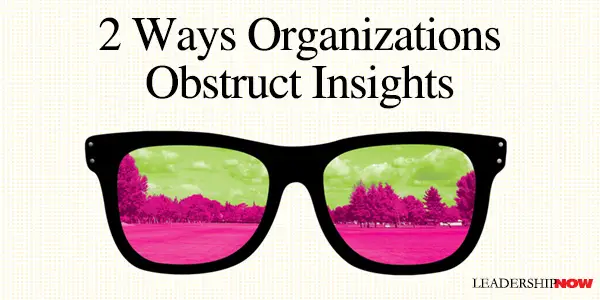
WE all want insights—the new thinking that “shift us to a new story, a new set of beliefs that are more accurate, more comprehensive, and more useful.” But we often don’t want the disruption they bring because insights have the power to change how we act, think and feel. In Seeing What Others Don’t, author Gary Klein says that organizations stifle insights because we value predictability and crave perfection.We fall into the predictability trap because we are “so captured by the lure of predictability” that we make it too high a priority. In short, we like the status quo. Managing people is easier when we know what we are doing and we are doing it in a certain way. Insights can change how we relate to each other and that creates the unexpected. “Insight is the opposite of predictable.” Organizations don’t like errors and try to eradicate them. Mistake-free performance helps keep things on track and running smoothly. “It’s much easier and less frustrating to manage by reducing errors than to try to boost insights. You know how to spot errors. You don’t know how to encourage insights other than hanging inspirational posters on the walls.” Even though insights can improve on perfection, perfection gets the job done. Why rock the boat? "In well-ordered situations, with clear goals and standards and stable conditions, the pursuit of perfection makes sense. But not when we face complex and chaotic conditions, with standards that keep evolving.” “The actions we take to reduce errors and uncertainty can get in the way of insights. Therefore, organizations are faced with a balancing act. Too often they become imbalanced and overemphasize … reducing errors and uncertainty.” To increase certainty and reduce errors we tend to:
All of these have benefits to organizations and individuals, but the problem arises when they are pursued with so much zeal that they interfere with insights. They can squelch thinking and reflection and lead to robotic behavior. Insights are dis-organizing, but we need them to stay relevant and grow. 
Posted by Michael McKinney at 03:43 PM
12.02.13

Leading Through Uncertainty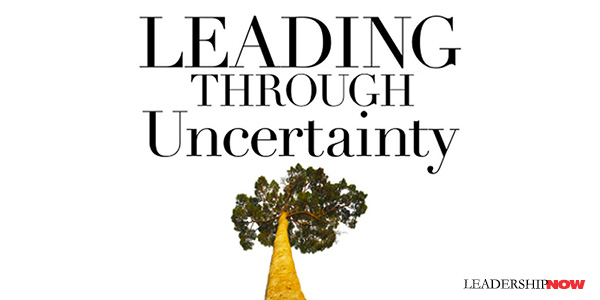
IN times of great uncertainty, we must be leaders. In Leading Through Uncertainty, Ray Davis writes, “Effective leadership is motivating, and it can and should be the energy that propels a company through inevitable waves of change. Poor leadership can lead to disaster and has sunk more than a few companies and governments alike.” Davis divides the book into three parts: leading yourself, leading your organization, and leading the way. He shares the ideas that have allowed Umpqua Bank—the West Coast’s largest independent community bank—to emerge from the economic crisis even stronger than before. The problem some will have with the book is that it requires a secure leader. A leader that can set his or her ego aside. And a leader that truly cares about their people, their organization, and the people they affect. Leading through uncertainty means leading with the truth. People can handle the truth. “The negative energy created by worrying is replaced with positive, productive actions and attitudes.” Of course, some leaders are afraid of the truth because it incriminates them and exposes their weaknesses. Davis says, “I always tell our people that they’re entitled to get answers to every question they have. I let them know I’m not going to defend myself when it comes to their questions, but I will explain what’s going on. I also tell them that while they’re entitled to answers to every question, that doesn’t mean they are going to like the answers.” Being truthful means acknowledging the problem. Saying peace when there is no peace—saying everything is fine when it isn’t—is only whitewashing that will erode trust and peace. You must have a firm foundation in the basics, says Davis, and then walk the walk and talk the talk. We’re all busy but listening is essential. “I think it is a mistake for people in my position not to make themselves available to their customers, their people, and the community at large.” When you don’t have all the answers, listening goes a long way. Leaders don’t lead in a vacuum. Secure leaders reach out to others. They give them the ability to provide constructive criticism which is hugely valuable of and by itself but it also serves to motivate and keep people involved in the process. “How else can a company get better if it’s not willing to listen to constructive criticism if it’s not willing to listen to what it’s not doing as well as it could? If you’re not willing to listen, you’re not going to improve and you’re not going to grow.” Great leadership begins with us. “I believe this starts with an introspective and honest inventory—first of yourself and then of your organization. Companies regularly evaluate their strengths, weaknesses, opportunities, and threats to make sure they are focused on the right issues. I wonder, however, how many leaders do the same evaluation on themselves. I recommend this as a good starting point.” 
Posted by Michael McKinney at 11:22 PM
10.16.13

5 Steps to Thinking in New Boxes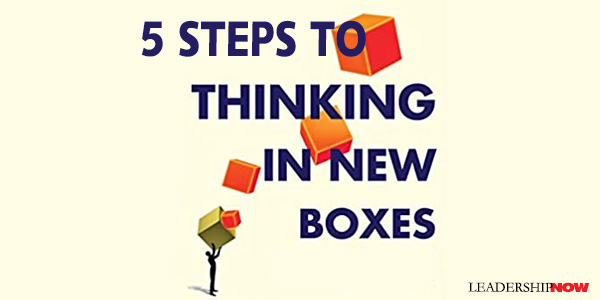
THINKING outside-the-box is a useful metaphor for thinking creatively or trying to get out of a rut. But practically speaking, it’s not going to happen. Your brain just doesn’t work that way. Your brain needs boxes. You can’t think without them. We create and use mental boxes to organize and use what we know. The reality is, getting out of one box means getting into another. Thinking outside-the-box really means finding a new box. A new box with different assumptions, prejudices, beliefs, and parameters. A different box will give you different answers because it forces you to ask different questions. In Thinking in New Boxes, authors Luc de Brabandere and Alan Iny say that the improved solution will be found in a new box. Here’s the key thought: “Since your brain needs models or boxes to think, the key to being creative in practical ways, to managing change during these times of such uncertainty, is to first try to understand your existing boxes to a greater degree, and then attack any situation or issue by developing a range of new boxes. You can then carefully choose which box(es) to use, even as you embrace the ambiguity inherent in doing so.” Based on how the human mind actually thinks and reasons, the authors have developed a five-step approach to thinking in new boxes: Step 1: Doubt Everything
Step 2: Probe the Possible
Step 3: Diverge
Step 4: Converge
Step 5: Reevaluate Relentlessly
Thinking in new boxes is first about being aware of the box you’re in and why you’re in it. The reason many find it difficult to change – to move to a new box – is because they don’t know why they think and do what they do. Once you do, it’s easier to see where you need to go and what you need to do. 
Posted by Michael McKinney at 11:46 PM
09.16.13

Why We Need Strangers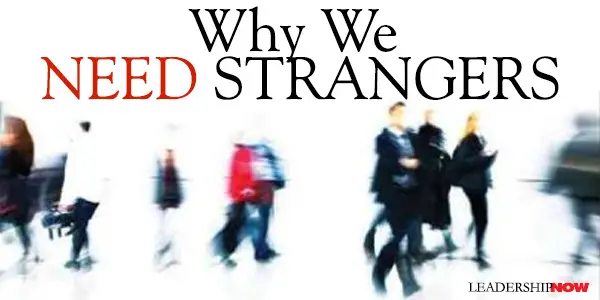
PART of the reason we get stuck and part of the reason we lack the feedback we need is that we are surrounded by the familiar. The familiar that continuously reminds us that we are doing the best we can and that we are doing it right. We are mired in the familiar when what we need is the strange. We need strangers. “These strangers,” writes Alan Gregerman in The Necessity of Strangers, “whom we quickly choose to ignore or form an opinion about, are the people who force us out of our comfort zones and challenge us to question the knowledge, belief, and habits we hold dear.” Gregerman asks, “What if strangers are actually, in many ways, more important than friends?” Interesting question. There are two issues here. “First, most of us just don’t have enough friends or a diverse enough set of them to give us the breadth of insight and perspectives we need to continually stretch our thinking and to grow. And second, the exact reasons why we count on friends are the same reasons that their input may not be ideal for our efforts to stretch and grow.” Maybe it’s not who you know but who you could know that will determine your success and growth. While we tend to be adverse to outsider's thinking, our real aversions, says Gregerman, “should be to see our own thinking as the only way to move forward. The real trick is to “pick the right strangers with ties to what we hope to accomplish and then ask them the right questions.” Gregerman suggests that 99% of all new ideas are based on an idea or practice that someone or something else has already had. New employees are a great source of fresh ideas, but we tend to quickly shape them into the way we do things. “They arrive filled with different ideas and fresh perspectives based on a new and different set of work and life experiences—ideas, perspectives, and experiences that might actually make us more efficient, effective, innovative, customer-focused, and successful if we were willing to listen.” If we don’t focus on the strange but instead focus on the different that we could tap into, we might grow in ways we never imagined. “Everyone matters. And that’s an idea that leaders must convey.”

Posted by Michael McKinney at 10:42 PM
07.24.13

The Business of Belief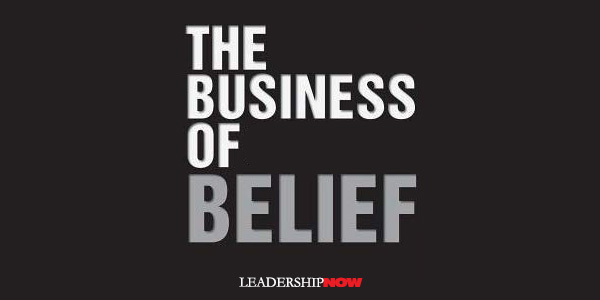
"Belief has been a most powerful component of human nature that has somewhat been neglected," says Peter Halligan, a psychologist at Cardiff University. "But it has been capitalized on by marketing agents, politics and religion for the best part of two millennia."TOM ASACKER reveals the role of belief in leadership in The Business of Belief. For leaders and organization, belief is the issue. It is at the core of who we are, why we do what we do, or approach to change, and how we lead. "If you want to change the world, if you want to change your world, if you want to succeed at work, in the marketplace, or in any other social endeavor or organization, belief is your Holy Grail" writes Asacker. Beliefs are nothing more than working assumptions. Belief may or may not be true or even rational. But belief is at the heart of making your leadership work. We fight for choice and fight wars to protect choice, but we don't always live with choice, we more often live with our own self-imposed dogma. "Choice is liberating, and belief flourishes with the freedom to choose. But every choice also chains us, because it rejects a world brimming with competing opinions and possibilities. Our believing minds simply cannot function while brooding over all of those chains. The psychic strain would paralyze us. And so we ignore them." We want control over our world. And that desire impacts how we operate in the world. "If we believe we know what's happening around us, especially the near term future and general direction, we feel safe. That's why we resist change and want our agendas and ideologies to prevail." This is where, I believe leadership comes in. And Asacker addresses that in part two: Those skilled at motivating people to cross a new bridge to change their beliefs and behavior, are not trying to cajole or manipulate them against their will. Rather, they seek to guide them to a new destination, a transformed way of feeling, thinking and acting that's aligned with their personal desires and values. To paraphrase industrial designer Dieter Rams, good leaders "must have an intuition for the reality in which people live." It's one of the reasons that self-centered leaders struggle. Great leaders, as Asacker writes, must design new beliefs. "Creating belief is about affect before effect. It's about finding people who want to believe and making them feel comfortable." It's about making it ours. And this is key: "Making it ours is not giving us control of the ship. Rather, it's connecting the voyage—especially the questions, highlights and successes—to our desires and choices." That's leadership. In part three, Asacker turns to what we can do personally to understand and manage our own beliefs. He issues this challenge: Face it: We are either breaking out of our spirit-sucking routines and breaking through to new insights and experiences, or we are breaking down. So when the opportunity to step out of your comfort zone arrives, and it definitely will come, take it. Say no to the sure thing and say yes to a creative challenge. Say no to short-term, comfort producing activities, and say yes to fear, passion and leadership. I've only scratched the surface here. The Business of Belief is full of thought-provoking ideas and statements that will make you think. Perhaps I should say they will distract you. "Distractions and difficulties turn on our thinking mind, which undermines belief by overriding our instincts." May you be distracted.

Posted by Michael McKinney at 03:14 PM
05.21.13

Change with Confidence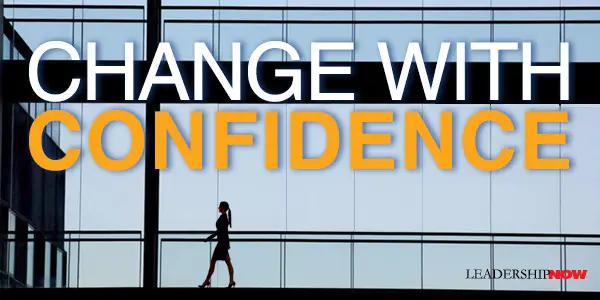
Change with Confidence by Phil Buckley is a great handbook for working through a big change project. The book is organized around 50 critical and practical questions change leaders ask. The examples provided throughout the book mostly reflect his experience as co-lead in the global integration of Kraft and Cadbury. I think that this is some of the hardest change to lead because you are not just merging systems and processes but different organizational cultures. He reflects on the critical issues and the analysis is quite helpful.Buckley's approach is people-centered and emphasizes the responsibility of change and organizational leaders. Not surprisingly, the first question considered is "What do I bring to the project?" Knowing the answer helps you bring confidence and resolve to the change project. Buckley writes: Many change leaders don't realize that the people who must adopt the changes are the ones who control the long-term success of the project, and if they don't take on new ways of working (and stick with them), the project will ultimately fail and most benefits will be lost. Therefore, the best strategy for ensuring success is to work with people and make sure they have everything they need—including respect, encouragement, information, tools, and the opportunity to shape the change to fit their environment. Importantly, Buckley also deals with questions such as, "How do I manage my day job, change project, and life?" Not only will change projects test you as a leader in both your abilities and self control, they will eat up as much time as you give it. "A reasonable life balance will help you stay focused on all of your priorities." This book can help any change project from beginning to end and help you grow as a leader in the process. 
Posted by Michael McKinney at 11:50 PM
01.24.13

Remember, It Was Once Someone’s Good Idea
MANY, if not most good ideas are not good forever. Over time they lose the luster they once had. They become irrelevant and ineffective. The universal danger we all face, is that we get so comfortable with what we do that never recognize that moment when it no longer serves the why. So it is good to periodically take a look at why we do what we do. But it is important to remember that they were once good ideas. Someone once fought to get the idea implemented that you are now trying to change. When we want to change the status quo, we need to approach it from the knowledge that someone had a good reason to make the decision they made. We should honor that. If we approach it in a way that is adversarial, judgmental or dismissive, we diminish and dishonor ourselves and others. When advocating a change, we need to be sure we are informed with the thinking behind the decisions of those that have come before us. When we do, we demonstrate that we are: Reasonable. We see the value in taking advantage of the experience of others.
People are more likely to look at your vision if they know that you have first taken the time to understand theirs. It promotes trust and creates a connection from which to lead.
Posted by Michael McKinney at 04:56 PM
01.21.13

5 Things Smart Risk Takers Do Well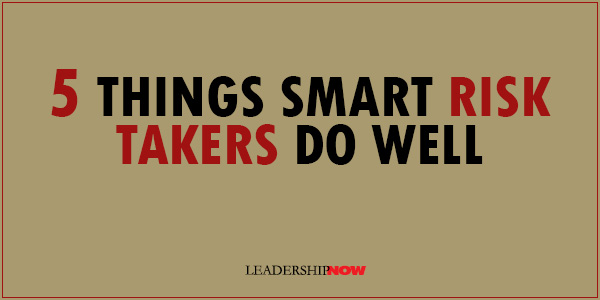 Doug Sundheim’s book, Taking Smart Risks, isn’t really about making your next risky decision smarter or safer; it’s about pushing all of your choices to be riskier, but smarter on a daily basis.
Doug Sundheim’s book, Taking Smart Risks, isn’t really about making your next risky decision smarter or safer; it’s about pushing all of your choices to be riskier, but smarter on a daily basis.
We tend to view our choices as risky or safe. Safe is good while risky is well, risky. You’re taking a chance with a risky choice; it could lead to ruin. Sundheim says that view doesn’t capture the essence of what taking a risk is all about. Taking a risk is “exposing oneself to the possibility of loss or injury in the hopes of achieving a gain or reward.” It’s really the reason we would consider taking a risk rather than just playing it safe. It’s not an either/or proposition—safe or risky. But because we perceive it that way, we tend to do all we can to avoid risk and stay in our comfort zone. 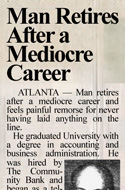 • You don’t win.
Are you caught in the comfort zone? Here’s a thought we can all relate to: Being caught in the comfort zone doesn’t mean that you’re sitting around doing nothing. It’s more nuanced than that. You could be making progress, but not quickly enough. You could be taking chances, but not boldly enough. You could be going out on a limb, but not far enough, and the extra push is what will make a difference. What Sundheim is advocating is a change in our mindset regarding risk. Rather than perceiving risk as negative (“Things may not be perfect now, but they’re not all that bad. If I make a move, things could end up worse. I’d better not risk it.”), we should view it as a balanced focus on both the downside of taking risks and not taking risks (“I’ll regret it if I don’t pursue this thing. I’ve got to find some smart ways to take risks to move it forward.”). A limiting mindset versus a liberating mindset.
Smart risk takers consistently do five things well to disrisk whatever they’re up to:
Communication is a critical element of each of these stages. “At every stage of any risk, improving the way in which you discuss thoughts, plans, and actions is the single most effective way to derisk the risk, that is, to make it smart.”

Posted by Michael McKinney at 10:34 PM
01.14.13

Why We Find it Hard to Change Our Behavior
WE KNOW every behavior begins with a thought. So if we want to have lasting change, the beginning point has to be our thinking. Behavioral change is only surface change if we don’t first change the thinking behind those behaviors. And it won’t stick. It will keep coming out in so many ways we won’t be able to keep up with it because we haven’t changed the thinking behind it. When we look at our behavior we have to understand that there is a thought going on in our heads that is tripping us up. And we have to change that first. Or we’re working on the wrong thing. The question becomes, “What thoughts do I need to change to make my behavior change?” New behavior will automatically follow a change in thinking. One right thought can correct a lot of bad behavior. What am I thinking that isn’t allowing me to see things as I should? As human beings, we latch on to certain ideas and assumptions and they blind us from seeing other options and responses to what life throws at us. We get ideas in our head that can literally block us from seeing other perspectives. Change doesn’t happen in a moment. We’ve had these patterns of thinking and behavior for a lot of years. We have to unlearn some behaviors and then learn and put into practice the new thinking and resulting behaviors. And it just takes time. It’s right thinking over time that brings about lasting change. It’s a process. It’s a long history of repeated behaviors in the same direction that builds character. We have to wake up every day and know that we have a tendency—not just because of our life experiences, but also because of the way that we have chosen to respond to them—to repeat a certain set of behaviors over and over again. We’ve got to remember that and change the thinking that supports these behaviors. We’ve got a lot of set patterns in our heads that we want to return to, that we have become comfortable with, that we can justify, that we can blame on something someone else did. That’s why we have to make a point of reflecting on our behaviors and on the impact we have on the people around us. And learn from it. And then go to work on the thinking behind the behaviors we want to change. It’s not what you do that needs to change, it’s what you think that needs to change. First change your thinking. The behavior will follow. It all starts with a thought.
Posted by Michael McKinney at 06:13 PM
11.26.12

The Four Leadership Traits of Highly Collaborative Leaders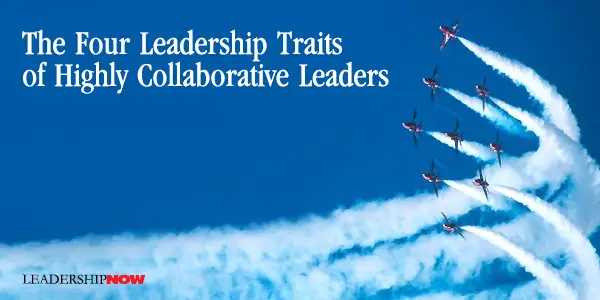
COLLABORATION taps in to a broader pool of ideas. It maximizes the talents and abilities of your people. An inclusive culture is more flexible and adaptable. People are highly motivated, work harder and are more creative. However, collaboration isn’t something you can put on. For it to work you have to believe in it. You can’t order it. Collaboration begins at the top. If leaders model it, others will too. Collaboration isn’t technique. It’s culture. If a leader believes that everything rises and falls on their talent and ability, and resources are for their sole use, collaboration is DOA. Moreover, it severely limits the organization. Ron Ricci and Carl Wiese report in The Collaboration Imperative, that there are four leadership traits of highly collaborative leaders:

Posted by Michael McKinney at 07:43 AM
11.15.12

Resilience: How We Can Learn to Bounce Forward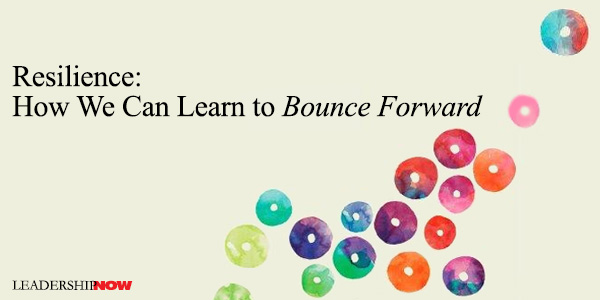
ALL OF US will be tested from time to time on our ability to adapt—on our resilience. The goal of resiliency is not necessarily to bounce back, but to bounce forward. It is the ability to maintain your purpose even while adapting your methods. “If we cannot control the volatile tides of change, we can at least learn to build better boats,” write Andrew Zolli and Ann Marie Healy in Resilience. “We can design—and redesign—organizations, institutions, and systems to better absorb disruption, operate under a wider variety of conditions, and shift more fluidly from one circumstance to the next.” Resilience-thinking is not the same thing as being in a defensive mode. It’s engaging the world in a different way. They discuss tight feedback loops, dynamic reorganization, built-in countermechanisms, decoupling, diversity, modularity, simplicity, swarming, and clustering, as proactive ways to encourage resilience. They don’t give check-lists or quick fixes (indeed, there are none) so you’ll have to think about the ideas they offer. Most of the ideas are quite useful in principle on a personal level. TRANSLATIONAL LEADERS Interestingly—but not surprising—they found that resilient communities had a special type of leader: a translational leader. “These leaders demonstrated an uncanny ability to knit together different constituencies and institutions—brokering relationships and transactions across different levels of political, economic, and social organization.” They were leading from the middle out. Translational leaders do not dispense with hierarchies; they recognize and respect their power. Instead, standing at the intersection of many constituencies, translational leaders knit together social networks that complement hierarchical power structures. Rooted in a spirit of respect and inclusion, these complementary connections ensure that when disruption strikes, all parts of the social system are invested, linked, and can talk to one another. It sounds like they have a high degree of emotional intelligence or ego-control. That necessitates a leader that is reflective and operates from strength rather than weakness; a grounded mindful leader. ADHOCRACY Many of the lessons learned from the disruptions discussed in the book boil down to adhocracy, say the authors. Adhocracy is adaptive, creative, flexible, and non-permanent organizational style. “In the digital age, an adhocracy can be put together in a plug-and-play, Lego-like way, well suited in fast-moving, fluid circumstances where you don’t know what you’ll need next. If it were a musical genre, adhocracy would be jazz.” (Robert Waterman on Adhocracy.) They caution: “When systems are structurally overconnected … or when interventions are bureaucratically imposed on communities rather than developed with them, there is no space for adhocracy to germinate.” Of course formal organizations have a role to play. “But when we focus too strongly on them as the sole actors in response to a disruption, we don’t just ignore, but can actually smother the opportunities for these kinds of successful, improvisational approaches to emerge.” 
Posted by Michael McKinney at 12:22 PM
09.07.12

Adaptability: The Art of Winning In An Age of Uncertainty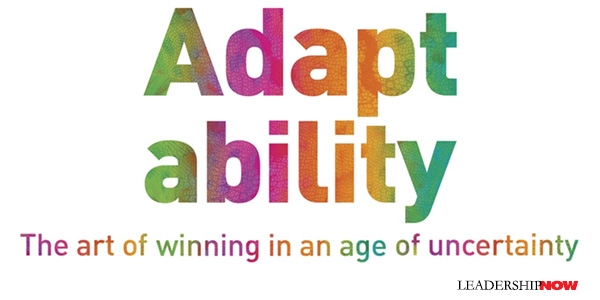
MAX MCKEOWN accurately argues in Unshrink that our beliefs have shrunk us. They have limited our responses. And it profoundly affects our ability to adapt. Adaptability is a book about how people adapt. It is about how to win more often. “In the future,” writes author Max McKeown, “you can try to maintain what you already have, or you can attempt to transcend the constraints of your situation.”Of course, to begin, you have to recognize the need to adapt. That’s not always as easy as it sounds mainly because we have to admit that something isn’t right. You have to understand what’s going on. Enthusiastic ignorance often rules the day. And so as, McKeown points out, “stupid survives until smart succeeds.” Knowing the rules and when to break them is essential to successful adaptability. If you find a system failing, then you have also found a system that is failing to adapt. You need to discover, first, what adaptations are needed for the system to succeed. Second, you should understand what has stopped the system from adapting successfully. And third, you should find out how to free the people in the system to make the necessary adaptations. Once you recognize the need to adapt, you need to understand what adaptation is required. In times of great uncertainty, we need the knowledge creators, the radical and the rebels. “When times are easy, almost anyone can look effective….When choices seem obvious, unimaginative leaders may be rewarded for making the obvious choices even when they know they’re the wrong choices.” Leaders too, need to release its stranglehold on what is considered acceptable and unacceptable thought. Effective adaptation will not happen when there is a dominance of a couple of people over the way everyone else is allowed to think and act. It is important to not only identify what needs to be done, but to keep on learning until you get it right. Something to think about: Most people lock on to a particular course of action, they make their minds up early and fail to adapt to evidence that their choices are wrong. As a result, only a small portion of most people’s experiences lead to new learning. Finally, you need to actually make the changes necessary to adapt. “The most successfully adaptive companies are those that never grow up.” It is rare to find leaders that are comfortable with “learning what is necessary from the people who do the work and know the answers.” McKeown rightly observes that being all knowing is not a human quality. When attempting to adapt, “it is very tempting to try to remake a new situation to match an old situation.” We tend to continue to do what we already know. “In adaptive terms, if you are still in the game, then it’s always the beginning.” This is a critical mindset for successful adaptation. “You can imaginatively rethink your actions so that wherever you are becomes the best place to start.”

Posted by Michael McKinney at 09:29 AM
08.06.12

The Pivot Point of Organizational Change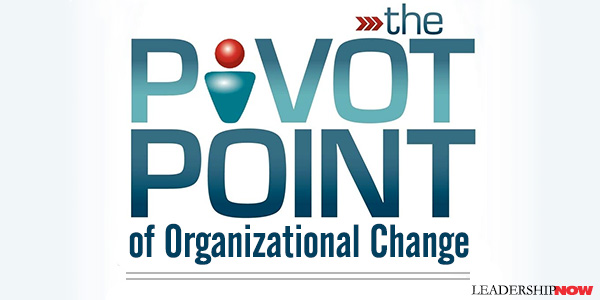
WE know that the vast majority of organizational change initiatives fail. Why? The general answer is our resistance to change. But what if it’s something else? In The Pivot Point, authors Victoria and James Grady ask, “What if this is not a ‘resistance’ problem for which the organization must engineer a solution, but a deeper ‘people’ problem that the organization must first learn to understand and respect?” Perhaps the problem is less about resistance to change and more about attachment to some thing. Change involves destruction and insecurity. You have to give up something to create something new. It’s the nature of change. Sometimes it is very hard to give up that thing. It creates anxiety, frustration and insecurity. “We form attachments to objects unique to our organizational environment and we lean on them for support.” What we react to is our loss of attachment. The essence of the problem is not resisting change per se, but resisting the distress inherent in somehow losing the objects that we attach to or lean on in our work environment. These objects can be people, systems, places, things, or even abstract concepts such as ideas or environments—anything that provides us with a sense of “attachment” to the organization. If this is the case, then the challenge is to identify those attachments and the impact the proposed change will have on them, and design a solution around them—introducing changes will maintain healthy attachments. The authors refer to this as the Pivot Point of organizational change success: “when we recognize the significance of our individual reaction to organizational change, take appropriate steps to support healthy attachment behaviors, and make use of current information to optimize the situation for all concerned.” The authors suggest that “to mitigate the negative effects of losing our sense of stability, one way an organization can ease the transition of a change initiative is to look for a generic substitute to replace the lost object until a new sense of stability is restored. Those replacements could be “a leader, a favored object, a method of communication, a continuing education series, a technology, a colleague, a culture, or any combination of these items.” They also present other methodologies to prevent or modify symptoms before or as they are developing. It is possible to discover which symptoms are most likely to escalate, allowing you to implement a strategy to mitigate these symptoms before you ever begin your organizational change initiative.

Posted by Michael McKinney at 06:28 PM
01.13.12

Why are Organizations Slow to Respond?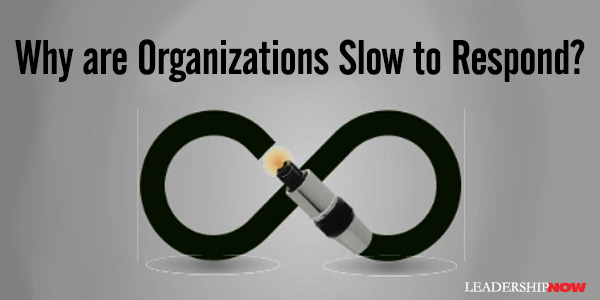
ORGANIZATIONS are only human. Organizations share many characteristics with the people that populate them. Organizations are born, they mature, they age, and they die. The life expectancy of most is about 15 years and only 5% last longer than 50 years. They begin with an innovative idea—even developing beyond all expectations—but eventually they begin to show signs of aging. Claudio Feser writes in Serial Innovators, “Some firms become blinded by success and begin to resist external views and challenges. Some are locked into mental models and become driven by habits. Some lose the sense of purpose that pervaded them in the early days. Some become bureaucratic. Some have processes and incentive systems that have put them on autopilot, leading in a dangerous direction. Some develop dysfunctional organizational cultures.”Occasionally, some organizations resist these all too human tendencies and thrive. They continually reinvent themselves. They confront rigidity. They become serial innovators. We create over time, our own and our organization’s rigidities. Individually, we develop rigidities in the form of biases, lack of self-confidence, and habits. The human mind is quite adept at this in order to create efficiencies. We can only process so much. Organizationally, we create rigidities like structures, performance management, and reward systems, supporting cultures and capabilities that while necessary to some degree, often prevent us from adapting rapidly. Worse still, we add complexities to existing structures, processes, values and norms, without ever rethinking and possibly eliminating obsolete ideas and procedures. All of this can cause entropy and our demise. Rigidities are not going to go away, but we can learn to manage them better. Feser says that organizations that want to become serial innovators must do the following:
Again, it is a leadership issue with a leadership solution. If company leaders do not accept challenging and diverging views, neither will the organization. After all, organizations are only human. 
Posted by Michael McKinney at 10:11 AM
10.03.11

Innovation Creates Uncertainty
WE don’t like uncertainty. It’s not comfortable. We want innovation. We like creativity. It’s engaging. But innovation creates uncertainty. So while we say we want creativity and innovation we often reject it because it is new, different and risky. It takes us to places that we are not familiar with and places where we don’t have all the answers. The irony is that while we say we like innovation we develop a deep bias against it. Interestingly, a recent study from Cornell University states that “Anti-creativity bias is so subtle that people are unaware of it, which can interfere with their ability to recognize a creative idea.” In other words, our aversion to uncertainty means we find it difficult to even recognize a creative idea when we see it, focused as we are on removing the risky, uncomfortable strain on the status quo. Consequently, new ideas are often rejected out-of-hand in favor of the tried and trusted at times when we need new ideas the most. This resistance is so strong at times that even supporting objective evidence may not help break down barriers. The study concludes, “Our results show that regardless of how open minded people are, when they feel motivated to reduce uncertainty either because they have an immediate goal of reducing uncertainty, or feel uncertain generally, this may bring negative associations with creativity to mind which result in lower evaluations of a creative idea.” If you want to change the world, get comfortable with the uncomfortable.
Posted by Michael McKinney at 07:58 AM
06.03.11

4 Lessons from the Toyota Crisis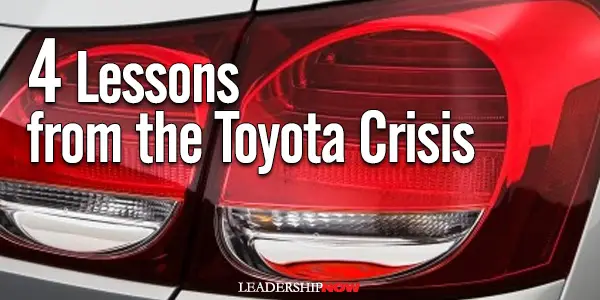
“Crisis response must start by building a strong culture long before the crisis hits,” say Jeffrey Liker and Tim Ogden, authors of Toyota Under Fire. Turning crisis into opportunity is all about culture. It’s not about PR strategies, or charismatic leadership, or vision, or any specific action by any individual. It’s not about policies or procedures or risk mitigation processes. It’s about the actions that have been programmed into the individuals and teams that make up a company before the crisis starts. The accident in August 2009 that took the lives of four people in a runaway Lexus brought national attention to Toyota. Fueled by innuendo and speculation by Congress and some media, it escalated into something it was not. Toyota Under Fire deals with not only the massive recall of 2009-2010, but also Toyota’s response to the oil crisis and recession. Toyota’s response has not been typical, but it does follow the Toyota Way. It is a reflection of their culture. That way includes what is probably Toyota’s “greatest contribution to the world as a model of real continuous improvement” at and by all levels in the organization. Liker and Ogden describe the Toyota Way as: Face challenges with a clear head and positive energy. Hold fast to your core values and your vision for the company. Always start with the customer. Understand the problems that you face by analyzing the facts, including your own failings, and understanding the root causes. Thoroughly consider alternative solutions, then pick a path, develop a detailed plan, and execute with discipline and energy. “You do not turn a culture off and on again like a light switch.” Culture—like character—is built over decades of living your values in the real world. And then in a crisis, when you really need it, it is there to carry you through. The authors isolated four lessons for dealing with a crisis: Lesson 1: Your Crisis Response Started Yesterday. What a company does isn’t likely to change much when a crisis strikes or for any length of time. “They are driven by culture, and culture simply can’t be changed quickly, even in a crisis…. Therefore, the chief questions to ask yourself about how your company will respond in a crisis are not contingency plans and policies, but about your culture and your people. Have you created a culture that rewards transparency and accepts responsibility for mistakes? Have you created a culture that encourages people to take on challenges and strive for improvement? Have you created a culture that values people and invests in their capabilities? Have you created a culture that prioritizes the long term?”Lesson 2: A Culture of Responsibility Will Always Beat a Culture of Finger-Pointing. Common sense? Yes, but the question is how far do you go in accepting responsibility? What if the factors were beyond your control? The answer illuminates an important nuance in understanding Toyota’s culture of responsibility and problem-solving. “There is no value to the Five Whys [the belief that you have to ask why at least five times] if you stop when you find a problem that is outside of your control. There will always be factors outside of your control. When you reach a cause that is outside of your control, the next why is to ask why you didn’t take into account forces outside of your control—either by finding an alternative approach or by building in flexibility to adjust to those forces.” Lesson 3: Even the Best Culture Develops Weaknesses. The greatest threat to a culture of continuous improvement is success. “To survive the weaknesses that inevitably develop, a corporate culture has to have clear and objective standards, codified in such a way that self-correction is possible. Having a culture that recognizes a loss of direction is absolutely critical to long-term survival.” Lesson 4: Globalizing Culture Means a Constant Balancing Act. The clarity of Toyota’s culture and values is essential to growing the culture in every employee. And there is a balance to strike—the balance between centralized and decentralized, local and global—that is not easy. “There is an inherent demand here that especially the people who are at the margins, at the periphery of the organization, be deeply steeped in the culture, and that they are to be trusted to make decisions because they are at the gemba.” One of the root causes of the crisis they identified was centralized decision making. They will now pursue a regionalization strategy which will require trusting the leaders they have trained to maintain the culture. Toyota Under Fire is an in-depth look at the value of having a strong culture that can serve you when things go south. The discussions explaining the reasoning behind why Toyota does what it does were very helpful. They demonstrate that the most important decisions are the ones made before the crisis. And then when the crisis hits, return to basics. Go deeper and wider. 
Posted by Michael McKinney at 05:21 PM
05.24.11

Got Drama?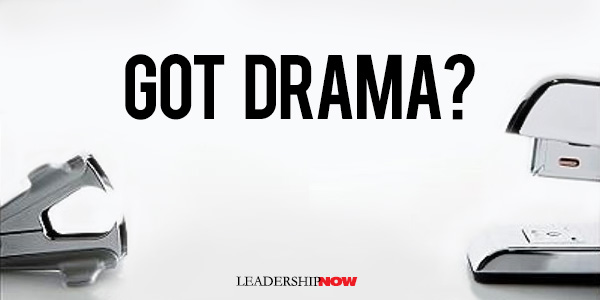
YOU can’t stop The Drama. There will always be drama. But that’s not the problem says Marlene Chism, author of Stop Workplace Drama. “The amount of time you stay in the drama—and the effort you put toward it—is the problem. Complaints, excuses, and regrets only serve to keep the drama alive.” Your drama—what you add to The Drama—is the problem.Chism defines drama as “any obstacle to your peace and prosperity.” Drama is the result of not recognizing or taking care of the little signs of bigger problems when they first presented themselves. At the core of drama, you will find one of three common elements (if not all three): a lack of clarity, a relationship issue, and/or resistance. So, says Chism, when you experience drama you need to ask yourself three questions: 1. Where am I unclear?
Chism presents eight principles for dealing with drama, but “lack of clarity” struck me as the most common and excuse-laden trap there is. Too often this is where we get stuck.
“Any type of discord, abuse, confusion, or game-playing always boils down to a lack of clarity.” A loss of focus. Sometimes we create drama because we want something on our terms. We imagine that we can’t do something because we can’t do it the way we think it should be done—our way. Chism relates a clarifying example of this with the recently divorced Joe who is having visitation issues with his ex-wife Patty. She’s not letting him do what he wants in the way that he wants. Many people get stuck in the drama of what should or shouldn’t be. Yes, you can fight that battle, if winning a battle is what you want. But again, in order to clear the fog and help Joe get clarity, I asked, “If there are two islands you can go to, and one means winning a battle with your wife and the other island is getting to see your kids and be a father to them—then which island would you choose?” This kind of dynamic plays out every day in our business and personal lives. When we are not clear about what we want, what our values are, what we are committed to, it is easy to lose our focus, to drift off course Solution: Clear the fog. Chism has written a good-natured and practical book that will change your thinking and in the process help you to control the drama in both your personal and professional life. As leaders, we have the responsibility to be very clear with ourselves and our team so that we don’t get pulled into negativity, gossip, power plays, resistance and … drama. Chism suggests asking the following questions: What are my top 10 principle-based values?

Posted by Michael McKinney at 10:00 PM
03.10.11

A Case for Reconsidering the Way We’ve Always Done It
S SOCIETY that doesn’t train their children to think critically, to be aware of those around them, and to serve, must create more rules and regulations than can be accounted for. There will never be enough rules—there are too many variables—especially when people begin to direct their creativity in dysfunctional ways. The challenge is to develop sound minds. As Kant determined, a person with a sound mind is one that can think for oneself, is able to place oneself in the place and viewpoint of others, and can think consistently and coherently. But it‘s easier, in the short term, to create rules. And we pay a price. To be sure, I am not advocating anarchy—we absolutely must have rules—and some rules unquestionably make possible the learning process, but when the rules we have in place reflect our lack of engagement, they become disrespectful and de-motivating. It’s easier to lay down the law or set up a checklist than it is to explain the why; to communicate where we’re headed with this idea. From time to time, it is good to think about the rules we have created (or have had handed down to us), that are impeding progress, relevance, imagination, and growth both for ourselves and others. Here are a few thoughts to guide that process: I am a big advocate of tradition, but when “that’s the way we’ve always done it” or “that’s how I learned to do it” gets in the way of relevance or growth, we need to take a step back and reconsider our stand. What we have done may have served us well in a particular place and time, but may only be an irritation here and now. Rules can reveal a lack of trust. “I don’t trust you to be as smart—considerate or creative—as I am.” And they never will be if not given the chance. As leaders, we need to be aware of where we are blanketing people with rules and procedures that do nothing more than to serve us and not the people it is our intention to serve. We need to consider that perhaps we have implemented rules to create a comfort zone for ourselves. A world where people act and think like we do. A world of clones. A world on autopilot that requires less of us. Often our need for rules and procedures is just masking our fear of the unknown. Our attempt to manage a world that is changing faster than we are learning. No leader can do it on their own and rules are no substitute for not trusting, growing and building relationships with people. Where are we hiding behind rules? Rules, for the most part, do not leverage other people’s strengths and thinking, they mostly mirror our own. Given the chance, people will surprise us with new, different, and better ways to push our agenda forward.
Posted by Michael McKinney at 11:43 AM
01.21.11

How to Use Social Media to Drive Social Change
SOCIAL MEDIA. Nobody really understands it, but we know it’s important. How can we use it to influence others? How can we use it to do some good? The Dragonfly Effect by Jennifer Aaker and Andy Smith, is a playbook on how to use social media to achieve a single, focused, concrete goal.
Focus: Identify a single concrete and measurable goal. Goals must be humanistic or based on an understanding of your audience, actionable, testable, clear and meaningful. Striking the right balance between visionary and realistic goals is key to maintaining focus….To achieve balance, break the goal down into parts: a single long-term macro goal and a number of short-term process goals, or micro goals. Grab Attention: Make someone look. Cut through the noise of social media with something personal, unexpected, visceral, and visual. What is the most important message you want to leave your audience with—and why should they care? Engage: Create a personal connection, accessing higher emotions through deep empathy, authenticity, and telling a story. Engaging is about empowering the audience to care enough to want to do something themselves. Engage is arguably the most challenging of the four wings, because love occurs infrequently, and engaging others is more of an art than a science….If you can’t engage them emotionally, they won’t be swayed. Take Action: Enable and empower others to take action. To make action easy, you must prototype, deploy, and continuously tweak tools, templates, and programs designed to move audience members from being customers to becoming team members—in other words, furthering the cause and the change beyond themselves. What you’re asking people to do must be easy, fun, tailored and open. What you are asking of people must be highly focused, absolutely specific, and oriented to action, so as to avoid overwhelming your audience. The Dragonfly Effect is a good model to show how technology can support real-world missions. The Dragonfly Effect shouldn’t be thought of as just a social media framework; the specific and practical principles behind the model will not only help you make an impact through social media but in the real world too. The Dragonfly Effect Model Review:

Posted by Michael McKinney at 06:53 AM
12.24.10

Are Your Goals HARD Enough?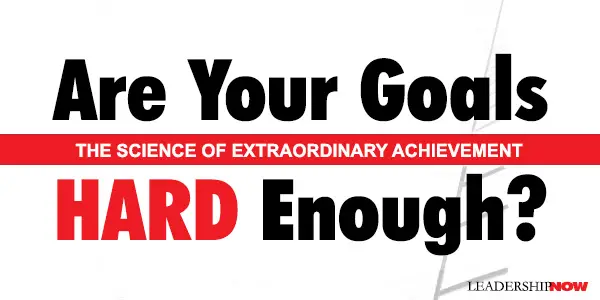
ACCORDING to research by John C. Norcross, a clinical psychologist at the University of Scranton in Pennsylvania, only about 45 percent of the subjects managed to stick to their resolutions after six months, and, after a year, that number declines to around ten percent. It’s as Oscar Wilde wrote: "A New Year's resolution is something that goes in one year and out the other.'' The problem, says Leadership IQ CEO Mark Murphy, is that we are trying to execute goals we don’t really care about. The kinds of goals that lead to success “stimulate the brain in profoundly different ways than the goals most people set. In nearly all cases where greatness is achieved, it’s the goal that drives motivation and discipline—not the other way around.” He reports in Hard Goals that in a recent study of over 4000 workers, only 15 percent of them believed that their goals for this year were going to help them achieve great things. And only 13 percent thought their goals would help them maximize their full potential. The solution, says Murphy, is to create H.A.R.D. goals—targets that are:Heartfelt—you’ve got to have an emotional attachment to your goal; it has to scratch an existential itch; you have to develop a heartfelt connection to the payoff.
Every goal you set needs to pass these four tests. Murphy devotes a chapter to each of these four tests. “The overwhelming majority of human beings have tremendous untapped potential but there’s nothing pushing them to access it. Setting goals that are difficult helps unleash the depth of that potential.” Especially helpful is the chapter on the Required part of HARD goals and the need to “alter your view and value of future payoffs so they become more attractive than what the status quo is offering today. You can intentionally move some of the immediate costs of your goal into the future in order to sync up the costs and benefits. Or, conversely, you can bring some of your goal’s future benefits into the present. Both will make your goal look a whole lot more attractive and amp up your urgency to get going on it now.” Inevitably you ask, “Where do I begin once I have my HARD goal?” Murphy suggests you work backwards. First determine the timeframe for your goal—say a year. Then cut it in half and ask, “What must I have accomplished at the six-month mark in order to know that I’m on track to achieve the full HARD Goal?” Then cut that in half and ask, “What must I have accomplished at the three-month mark in order to know that I’m on track to achieve all of my six-month targets?”Continue to cut the time in half until you get to one week and then ask yourself, “What must have I have accomplished today in order to know that I’m on track to achieve all of my one-week targets? Breaking your HARD Goal down into identifiable steps will first, show you exactly where to start. “Second, it monitors and keeps you on track to achieve your HARD Goal (and intensify your efforts where necessary). And third, this exercise shows you that every single day needs to contain some activity in pursuit of your HARD Goal.” Try it this coming year! 
Posted by Michael McKinney at 08:02 AM
09.17.10

The Reality-Based Leader’s Manifesto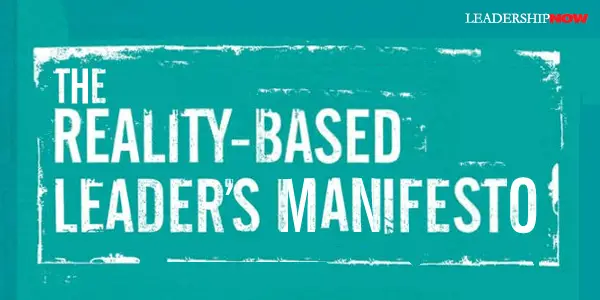 “If you believe that leadership is tougher today than it was in the past, you’re not alone,” writes Cy Wakeman, author of Reality-Based Leadership. “We are living and working in dramatic and demanding times, but that is not our biggest problem. The source of our pain is the absence of great leadership that is based in reality. …The future belongs to the leader who is able to change the way people think and perceive their circumstances, the leader who engages hearts and minds.” To that end, she offers the Reality-Based Leader’s Manifesto:
“If you believe that leadership is tougher today than it was in the past, you’re not alone,” writes Cy Wakeman, author of Reality-Based Leadership. “We are living and working in dramatic and demanding times, but that is not our biggest problem. The source of our pain is the absence of great leadership that is based in reality. …The future belongs to the leader who is able to change the way people think and perceive their circumstances, the leader who engages hearts and minds.” To that end, she offers the Reality-Based Leader’s Manifesto:

Posted by Michael McKinney at 07:07 PM
09.06.10

Getting Ideas to Flow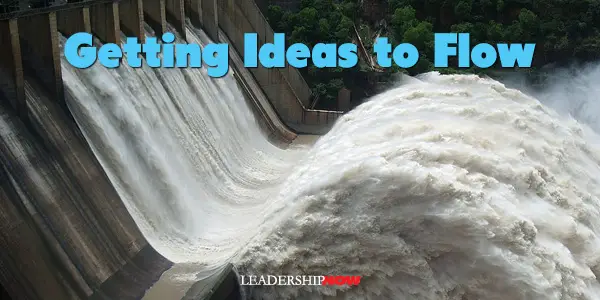
Charles Landry is the founder of Comedia, and works to help cities to be more "creative for the world" so that the energies of individuals and companies can be brought into alignment with their global responsibilities. He recently told Sally Helgesen that his experience has taught him that “the single biggest problem in the world is not finding great ideas but getting great ideas to move, to flow.” Getting stuck is an issue we face both individually and organizationally. At its core, it’s a thinking problem and is often self-inflicted. Creating the right kind of movement and in the right direction begins with re-thinking our view of reality. If we keep applying the same patterns of thinking even after they have been shown to be counterproductive we skew our perception of even everyday life situations and block the flow of growth, ideas, and influence. Here are some common areas we need to rethink to get ideas to flow: Re-think complexity. We create complexity by over-analyzing our situation; creating issues where there are none; forgetting our purpose. Complexity obscures the issues. Keep the issues as uncluttered as possible. Often an outsider can see the situation and the real issues more clearly than you can. Try asking, “Am I making this a bigger problem than it is because of fear, insecurity or lack of knowledge?” “Is this really a problem to be solved or a tension to be managed?” Stick to what needs to be addressed. Complexity can lead to procrastination. Re-think systems. Trying to create a new vision without addressing old systems is at best counterproductive. Tenaciously grasping the old ways of doing things just because that is what you have always done, can stop the flow of ideas and innovative solutions and lead to hopelessness. If you are experiencing a chronic lack of movement, a resistance to change or lack of compliance to your “really good idea,” you probably have a system in place that discourages the very behavior you seek. A system should reward the behavior you want. What systems are getting in your way? Re-think ego. Our ego frequently keeps us from exploring new ideas. We get so invested in what we have done that we can’t get out of our own way. We keep retrying to work the old and deceive ourselves into thinking we’re making progress when all we are doing is rearranging the deck chairs on a sinking ship. Sometimes we need to set aside our ego and simply abandon what isn’t working and start over with a better design. Re-think boundaries. Think bigger. Think interdisciplinary. Growth often involves blurring boundaries to open your mind to new possibilities. What principles outside of your world of experience could expand the possibilities for your idea? Re-think reactions. Repetitive reactions are the result of ingrained patterns of thinking that we have hard-wired into our brains long ago. Take the time to reflect on why you think the way you do; why you do what you do. Default patterns of thinking lead to more of the same. Ask yourself, “Is this working for me?” Think about the unspoken. Re-think failure. If you’re afraid of being wrong, embarrassed by failure or paralyzed by insecurity, you will never find the solutions that lead to meaningful growth. Failure provides the nutrients for growth when we respond to them positively. Keep failure in perspective, it’s a regular part of life. You can’t avoid them so learn to work with them. Failures help you to raise the bar and reorient your thinking to possibilities and new ways of thinking. Re-think success. Know what success looks like. How will you know when you have arrived? Muddy expectations lead to exhaustion and defeat before you even get started. Praise short-term accomplishments to appeal to your heart and not just your head. It will keep your ideas moving along. 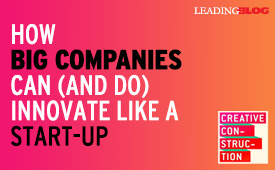 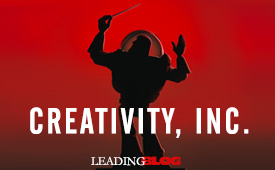
Posted by Michael McKinney at 03:16 PM
07.23.10

The Five Accountabilities You Need to Implement Now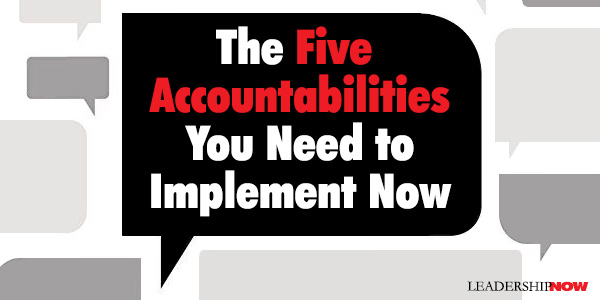 No More Excuses by Sam Silverstein is about expanding your accountability zone. To do that it means “reaching the point in your life where you can say, ‘No More Excuses! I’m not going to make excuses, and I’m not going to buy excuses.’” Excuses only legitimize the past, ignore the present, and eliminate the future.
No More Excuses by Sam Silverstein is about expanding your accountability zone. To do that it means “reaching the point in your life where you can say, ‘No More Excuses! I’m not going to make excuses, and I’m not going to buy excuses.’” Excuses only legitimize the past, ignore the present, and eliminate the future.
Silverstein’s book is built around The Five Accountabilities he has developed to help you—in a practical way—to move beyond the excuse; to make accountability a way of life for you personally and part of your organization’s culture. The five accountabilities are: Doing the Right Things. Begin by identifying your strategic intent. What are you trying to accomplish and by when? We are accountable for understanding and identifying our strategic intent—and the activities that support it. Mt. Everest climber Ronnie Muhl, told Sam: “You get into the habit of asking yourself, ‘If my life depended on the next action I took, how differently would I perform that action?’ —because doing the wrong thing can have massive consequences.” Managing Your Space. We are accountable to create the new space we need to grow and innovate in our own lives, which sometimes means taking space from something else that we’re doing. “Force of habit prevents us from giving ourselves the physical, mental, financial, or emotional space necessary to shake things up a little bit and put something new in our lives—something that could provide growth and improvement.” David Silverstein, CEO of the Breakthrough Management Group International, told Sam, “You have to be willing to cannibalize your own business in order to grow.” Managing the Process. We are accountable for creatively making progress toward whatever it is we are trying to make happen even when we hit an obstacle. It means not throwing up our hands and saying, “If it’s not meant to be, it’s not meant to be.” Kenneth Evans, Dean of Price College of Business at the University of Oklahoma told Sam, “The real problem with the way that some people look at accountability is that oftentimes it’s layered into a notion of a rigid set of expectations and performance parameters, and frankly, you can get into very deep trouble if that’s your mantra. How you react to changing events is important as well.” Establishing the Right Expectations. We are accountable for establishing the right expectations, that reflect our values, that are properly benchmarked, and are a bit of a stretch. Clothier Elim Chew, spoke to Sam about the leading from where you are at his company 77th Street, “The people who accept responsibility for, say, 10 things that are part of their job description and then accept personal accountability for five more things all on their own are the ones who are more likely to get the bigger bonuses and bigger raises in this company. They’re the ones who may end up running a business of their own someday.” Contributing to Your Relationships. The success or failure of our relationships depends entirely on the contributions we make. We are accountable for giving to our relationships—without keeping track. “In fact, the quickest way to kill a relationship is to start keeping track of all the reasons it’s not your turn to give to it and support it.” Sam adds, “We should constantly be looking for ways to invest in the relationship and enhance the value of the relationship over time.” Sam says, “Building relationships is about choices, and the choices should always be based on your values. To get a fix on your values, ask yourself: How can I best serve this relationship in the short term and the long term?” Brian Martin, CEO and founder of Brand Connections, talked to Sam about managing emotions. He said, “I have asked every single person I’ve hired two questions: ‘First, what is most important for you to feel professionally, every day? And second, what’s most important for you to avoid feeling? What would you really rather not go through, not have to replay with your spouse at the end of the day, when that person asks how your day went?’ I keep the answers on file, and I look at those answers every week when I do my own planning.” More information can be found at SamSilverstein.com to help you implement the Five Accountabilities. “If you want to build an organization that achieves its goals and beats the competition, it’s time for No More Excuses.” 
Posted by Michael McKinney at 06:56 PM
07.14.10

Switch: How to Change Things When Change is Hard
IT IS NOT unusual for organizations (individuals) to fall short of the outcomes to which they aspired within the time allotted for that change. The biggest obstacle is getting people at all levels committed to the change. Commitment requires both hearts and minds. The problem is hearts and minds often have different agendas. “Logic only gives a man what he needs,” wrote Tom Robbins, “magic gives him what he wants.” Logic tells what we know to do; emotion is the magic that explains why we do what we do. Logic may direct, but emotion runs the show. Logic says what needs to be done. Emotion gets it done. The brothers Heath—Chip and Dan—explain in Switch why we must and how we get hearts and minds—emotion and logic—to work together.  It seems like the Elephant may be all bad: lazy, skittish, and seeks instant gratification over long-term gain. “Changes often fail because the Rider simply can’t keep the Elephant on the road long enough to reach the destination.” But the Rider has issues too: overanalyzing and over-thinking things, the tendency towards a problem-focus instead of a solution-focus, and the proclivity to complain than praise. We have to learn to deal with both. As leaders, we need to speak to both the Rider and the Elephant. They begin by illuminating three key observations about change that lead us to three things we must do to make change happen: First, what looks like a problem is often a situation problem. We often overlook the situational forces that shape our and other people’s behavior. There are things we can do to make the change easier and remove some of the friction. We can shape the Path. When it comes to changing behaviors, “environmental tweaks beat self-control every time.” Second, what looks like laziness is often exhaustion. Self-control is an exhaustible resource. They explain, “When people try to change things, they’re usually tinkering with behaviors that have become automatic, and changing those behaviors requires careful supervision by the Rider. The bigger the change you’re suggesting, the more it will sap people’s self-control. And when people exhaust their self-control, what they’re exhausting are the mental muscles needed to think creatively, to focus, to inhibit their impulses, and to persist in the face of frustration or failure. In other words, they’re exhausting precisely the mental muscles needed to make be change.” We need to motivate the Elephant. Third, what looks like resistance is often a lack of clarity. The Rider is “a navel-gazer, an analyzer, a wheel-spinner. If the Rider isn’t sure exactly what direction to go, he tends to lead the Elephant in circles.” Often we state outcomes with little mention of what exactly you want people to do. What exactly does that outcome mean in terms of what I should do now? What do you want me to do this minute? Speak to the solution. We need to direct the Rider. Trying to understand why people don’t change or aren’t supporting your change isn’t always easy. “Is it because they don’t understand or because they’re not enthused? Do you need an Elephant appeal or a Rider appeal?” “Trying to fight inertia and indifference with analytical arguments is like tossing a fire extinguisher to someone who’s drowning. The solution doesn’t match the problem.” The brothers Heath uncover methods and thinking to help you to direct the Rider, Motivate the Elephant and Shape the Path. Their memorable examples and research findings clearly illuminate the methodology. The insights will resonate with you and hopefully change your approach to change and make it easier. Switch is an important [required] book for anyone wanting to understand change and constructively deal with the issues we confront when staring down the need to make a change. Read it, grow, and deliver. 
Posted by Michael McKinney at 11:06 AM
03.23.10

Leading in Turbulent Times
I THINK Victor Fung of the Li and Fung Group (the Chinese multinational founded in Guangzhou in 1906) summed up well the sense of the kind of change we face today: A lot of people say, hey, this is a once in a century type of problem. We haven’t had anything like this since the 1930s. You hear all these statements, and they seem to imply that this is once in a lifetime after I get through this one, boy, am I glad I will never have to face this again. But I’m not so sure. I think we are seeing both the compression of cycle time – how quickly the cycles come and go – and also the amplitude of the swings getting more and more severe. The world has fundamentally changed. I think we all understand that this type of change requires a special kind of leadership. Kevin Kelly and Gary Hayes have collected in Leading in Turbulent Times the lessons learned from over thirty CEOs, Chairmen and other senior executives who are prevailing in spite of a challenging environment. It’s a valuable look at how some frontline leaders are finding the right balance between seizing the opportunities as they present themselves and managing the accompanying risk. Rather than typical conversations focused on financial matters, Kelly and Hayes found that three strong messages emerged from their interviews: Passion Rules – these leaders are driven by a real passion for their business, their organization and the people they work with. Hard Times Call for a Mastery of Soft Skills - especially communication but also empathy, mentoring and coaching. (“This is a timely reminder that cost control is a business basic, but extracting great performance from people is always based on more complex and subtle motivational tools than pure fear.”) A CEO in Germany observed that whenever a leader talks about change, employees always expect the worse. Learning to motivate and engage people in spite of the crisis becomes critical. Think Long Term – these leaders refuse to bow under immediate pressure. They use short-term pressures to harden their focus on long-term objectives. Infosys CEO Kris Gopalakrishnan says, “We need to be much more flat, creating a collegial team-based leadership style so that you can leverage a lot more of people’s intellects and capabilities and make them participate in decision making.” This requires a level of social skills that haven’t been demanded of leaders in the recent past and so I imagine this necessitates a lot of learning-as-we-go. At the same time, we have a more educated workforce that brings with it other issues that require fresh approaches. Henry Fernabdez, CEO of MSCI Barra observed, “They figure things out very quickly. They tend to be more open to change but, on the other hand, they’re smart and can become cynical and harder to change.” As a result, the job of leadership is changing. Through revealing and personal interviews, Kelly and Hayes have analyzed the current situation beginning with how to recognize the early signals, mobilizing people to act, navigating a new course, preventing "mutinies" by engaging the resistors and learning to be flexible in the face of the unpredictable. To live in these turbulent conditions requires that you dig deep. Leaders need to develop and constantly improve; a deeper self-knowledge; new perspectives. As they note, this isn’t easy. “It is a bit like trying to get fit when you are in the middle of a title fight.” A positive mental attitude is critical says Mark Frissora of Hertz: The shadow of a leader is huge so it is very important that we walk out of this room with smiles on our faces, and talk about the opportunities. We need discipline, but at the same time, we need to make sure that we always put a positive frame of reference on everything we’re doing.  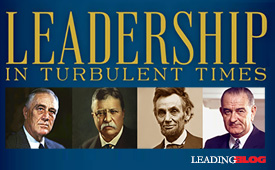 
Posted by Michael McKinney at 11:14 PM
03.18.10

Leaders Change Minds
ROSABETH MOSS KANTER (Evolve!/2001) likens the constant change happening today to the croquet game in Alice in Wonderland, a game in which “nothing remains stable for very long, because everything is alive and changing.” Robert Kriegel adds, “Not only is everything changing, but everything exists in relationship to something else that is changing." He suggests, "If you or your products don't grow, improve and evolve, as in nature—they (and you) will face extinction.” Faced with this understanding, we quite often either freeze and do nothing or go into a frenzy and begin to change everything. Certainly, change must become a part of our orientation. However, the changes must be calculated changes and not a reaction to perceived pressures or change based on the shallow "new-is-better" mindset. As part of our ongoing maintenance (and it should be ongoing)—personally and organizationally—we must take a look at what should not be changed (and some things shouldn't) and what might, could or should be changed. Core values don't change, but methods (approaches) often do. If these things are not considered in advance, the tendency will be to make rash and impulsive moves from one ditch to the other when the pressure to change begins to loom over us. Change has become the mantra for leaders. We often feel the need to move into a situation and shake it up … because then we’re really leading. And if we are not careful, we can get into a change for change’s sake mindset. If something doesn’t change, we aren’t doing our job. But we must remember that when talking about change in a leadership context, we are talking about changing people—their minds—and situations only indirectly. Leaders change conditions through people. Sometimes, the change we need is to get people to hold on—to stay the course—when they would feel like giving up, changing direction or abandoning the mission. Sometimes the status quo is exactly what is called for, and changing people’s minds and perspectives to see that need is the leader’s task. Sometimes, the change we need may indeed look on the outside like no change at all. But it is change just the same. Sometimes our yardstick is not how different it looks but how consistent it is. That takes a lot of changing.
Posted by Michael McKinney at 09:46 AM
05.28.09

Culture Eats Strategy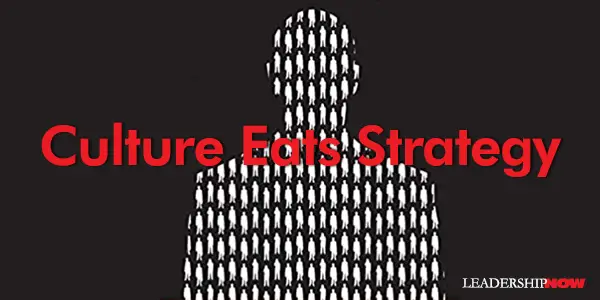
You’re so busy grasping technology in one hand and science in the other, you have no hand left to grasp what’s really important. It’s the human spirit, that’s the challenge, that’s the voice, that’s the expedition.TO create transformation change in an organization you need to change the culture. This may seem to go without saying, but we often try to make changes without changing the underlying belief systems. Belief systems drive behavior. In Transforming Your Leadership Culture, authors John McGuire and Gary Rhodes write, “Organizational culture holds your organization’s aspirations and the spirit of the place. Its beliefs and values define the organization’s core.” To illustrate how endemic the force of belief is within a culture, they relate the following example: Mike, a vice president at National Bank, a prestigious financial organization, tells the story of what came out of an all-day meeting of a group of vice presidents at headquarters: “We brought in VPs and directors from all our locations. We needed to use the largest conference room in the building and had to get special permission to do so.” “Change won’t take hold in operations without change in culture to back it up,” say McGuire and Rhodes. Understanding organizational culture, why it persists, how to change it, and where that change begins is the subject of their book. What beliefs are undermining your change efforts? 
Posted by Michael McKinney at 12:37 PM
01.26.09

You Can’t Order Change: Making Ethics and Compliance a Clear Competitive Advantage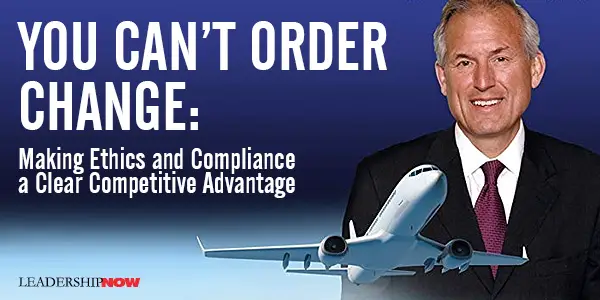
WHEN Jim McNerney became CEO of Boeing in 2005, change wasn’t an option. It was mandated. In 2005 Boeing was facing investigations into illegal business practices, there was the sex scandal, revenue was down, and key people were jumping ship. In short, it wasn’t the place to work. But even when everyone agrees that change is necessary – even vital – it doesn’t come easy. It still has to be approached in a careful and respectful way. You Can’t Order Change, by Peter Cohan, is about how McNerney brought about that change in Boeing. How he cleaned up the mess and changed the culture and revitalized the organization. Probably the biggest task that faced him was the quagmire created by years of costly ethical problems. He had to settle a lawsuit with the government and create a culture of ethics and compliance. This has to be done by example and system changes that encourage ethical behavior and compliance. He said in Boeing Frontiers, “I plan to make leadership development a focus across the company because I believe that as we strengthen our leadership capacities, we can have a positive impact on the company's overall performance. As I've said before, better leaders make better companies. And effective leadership, at all levels of an organization, is based on a foundation of trust, integrity, and escape-free compliance. As we turn up the gain in leadership-development training, we will embed in it an equal emphasis on how leaders can lead with ethics and integrity.” Cohan writes that McNerney made sure that ethics wasn’t a passing fad, but a value that had teeth in it. If the leaders of the organization “have not been behaving in a way that’s consistent with Boeing’s values, he expects them to change their behavior. And if they don’t meet McNerney’s expectations, they lose their leadership roles.” Step one for McNerney, of course, is getting the leaders to act ethically; to set the example. Cohan cites this statement from McNerney: We also realize it all starts with leadership. If an organization’s leaders don’t model, encourage, expect and reward the right behaviors, why should anyone else in that organization exhibit those behaviors? Companies have to take the hugely important step of driving ethics and compliance through their core leadership and Human Resources processes. This must be … and must be seen to be … a central part of the whole system of training and developing leaders and of the whole process of evaluating and promoting people. This is the key.” Critical also to this change is a system that supports and rewards people for getting results ethically and gets rid of people who don’t. Cohan writes, “McNerney let people know that he wanted them to discuss problems and not bury them.” If people didn’t talk about ethics and compliance, he would bring it up. “Ultimately, McNerney wants to avoid surprises about ethical problems that originate at lower levels. I know and you know … that one of the absolute perquisites for success in ethics and compliance is the belief that it is OK for people to question what happens around them.” McNerney’s methods and approach to change have gotten him dramatic results and they are worth studying. 
Posted by Michael McKinney at 01:35 PM
01.23.09

A Downturn Provides the Ideal Opportunity to Force Hard Choices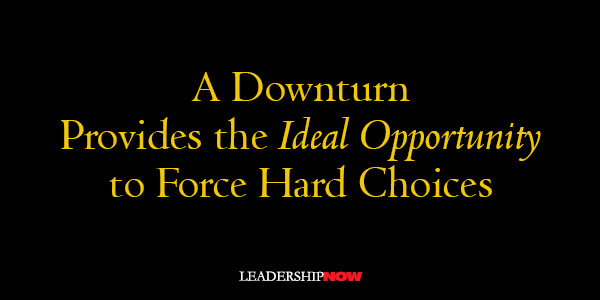
LONDON Business School professor Donald Sull writes in today’s Financial Times that we need to take advantage of the opportunities that are presented by the economic downturn: Major change efforts are difficult in the best of times, and many executives worry that a downturn will halt future progress or reverse any gains made to date. Indeed, in a downturn, managers too often scurry from fighting one fire to the next and thereby lose sight of the longer transformation effort.
Posted by Michael McKinney at 11:29 AM
01.16.09

Maybe What You Need is a Little Disruption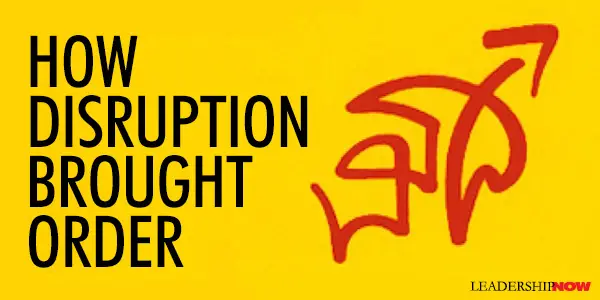
IN TIMES LIKE THIS we need to rethink what we are doing. Hit the reset button. Jean-Marie Dru’s prescription may be just the thing you need. Dru is the President and CEO of TWBA/Worldwide and author of How Disruption Brought Order, calls it Disruption. Disruption is “breaking with the status quo, refusing given wisdom, and finding unexpected solutions. We believe that the best way to help our clients grow their businesses is most often through strategies that involve rupture.” In describing marketing campaigns for Nissan (Shift), Adidas (Impossible is Nothing), Apple (Think Different), and others, he shows how Disruption asks the public to see the brand in a new light and thereby refresh, transform and reinvent it. But, it’s not limited to marketing and advertising. It has application to both your business and your thinking. “If you change nothing within a company you are sure to fail. As you also will if you try to change everything. The key to success lies within your ability to determine the fine line between what must change and what you must not. Fiona Clancy, the TWBA Disruption Director, summaries it this way: Disruption Is: • Being endlessly curious • Keeping an open mind • Looking for new beginnings with larger futures • Anticipating the future without fully expecting it • Accelerating change to your client's advantage • Recognizing patterns of success and building on them • Being creative ahead of the usual agency creative process (Creative is not a department.) • Turning intuition into a discipline, but without devaluing intuition • Gaining stability from going somewhere fast • Being in control rather than controlling • Anticipating change rather than defending against it • Questioning the way things are: imagining the way things could be Disruption Is Not: • Change for change’s sake • Upsetting the client’s organization • A particular creative style • Throwing away the past • Being deliberately wacky • Limited to advertising   
Posted by Michael McKinney at 03:01 PM
08.29.08

An Interview with John Kotter on Urgency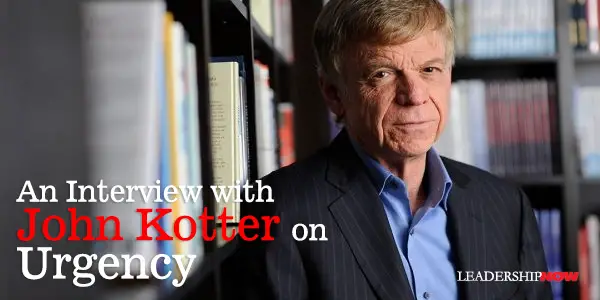
John P. Kotter, Konosuke Matsushita Professor of Leadership, Emeritus at Harvard Business School, is widely regarded as the world's foremost authority on leadership and change. His is the premier voice on how the best organizations actually "do" change. In his newest work, A Sense of Urgency, Kotter shows what a true sense of urgency in an organization really is, why it is becoming an exceptionally important asset, and how it can be created and sustained within organizations. LeadingBlog: Behind urgency seems to be this tension between where you often begin—fear—and then moving on from there to something more positive. It seems like the quickest way to engage people’s emotions is through fear and anger. But as you state in your book “fear and anger can kill hope and stop the growth of a true sense of urgency.” Is it realistic to think that fear and/or anger will completely disappear? Or that we would even want it to? John Kotter: First of all, there are ways to grab people without fear and anger. You can move a complacent group out of complacency without the fear and anger; without hitting them on the top of the head or without jumping out of a closet with a gorilla suit on. But having said that, in some situations that can be effective. The issue is precisely the issue that you raised—some people think that once you’ve got that, you’ve got it. You drive them off their burning platform or whatever with a flaming whip. The reality is it doesn’t work well. Because if you’re trying to get action going—especially if it’s new action and if it’s dealing with an increasingly fast-moving world—fear ultimately drives people to be self-protective, they hide underneath their desks so to speak. Fear turns to anger easily because they’re mad that somebody is scaring them to death. Mad people go and look for grenades and guns. None of that helps. And so when you find people who are trying to, for example, drive a group out of complacency into a state of real urgency to where they can start making something happen if indeed step one is shaking them up in that negative sense, they use that only as kind of a wake-up. It’s a jarring alarm clock that sets a foot out of bed—almost trembling because you wonder if the bomb is going to hit or something. But as quickly as possible they start using methods, if you will to turn those emotions into a kind of positive determination to deal with the very real problems or sometimes opportunities that they had not been dealing with. It’s possible. If you don’t do it, you just get the fear and anger going and you don’t get anywhere. And worse case, it snaps back at you. You know, the people are so angry they burn down your own castle. LB: Obviously you can't create an environment where every day is a fire drill. And there is the notion than if everything is urgent then nothing is really urgent. How do you counteract that perception? JK: Your “every day is a fire drill” comes close to what I call false urgency; which isn’t urgency. False urgency again is very much driven more by fear and anger than anything else. It’s activity not productivity. It’s racing out of the firehouse whether there’s a fire or not. Every day it’s meeting, meeting, meeting—PowerPoint, PowerPoint, PowerPoint—until we’re all so stressed out and exhausted that who can be urgent about anything. If you’re kind of crawling home with your tongue down and stress level at 10—that’s clearly not what organizations need these days. Real urgency is at the intellectual level it's a grasp that there are huge opportunities in the hazards out there, not just your department or outside your office but outside the organization. And more importantly its that kind of emotional, gut-level determination that you’re going to grab stuff and win and do it now. It’s kind of “I’m going to get up every single day and on these very real, big issues that are out there, (not some trivial little junk that surrounds my political arena) I’m going to accomplish something today and make us collectively win.” And that leads just naturally to a hyper-alert behavior. It leads to just faster movement. It leads people because they care so much about winning and doing it now, that if they start becoming overloaded they don’t just stress out and pass out—they care too much. They know that that isn’t going to accomplish anything so they start looking at their agendas and getting rid of the junk that clogs almost all of our appointment calendars or delegating it (if they are in senior positions) so they’ve got the time to deal with it without being exhausted. If you are really determined to make an organization win there is no way you going to win by playing parochial politics—it might help your career a little bit (and some people, of course, do that) but essentially … urgency is a win. For example, my Celtics who happened to win, as we all know, the NBA championship this year. The announcers were relentless in the last game saying that the critical key was that the coach was able to get these guys not to think in terms of “Well, the probability is very high with home-court advantage that we’re going to pull this off”—forget all that stuff—the idea is for us—big underline us—that there’s no way in the world that we’ll win that championship which people emotionally want, unless we get up every day prepared to win the first quarter and the second quarter and then the third quarter, then the fourth quarter. That’s the mindset. And indeed it worked for the Celtics and it works for companies too. The problem is that most companies don’t have nearly enough of that. And it gets more troublesome as the world changes faster around them. LB: Well then the intensity varies naturally. As you said, it’s not a fire drill; it’s not reactive so automatically it varies the intensity based on what you can do that day based on the realities of the situation. JK: Yeah, yeah, yeah. And there’s nothing wrong with this mindset to get up and discover that. You’re realistic and the only thing you can do that day that kind of pushes the agenda in some significant way—not trivial way—is what you say at the end of a meeting. It’s basically a five-minute little thing in a ten-hour day. But you’ve found your five minutes, right? You didn’t just say, “Well there’s nothing I could do today.” And the five minutes is focusing on something that really is important and is helping you collectively win. There are going to be days like that. There are going to be other days where because of the nature of the agenda, who’s around etcetera, etcetera, almost all the day is just pounding away at some critical possibilities for dealing with these big issues. But again, if the emotional set is right—it’s this kind of grinding determination that you just going to make it win. Even in the long day, you obviously come out tired but it is with a fulfilling feeling. LB: When people perceive that everything around them is changing, is it possible to create a sense of stability and at the same time a sense of urgency? JK: I think to some degree, you’ve got to have some stability or very few people can handle it. Very few people can live in a tornado. And as it turns out, if you think about it, it’s not hard to do. It’s almost a perceptual thing. Because you could sit down with somebody, for example, who is saying, “This is nuts. We can’t have this much change going on.” So you say, “Alright, let’s think that one through. Let’s be very literal. What time did you get up this morning?” What does that have to do with anything?” “Just bear with me.” “OK, seven o’clock.” “What time did you get up yesterday?” “Well, around seven.” “What time did you get up the day before?” “OK nothing changed. Did you have coffee this morning?” “Yeah, so what?” “Did you have coffee yesterday morning?” “Yeah, so what?” “Nothing changed.” You can play this game—and I don’t mean a game. A game sounds negative. What you’ll describe, is for most of us, the vast majority of things we do, we did yesterday, the day before and the day before that. In other words, there’s a great stability in all of our lives. But when things start to change on a certain dimension it feels as if we’re in a tornado. And if you can help people to realize that no we’re not floating in air getting ready to be slammed into a wall. As a matter of fact this building hasn’t changed, we still walk from room to room, we’re in a very stable situation. In many, many ways it just that on a few dimensions we’re changing a lot more than we did in the past. The world it feels like “Whoa!” Stability is important, but to some degree it is a perceptual thing. And by the way, the vast majority of things we do aren’t different. I think a lot of it is the rate of change issue. We’re used to the rate of change being x then all of a sudden it’s 4x. The body kind of likes equilibrium and so it kind of goes “Whoa!” And if you can calm it down by pointing out what’s happening. Relax. It’s mostly fable. We can handle this. We can handle this little bit of change. It just feels wild. You can’t just give the two-minute speech I gave you and think that everything is going to be fine. But there is a way to help people to appreciate that reality that I’ve described very tersely. LB: You keep expressing it. JK: Yes, a lot of these things, it’s saying it again and again. You say it in a different way, and you say it again at another time, and after a while, it starts to sink in. 
Posted by Michael McKinney at 09:10 AM
08.22.08

What Do You Mean “Urgent Patience”?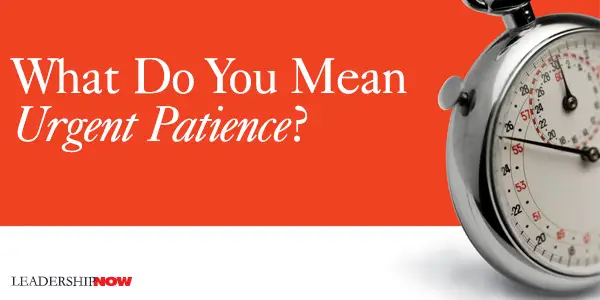
 Behaving urgently does not mean constantly running around. Screaming “Faster-faster,” creating too much stress for others, and then becoming frustrated when no one else completes every goal tomorrow. That is false urgency. People who understand the basics—a faster-moving world, the need for more urgency—fall into the false-urgency trap far too often. 
Posted by Michael McKinney at 08:38 AM
08.20.08

How to Develop and Maintain a Sense of Urgency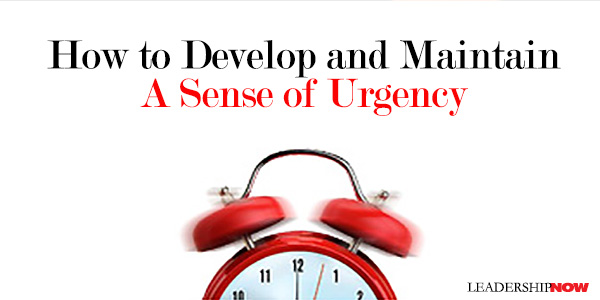
LEADERSHIP and change expert John Kotter finds that the number one problem organizations face when trying to execute change is creating a sense of urgency. Unfortunately, that is the first step in a series of actions needed to succeed in bringing about change. In a time when the rate and type of change is increasing exponentially, organizations (and individuals) can not afford to get (or remain) complacent. In A Sense of Urgency, Kotter states that a true sense of urgency is rare mainly because “it is not the natural state of affairs. It has to be created and recreated.” More often than not, what passes as urgency is more likely a false urgency that he describes as the “unproductive flurry of behavior” built on “a platform of anxiety and anger.” True urgency is different. Is understood by the head (intellectually) but driven by the heart (emotions). It is externally focused and expressed in daily behaviors that move relentlessly toward the target, ever alert to changing conditions and weeding out superfluous activity. Kotter offers four tactics to establish a sense of urgency in any environment: First, bring the outside in. A “we know best” culture reduces urgency. “When people do not see external opportunities or hazards, complacency grows…. With an insufficient sense of urgency, people don’t tend to look hard enough or can’t seem to find the time to look hard enough. Or they look and do not believe their eyes, or do not wish to believe their eyes. Even if seen correctly, and in time, external change demands internal change.” The second tactic is to behave with urgency every day. “Increasingly changing environments create a need for alertness and agility, which demands a sense of urgency that must be modeled by the boss all the time.” A few of the behaviors he details: purge and delegate, speak with passion, walk the talk. Third, find opportunity in crises. A problem with a damage control mind-set is it often eliminates an opportunity. A properly leveraged crisis can be a valuable tool to break through complacency. And fourth, deal with the NoNos – those people that are “always ready with ten reasons why the current situation is fine, why the problems and challenges others see don’t exist, or why you need more data before acting.” Your greatest tool for maintaining urgency is the knowledge that “urgency leads to success leads to complacency.” Keeping up the urgency to stay the course to a long-term goal or to maintain a high level of performance in the face of short-term gains requires a conscious reworking of the four tactics again and again. “Acting Urgently is the tactic that creates results quickly. The other three tactics can all be started immediately, but will take time.”Kotter provides many examples made helpful by his insight. He extracts tips and behaviors that will guide you in developing a culture of urgency in your organization (and life). 
Posted by Michael McKinney at 05:34 PM
07.14.08

Newswire: July 14, 2008 Facilitating Organizational Change
Posted by Michael McKinney at 07:59 PM
05.23.08

How To Troubleshoot ChangeIN Managing Complex Change, Delores Ambrose presented a matrix for creating a strategy for change and for evaluating change initiatives. It can be useful in identifying the reactions people are having to the change process and to understand why those reactions occurred. From there, one can consider what will need to be done to get a derailed change strategy back on track. The basic idea is as follows: It begins with vision – a compelling future state. It provides direction and a sense of unity in a group. Without it, people are likely to feel confused. Change requires that people move into new territory, but if they don’t feel that they have the necessary skills to effectively carry out their part, they will more than likely experience anxiety. Additionally, if there is no incentive, if people don’t see the value of the change – what’s in it for them – they are bound to be resistant to it. Incentives, while giving a rational for change, also help to build consensus. Resources are those things that people feel they will need to carry out a change initiative. They could be physical or emotional resources. Without them they are likely to feel frustrated. Finally, without a clear action plan, people will experience false starts – a sense of being on a treadmill, not really being able to get any traction.
Posted by Michael McKinney at 06:01 AM
04.23.08

How To Have Just Enough Anxiety
 Balance comes from a right attitude and a proper perspective. Dealing with anxiety is no different. The success of great leaders is all about creating the right level of anxiety for growth and performance. It is their uncommon ability to create just enough tension—within themselves and their organizations—that unleashes the human energy that drives powerful leadership, accelerated growth, and winning companies.What’s wrong with having too much or too little anxiety? RR: Too much anxiety comes from negative thinking. When we feel too much anxiety, we attack change. We become combative or controlling as we try to ease the pain we feel. Too little anxiety is grounded in contentment. When we feel too little anxiety, we avoid change. We value the status quo and believe everything will be okay as long as everything stays the same. If your company is going through tough times like a bad economy or a merger, you definitely don’t want too little anxiety. What exactly is “just enough anxiety”? RR: The right level of anxiety gives individuals and organizations an emotional charge that helps us thrive in an uncertain world. As we allow ourselves to experience anxiety as our natural response to change, and learn to modulate it, we’re able to live in the world as it is instead of struggling to make it what we want it to be. And as we get better at living with just enough anxiety, it becomes the energy that drives us forward, stretches us, and challenges us to be better tomorrow than we are today. How can leaders manage anxiety instead of letting it manage them? RR: It starts with self awareness. Leaders who understand what makes them anxious are better able to increase or decrease their anxiety, as needed to create just enough. But, more than that, it has to do with how they relate to change and uncertainty. By admitting what they can and can’t control, they’re able to take charge of their lives while remaining open to the unexpected. They’re at home in uncharted territory. Instead of seeing anxiety as the enemy, they recognize it as their natural companion on the path of change.   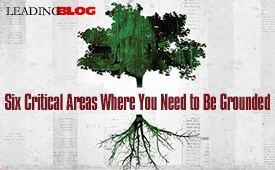 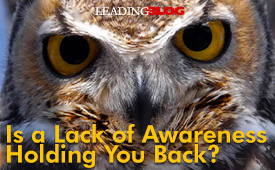
Posted by Michael McKinney at 10:30 AM
02.11.08

Insultants Wanted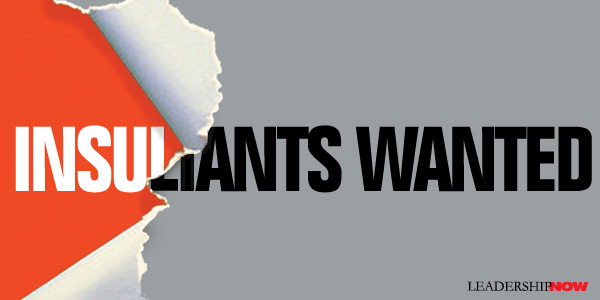 WE need people who will tell us like it is in the right way. Often we don’t like to hear what they have to say but we should never discourage them. Frequently, leaders are the last to know. Keith McFarland author of The Breakthrough Company, calls these straight-shooters insultants (inside consultants). He describes them as those people “willing to ask the tough questions that cause a company to think critically about its fundamental assumptions. The value of insultants is that they will go to great lengths to get their companies to reevaluate a position or adapt to a changing environment.”
WE need people who will tell us like it is in the right way. Often we don’t like to hear what they have to say but we should never discourage them. Frequently, leaders are the last to know. Keith McFarland author of The Breakthrough Company, calls these straight-shooters insultants (inside consultants). He describes them as those people “willing to ask the tough questions that cause a company to think critically about its fundamental assumptions. The value of insultants is that they will go to great lengths to get their companies to reevaluate a position or adapt to a changing environment.”
If you think that you welcome these people, think again. A survey showed that while 90 percent of CEOs believed that their companies regularly implemented ideas that the CEO initially didn’t like, only 60 percent of their direct reports agreed. McFarland reports that people tend to differ to authority and rank because they feel that they must know better. “But often authority figures are wrong, and if an organization doesn’t have a strong insultant culture, errors are likely to be propagated throughout the company.” If you feel you are an insultant, don't think you begin by charging in like a bull in a china shop. There is a right way and a wrong way to do things. You are trying to make the leader successful, not trying to show how smart you are or place the spotlight on yourself. Good insultants must learn to excel at relationships based on genuine care for others. McFarland offers these tips that one would do well to heed:
As a leader, you gain nothing by not knowing what people are thinking. People with ideas and challenges to your way of doing things are not necessarily being insubordinate. They are practicing leadership. Leaders can encourage a candid environment be celebrating productive failure, involving people enough in the issues that they can make intelligent contributions, focusing on both employees and customers that have left the company, and using humor to encourage frankness and trust. 
Posted by Michael McKinney at 01:47 PM
01.28.08

Top-Down Change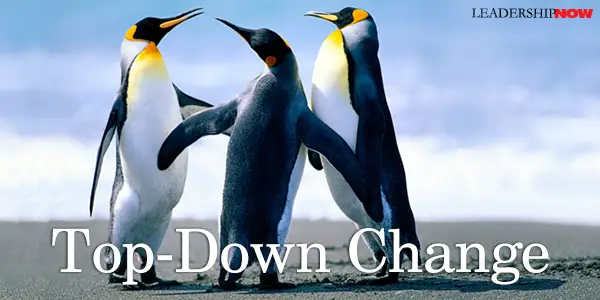
THE following comment was made regarding John Kotter’s book Our Iceberg Is Melting and the 8-steps for leading change presented in it: “I've always interpreted John Kotter's 8 Step Change Framework as top-down. And since most top-down change fails, I've been wary of the 8 Steps.” Top-down change doesn’t fail because it is top-down. Top-down change fails – as does any kind of change – when it is not implemented properly. Hence, the need for Kotter’s eight-step change framework. “Top-Down” isn’t the problem. We need not be so afraid of it. Top-down hierarchies or approaches are common and natural in most efforts humans undertake to organize themselves. Top-down hierarchies unfortunately and incorrectly are often equated with authoritarianism. This is understandable. To be fair, it is common to find people at the top of these organizations that let their human nature get the best of them and become controlling, dictatorial, or just in general, inappropriate in their relationships with those under them. But it doesn’t make the organizational concept itself bad – just poorly executed. This isn’t a structure problem, but a human one. We need leaders that are humbled by their role and not taken by it. Certainly, change can be initiated from anywhere in an organization. A good leader knows that good ideas can be found at all layers of any organization and actively seeks them out. However, no matter who you are, when seeking to make a change, it should be remembered, that if those at the top of an organization, the leader of any group, or the designated decision-maker(s), don’t see the value of the change and commit to it, the change will fail regardless of the perceived structure or where it is coming from—up or down. Even “leaderless” organizations (an authority-disguising term itself) have structure and levels of authority even if temporary or shifting. Change happens when someone commits to a new way of doing things and leads others to do the same. There are processes, like Kotter’s 8-step program, that help one to do that. The principles apply whether one is leading top-down, up, or even among a group of friends. Wherever you find yourself in a hierarchy, your change initiative must be communicated properly for others to receive it or act upon it. Kotter’s first step is to take the issue to the right people. At that moment you are in the driver’s seat. 
Posted by Michael McKinney at 03:23 PM
11.21.07

How to Change Anything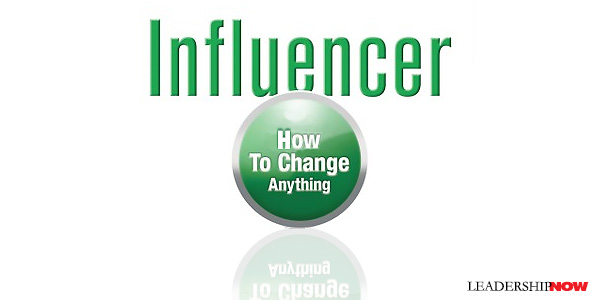
God grant me the serenity to accept the things I cannot change; courage to change the things I can; and wisdom to know the difference. THE authors of Influencer: The Power to Change Anything claim that they can show you how to change anything. Well, nearly everything. They suggest that most of the time we cop out. We comfort ourselves with the Serenity Prayer and move on. Maybe it’s not the courage we lack but the skills to change the things we can. The authors set about to do just that. “If you want to change the world, you eventually have to change how people behave. And if you want to change how they behave, you have to first change how they think.” The key idea is this: “A few behaviors change drive a lot of change.”What that means is, if you want to effect change, then while casting a vision is important (that is, what you want people to achieve), what you need to focus on is behaviors—what you specifically want people to do. If you determine the foundational behaviors upon which everything you want changed stands, and change those things, then everything else changes with it.
There is more than one way to influence and if you are only using one of them as a matter of habit, it may explain why you are having difficulty bringing complex and resistant problems to a solution. There are six sources of influence that drive our behavior divided between two domains—motivation and ability. They reason, “Virtually all forces that have impact on human behavior work on only two mental maps—not two thousand, just two. At the end of the day a person asks, ‘Can I do what’s required?’ and ‘Will it be worth it?’ Influencer presents a model that organizes influence in to 6 general strategies and clearly explains how to make use of these strategies in your own change issues.
Influencer is brought to you by the same group that produced such great books as Crucial Confrontations and Crucial Conversations: Tools for Talking When Stakes Are High. 
Posted by Michael McKinney at 11:53 AM
10.05.07

When is it Time to Move On?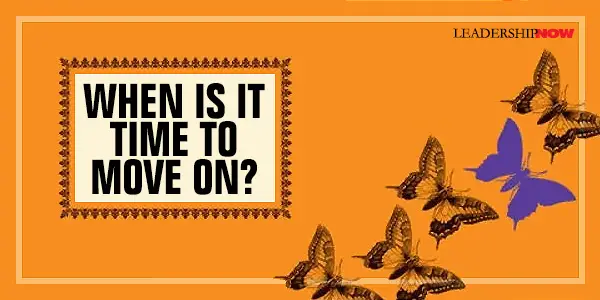 Managing Change is a one in a series of books from the Harvard Business School Press, that presents interviews with top leaders from various fields. In chapter 12 is one such interview with CEO of GenSpring Family Offices (formerly Asset Management Advisors), Maria E. "Mel" Lagomasino.
Managing Change is a one in a series of books from the Harvard Business School Press, that presents interviews with top leaders from various fields. In chapter 12 is one such interview with CEO of GenSpring Family Offices (formerly Asset Management Advisors), Maria E. "Mel" Lagomasino.
Faced with a new merger that would change the culture of the organization, Lagomasino, then chairman and CEO of JP Morgan Private Bank, had to make a tough decision to step down at the top of her game and move on. Here are some of her thoughts on the process: This is the toughest lesson, I think; after you devote yourself to a company and to a lifelong career, and you’ve been very successful—as I have been lucky enough to be—to be able to say, “We’ve come to the point where you need to step down.” This is the time when you have to know when to fold them. 
Posted by Michael McKinney at 12:04 AM
08.31.07

You Can Change!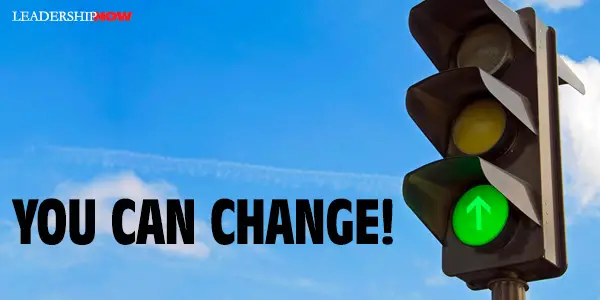
WHEN we take personality tests we need to understand that they are snapshots not indictments. They are a point to grow from. It’s easy to confuse behavior and personality. Personality is reflected in behavior. But, behavior can be changed. One may be especially competitive. However, one need not be boorish or rude. In a recent TeleForum presented by LeadingNews, Marshall Goldsmith, author of What Got You Here Won’t Get You There, stated that personality testing can lead to stereotyping. To say my personality type is this and is unchangeable is wrong thinking. Executive coaches that believe that people can change are much more effective than executive coaches that do not believe people can change. This may seem like a “Duh!” moment, but it is surprising how many people talk about personality testing as though people cannot change. If you don’t believe people can change, coaching is the wrong business for you to be in. Goldsmith commented on a common misconception surrounding the new emphasis we now see being placed in the build-on-your-strengths movement. The idea of building on your strengths is an effective life strategy but not an excuse. He stated: The build-on-your-strengths idea makes total sense when it’s at the level of the occupation. For example, Tiger Woods should be a golfer, not a stand-up comedian. He’s building on his strengths becoming a golfer and he shouldn’t be a stand-up comedian. On the other hand, I think what happens on the build-on-your-strengths stuff, is people misinterpret it. So they would say, “Well, Tiger Woods is a great driver, so he doesn’t have to worry about putting. He can ignore his putting.” He really cannot ignore his putting. It’s part of his job. If you’re a leader and you’re great at strategy but terrible with people, you can’t just sit there; if your CEO, and say, “It doesn’t matter.” It does matter. It all matters. You can’t sit there an ignore part of your job and say “I’m not good at that, therefore, I have an excuse to ignore it.” All that does is reinforce a useless stereotype. While most advocates of build-on-your-strengths do not encourage that, Goldsmith is right. The idea is often misinterpreted. We must build on our strengths and minimize activities that call upon our weaknesses, but our weaknesses have to be dealt with. And that requires some behavior modification. Too often it can be taken an excuse to do-your-own-thing and not a position to grow and learn from. We can’t let ourselves fall into the trap of saying, “That’s just the way I am” because it’s hard to change. It may be the way you are, but you can be better. You can grow if you decide to. As a leader, you have an obligation to. Mark Sanborn said in a recent interview that he thinks most of us “sell ourselves short in terms of the impact that we can have in the world or in the marketplace, or in our homes and communities. We all have the opportunity, and maybe to a degree, an obligation, to take whatever talents we've been given and develop them to the fullest, so that we can more positively benefit and contribute to others.”
Posted by Michael McKinney at 09:20 AM
08.08.07

Rick Warren: 5 Steps to Leading Change
IN a Christianity Today Leadership Journal interview with Rick Warren, he made some observations about renewal and change that apply to any organization (and really individual change as well). He has found that we go through five renewals and typically in the following order: 1. Personal Renewal This gets at a renewal of the heart—knowing yourself and getting your values, priorities, and purpose straight. The first step of any leader is to first get themselves right. Of course, this is a lifelong cyclical process. You never get it right and move on. It should happen concurrently with everything else you do in your life. 2. Relational Renewal Warren says, “It’s loving your neighbor as yourself.” A leader can’t lead unless they have a solid, honest relationship with their people. Getting your attitude right about other people—how you value and respect others—is foundational to effectively leading others. It comes out in many ways and will affect how people react to your message. 3. Purpose Renewal What am I supposed to be doing? Where are we going? We are not here just for ourselves. “We have work to do.” 4. Structural Renewal Warren says, “You can’t put new wine in old wineskins. I once asked Peter Drucker, who was my mentor for over 20 years, ‘How often do you have to change the structure in a rapidly growing organization?’ He said about every 40 percent growth. (Now, since that time, I’ve heard him use two other numbers, so I think he was just making it up.) But the point is that structural renewal happens pretty often.” To sustain the change you need to structure everything you do so as to guide your behavior to be in alignment with your values, attitudes about other people, and your purpose; why you do what you do. 5. Cultural Renewal The first four renewals eventually become the catalyst to make the change or renewal part of our thinking and thus our behavior. We become what we say we are.
Posted by Michael McKinney at 09:09 AM
06.29.07

History Speaks on Change and Innovation
THE legendary historians Will and Ariel Durant distilled the lessons of thousands of years of history to give us this balanced conclusion regarding change: Out of every hundred new ideas ninety-nine or more will probably be inferior to the traditional responses which they propose to replace. The tension between the old and the new produces thoughtfulness, encourages creativity, and develops understanding. Good innovations come with an understanding of the past. We should respect the past but never allow it tyranny over the new. If we are quick to dismiss the past, how do we know when to embrace the new?
Posted by Michael McKinney at 12:37 AM
06.18.07

Breaking Old Habits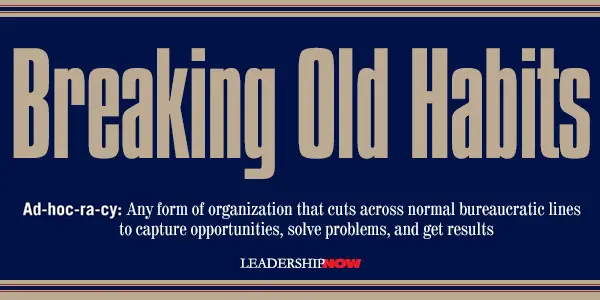 Robert Waterman, Jr. tells us in his book Adhocracy—any form of organization that cuts across normal bureaucratic lines to capture opportunities, solve problems, and get results—that we have created organizations that are resistant to change. He writes:
Robert Waterman, Jr. tells us in his book Adhocracy—any form of organization that cuts across normal bureaucratic lines to capture opportunities, solve problems, and get results—that we have created organizations that are resistant to change. He writes:
We’re controlled by ideas and norms that have outlived their usefulness, that are only ghosts but have as much influence on our behavior as they would if they were alive. He suggests four ways to help us break out of our comfort zones:

Posted by Michael McKinney at 08:41 AM
06.11.07

Bill Gates on Turning Caring Into Action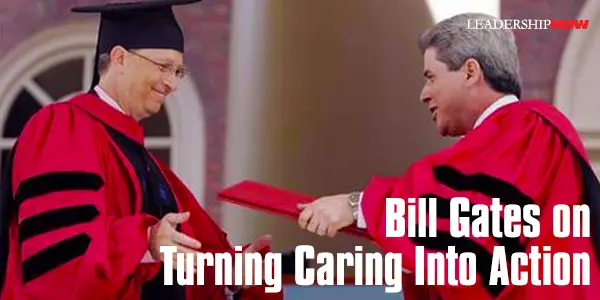
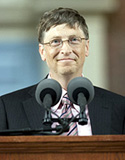 If we can find approaches that meet the needs of the poor in ways that generate profits for business and votes for politicians, we will have found a sustainable way to reduce inequity in the world." Below are some edited excerpts from that speech. You can get the full text at the Harvard University Gazette or watch the video presentation below. The barrier to change is not too little caring; it is too much complexity.
Posted by Michael McKinney at 06:28 AM
03.26.07

5 Leadership Lessons: Getting Unstuck
Getting Unstuck: How Dead Ends Become New Paths by Timothy Butler is an interesting look at a chronic human problem: not being able to see the forest for the trees. There are times when we get stuck and find ourselves stewing in our own juices. Our stuck feeling comes from our inability to get our thinking moving again. Sometimes, we get hit so hard that it is hard to get our mind off of the point of impact and instead focus on our response. The decision to get on with it frees us to rally our resources and broaden our repertoire of responses. We will, with the proper outlook, grow to a higher capacity to handle the next crisis that life throws at us. Bulter offers these thoughts:

Posted by Michael McKinney at 09:06 AM
01.15.07

Martin Luther King Jr. and Adaptive Change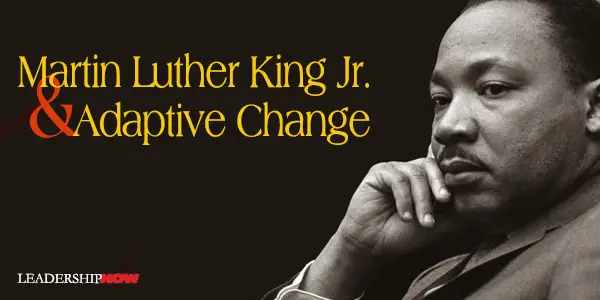
W In Leadership on the Line, authors Ronald Heifetz and Marty Linsky explain, “To sustain momentum through a period of difficult change, you have to find ways to remind people of the orienting value—the positive vision—that makes the current angst worthwhile.” 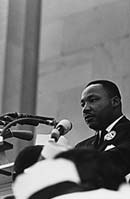 “As you catalyze change, you can help ensure that you do not become a lightning rod for the conflict by making the vision more tangible, reminding people of the values they are fighting for, and showing them how the future might look. By answering, in every possible way, the “why” question, you increase people’s willingness to endure the hardships that come with the journey to a better place.” This is what Martin Luther King Jr.’s accomplished in his famous I Have a Dream speech. He painted a tangible vision when he said: I have a dream that my four little children will one day live in a nation where they will not be judged by the color of their skin but by the content of their character. I have a dream today. Interestingly enough, the civil rights speakers who were to speak on that day—August 28, 1963—argued amongst themselves who would speak when and for how long.
Posted by Michael McKinney at 07:11 AM
11.27.06

Sir John Harvey-Jones on Change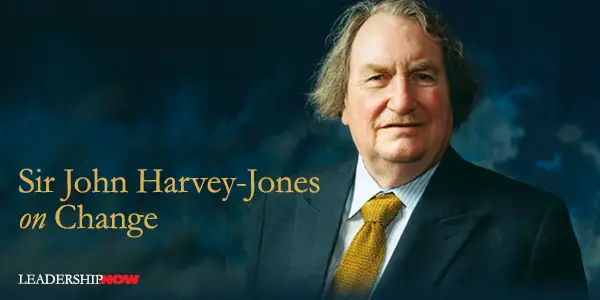
THE late John Harvey-Jones became the legendary Chairman of Imperial Chemical Industries (ICI) in 1982 and was knighted in 1985. His leadership has made him one of the most admired business leaders in the world. In his memoirs he wrote the following on change: “The reality of change is inescapable. If we do not change the inexorable forces of economics [then] shifts in the external world will force a change upon us. One might say, under such circumstances, how much better to change before we are changed. But in real life this historical perspective is very difficult to appreciate, and we find most change uncomfortable. We cling to sets of values and conditions which we recognize and which are undemanding of our own commitment and effort. It is a fool’s paradise, just as much as the hope that somehow one can get away from civilization, or that one can put the clock back. One cannot, and indeed one should not, because while it is foolish to throw away the past, it is the future that we can affect. The ability to create and manage the future in the way that we wish is what differentiates the good manager from the bad.” 
Posted by Michael McKinney at 07:30 AM
10.16.06

Grassroots Change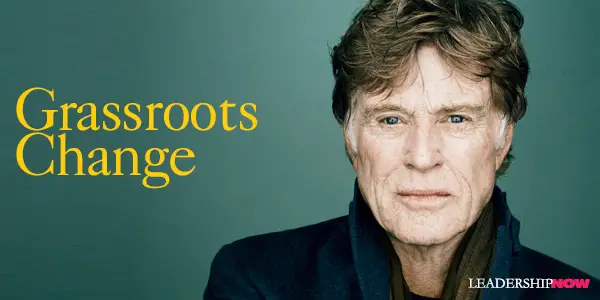
Robert Redford has focused considerable energy at bringing about change on issues that are important to him. Common sense or emotional intelligence will tell you that the best way to change things is not to charge in. You can be results-driven without being a bull-in-a-china-shop. Change can begin at any level. In a Harvard Business Review article, Turning an Industry Inside Out: A Conversation with Robert Redford, he notes two approaches to change in an organization or industry: top-down and bottom-up. The former is the more difficult and the latter takes longer and requires considerable skill and patience. Some lessons he has learned over the last 20 years:
Posted by Michael McKinney at 09:47 AM
10.09.06

Carly Fiorina On Leading Change
RECOUNTING her days at Lucent, Carly Fiorina writes in Tough Choices about the challenge of bringing about organizational change:  As is true whenever a new leader issues a challenge, a critical mass of the old-timers must rise to that challenge. If this fails to happen, the new leader is simply ignored. People who’ve never operated in large, complex companies are often surprised to learn that even a change agent with title and position can be effectively rendered powerless by people’s collective decision to maintain the status quo. A boss can hire and fire. A boss can reallocate people and money. A boss can measure and reward. A boss can threaten or inspire. Each of these actions and decisions will be analyzed and interpreted by an organization. Some interpretations will motivate change. But no boss, even a president or a CEO, can order people to change. No boss can force people to behave differently. People operate based on their own free will. They will make their own decisions, and in big companies, those decisions are easy to hide. 
Posted by Michael McKinney at 08:18 AM
09.07.06

Leading Change: Our Iceberg is Melting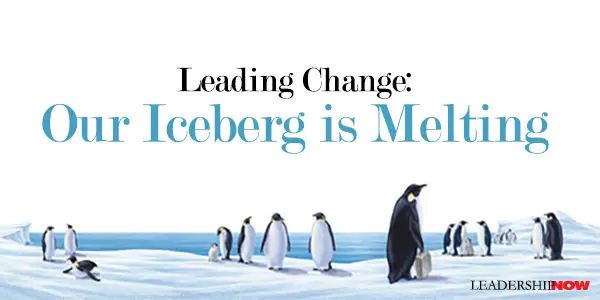
H There is really no organization that is not faced with a changing situation. Technology and globalization are perhaps the biggest issues impacting most organizations today. The difficulties that loom for creating that change can be intimidating. Kotter weaves an eight-step process for successful change through the story. These steps can help you get your mind around the change process. SET THE STAGE: 1. Create a sense of urgency. (not panic) “Problem. What Problem?” Take the issue to the right people. DECIDE WHAT TO DO: 3. Develop the vision and change strategy. Change to what? Too many change initiatives might indicate that you haven’t done this step well. You’ll get change burnout and more resistance. MAKE IT HAPPEN: 4. Communicate for understanding and buy-in. The book helps you to see change differently. The importance of emotions in the change process is emphasized. As recent discoveries about the brain have affirmed, the emotional side of how change happens can have a great impact on a successful change initiative. This is a great story and sure to generate discussion ... and change! Check it out.
> 
Posted by Michael McKinney at 12:48 AM
08.09.06

The Tripping Point
SUCCESSFUL PEOPLE lose more than the average person because they keep trying. Yet it often only takes one success to outweigh the many failures. A successful person takes smart risks. Persistence and the ability to deal with disappointment and often rejection are key characteristics for the successful person. In Success Built to Last by authors Jerry Porras, Stewart Emery and Mark Thompson, they call the inevitable stumbles or failures on the way to success, tripping points. It is these tripping points that successful people “harvest.” Successful people “think of both success and failure as feedback. The question is not whether they won or lost this round, but what they will do with the feedback.” They explain, “The bad news is that even when you’re doing your best, if you fail at any point, you’ll get harsh reviews. Think of the last time you got good press for bad news. … For much of the journey, innovation is hard work rewarded by bad headlines. “This is just one more reason why people hide out from pursuing their full potential to follow their dreams and serve the world. Enduringly successful people aren’t immune. They just tolerate risks, feel the fear, take the brickbats, learn from failure, and do what matters to them anyway.” Failures are inevitable. After you deal with them you must refocus your vision, learn from the failure and make new mistakes. The important thing is to keep moving forward. Successful people “become more resolute after losing a battle they believe in because they learn from the loss—it gives them a better idea of what matters, what works, and what doesn’t." They interviewed, among hundreds of others, retired Stanford professor James G. March who added this, “Short-term reality is an insult to the vision. You have to be self-delusional to create change—it’s a useful craziness guided or founded on your clear identity and knowing what you must do.”The book is an excellent survey of how enduringly successful people have made success happen. There are a lot of great nuggets in here worth taking a look at. We’ll look at a few more of them in the days ahead. 
Posted by Michael McKinney at 12:06 AM
08.07.06

The Neuroscience of Leadership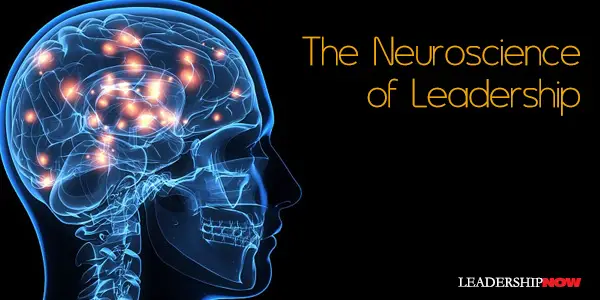
 David Rock, author of Quiet Leadership and Jeffrey Schwartz, a research psychiatrist at the School of Medicine at the University of California at Los Angeles report in Strategy+Business that scientists have "gained a new, far more accurate view of human nature and behavior change because of the integration of psychology (the study of the human mind and human behavior) and neuroscience (the study of the anatomy and physiology of the brain). As a result, researchers have found hitherto unseen neural connections in the living human brain. Advanced computer analysis of these connections has helped researchers develop an increasing body of theoretical work linking the brain (the physical organ) with the mind (the human consciousness that thinks, feels, acts, and perceives)." Several conclusions about organizational change can be drawn from the research that make the art and craft of management far more effective:
Here is the pivotal finding with important implications: Concentrating attention on your mental experience, whether a thought, an insight, a picture in your mind’s eye, or a fear, maintains the brain state arising in association with that experience. Over time, paying enough attention to any specific brain connection keeps the relevant circuitry open and dynamically alive. These circuits can then eventually become not just chemical links but stable, physical changes in the brain’s structure. What does this mean on a practical level? Focusing on the problem only ingrains it in the mind. Based on what we know now the focus should be on the new behavior. The process begins by painting a broad picture of the goal, without specifically identifying the changes that individuals will need to make. Then the leader should help his team to picture the new behaviors in their own minds, and in the process develop energizing new mental maps that have the potential to become hardwired circuitry. The leader would then get their team to focus their attention on their own insights, by facilitating discussions and activities that point toward the goal. After that, the job would be to regularly provide “gentle reminders” so that the new behavioral maps become the dominant pathways along which information, ideas, and energy flow. The leader also needs to catch the team when they get sidetracked and gently bring them back. The power truly is in the focus, and in the attention that is paid. Perhaps you are thinking, “This all sounds too easy. Is the answer to all the challenges of change just to focus people on solutions instead of problems, let them come to their own answers, and keep them focused on their insights?” Apparently, that’s what the brain wants. And some of the most successful management change practices have this type of principle ingrained in them. As Peter F. Drucker said, “We now accept the fact that learning is a lifelong process of keeping abreast of change. And the most pressing task is to teach people how to learn.” In the knowledge economy, where people are being paid to think, and with constant change, there is more pressure than ever to improve how we learn. Perhaps these findings about the brain can start to pull back the curtain on a new world of productivity improvement: in our ability to bring about positive, lasting change in ourselves, in our families, in our workplaces, and in society itself. Luc de Brabandere's The Forgotten Half of Change: Achieving Greater Creativity through Changes in Perception is also good in this regard. 
Posted by Michael McKinney at 08:24 AM
04.11.06

“If it ain't broke...” Thinking Leads Nowhere
ROSABETH MOSS KANTER (Evolve!/2001) likens the constant change happening today to the croquet game in Alice in Wonderland, a game in which “nothing remains stable for very long, because everything is alive and changing.” Robert Kriegel adds, “Not only is everything changing, but everything exists in relationship to something else that is changing." He suggests, "If you or your products don't grow, improve and evolve, as in nature—they (and you) will face extinction.” Faced with this understanding, we quite often either freeze and do nothing or get into a frenzy and begin to change everything. Certainly, change must become a part of our orientation. It’s difficult to be a leader today without that orientation. However, the changes must be calculated changes and not a reaction to perceived pressures or change based on the shallow "new-is-better" mindset. As part of our ongoing maintenance (and it should be ongoing)—personally and organizationally—we must take a look at what should not be changed (and some things shouldn't) and what might be or could be changed. Core values don't change, but methods (approaches) often do. If these things are not considered in advance, the tendency will be to make rash and impulsive moves from one ditch to the other when the pressure to change begins to loom over us.
Posted by Michael McKinney at 10:12 AM
|
BUILD YOUR KNOWLEDGE
 

How to Do Your Start-Up Right STRAIGHT TALK FOR START-UPS 
Grow Your Leadership Skills NEW AND UPCOMING LEADERSHIP BOOKS 
Leadership Minute BITE-SIZE CONCEPTS YOU CAN CHEW ON 
Classic Leadership Books BOOKS TO READ BEFORE YOU LEAD |
|